

The heart of the Blackmore Vale
March ‘24
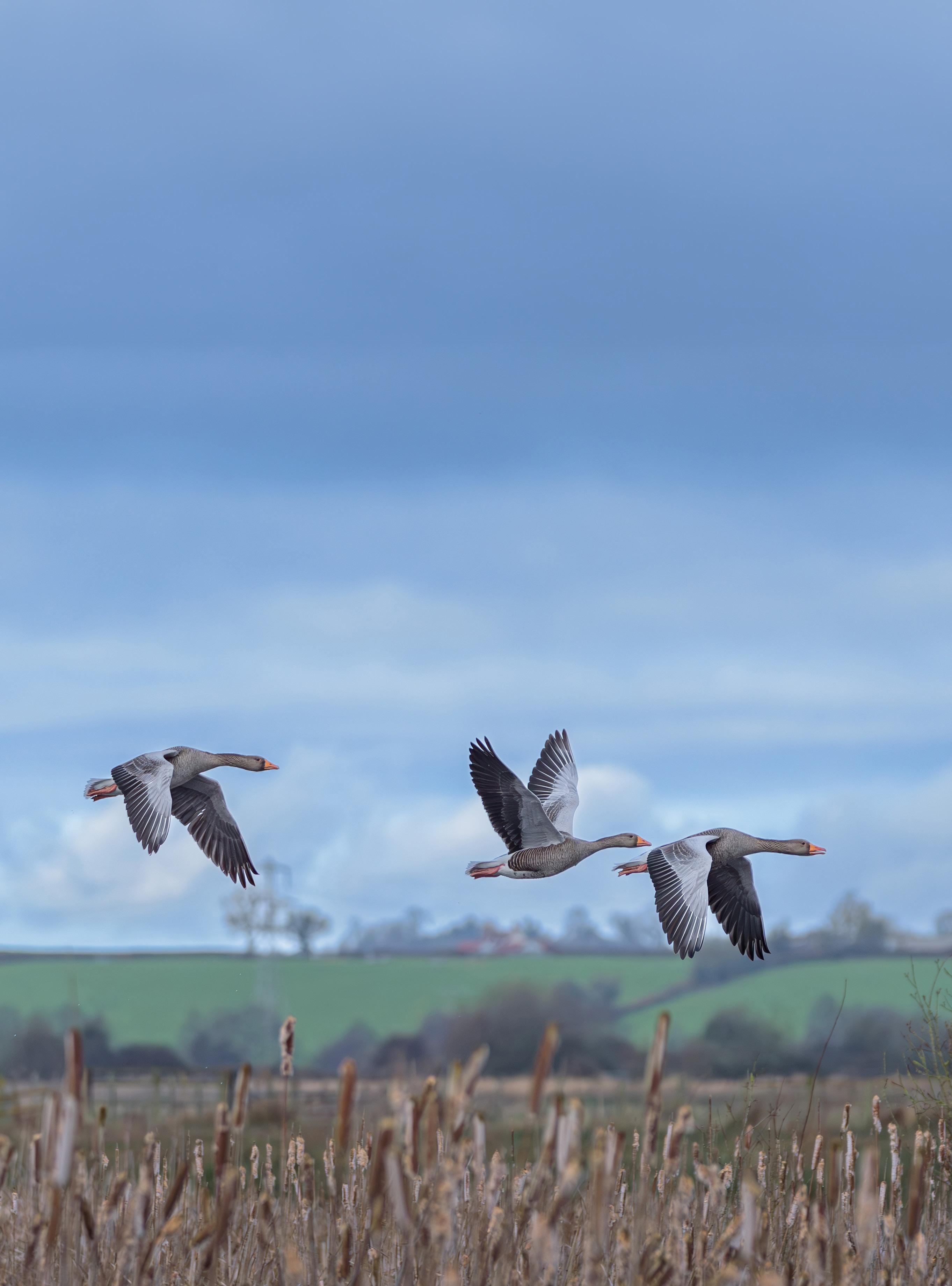
REAL STORIES, REAL JOURNALISM – and unapologetically, exclusively digital ISSN 2634-8810

Lucy Nolan turned her love of gundogs into a business – now she’s Dorset’s only Accredited Pet Gundog Instructor | Page 28
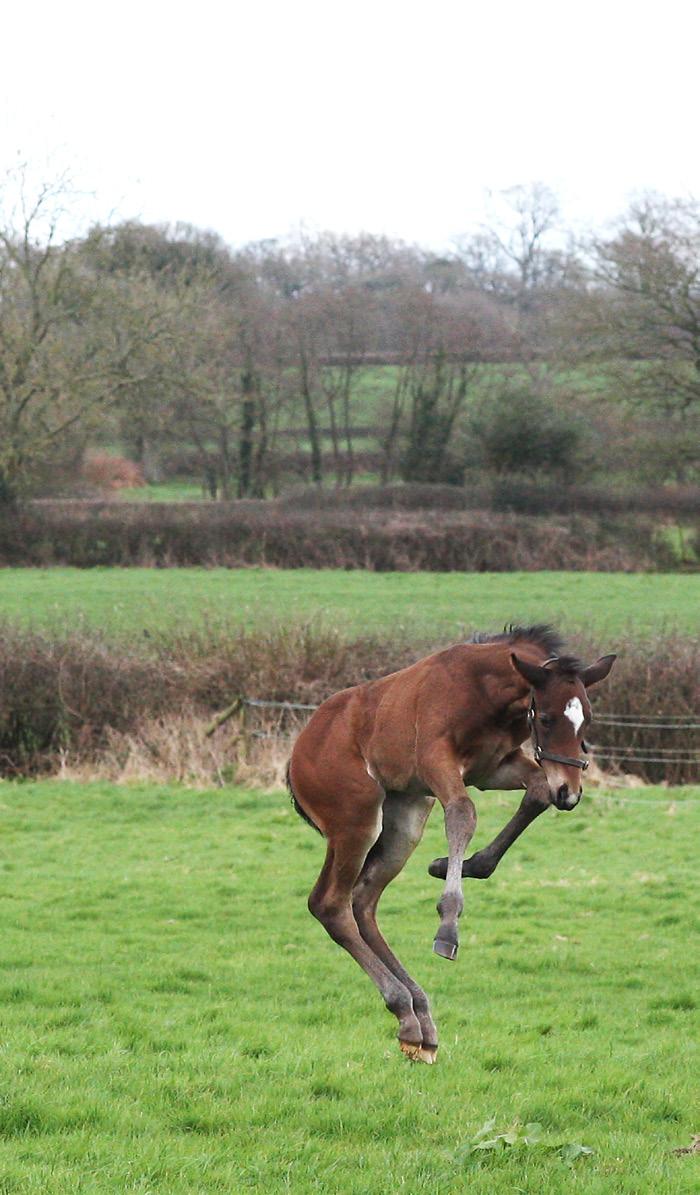
Equestrian’s BACK! And it returns with plenty of foal foolishness (I sense this won’t be the last we see of this bonkers boy Gawler) | Page 86
Front

Guy Deacon from Sherborne, a retired colonel, has completed an 18,000 mile solo journey to Cape Town – while living with stage 3 Parkinson’s Disease | Page 4

One in three of us dreams of throwing in the day job – we talk to three awardwinning local business owners who did just that | Page 32
We need your help this month - can you decipher the handwriting on the back of this postcard? | Page 77

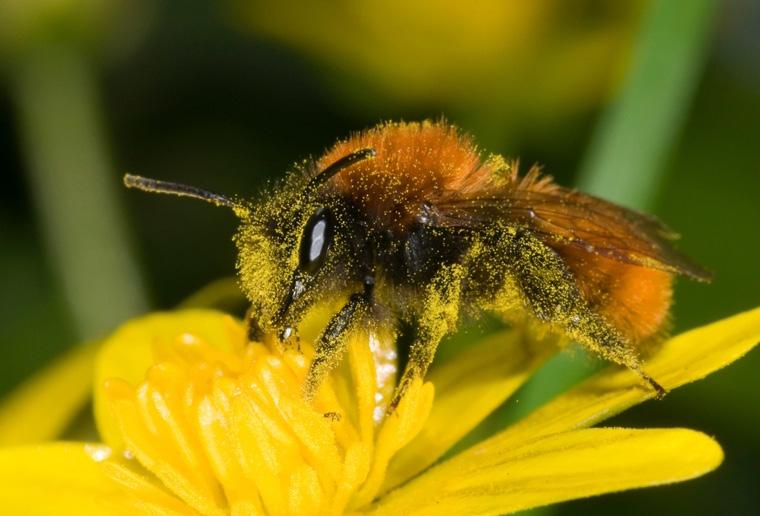
Wildlife writer Jane Adams introduces us to the littlest fox in the garden | Page 92
The BV magazine - March ‘24
cover: Greylag Geese by Paul Dyer
IN THIS ISSUE
We know, it’s a HUGE magazine, and the order can change month to month. So we make it easy for you: just like grabbing the sections you like best from the Sunday papers, you can click the number below to jump straight to the section you want. Or you can just go make yourself a mug of tea and start from the beginning...

Time’s peculiar. I think I can say with confidence that January was at least 10 weeks long ... and yet February was about 11 days maximum, by my very scientific reckoning. This month, I interviewed a number of local business owners – entirely different businesses, at entirely different stages, from a one-year-old start up to a 30-year established firm.
But each of those business owners had done exactly what Courtenay and I – and so many others – have done. At one point they took a deep breath, gritted their teeth and decided to go for it.
Running your own business isn’t for everyone –frankly, many people get a glazed look of horror when you start to talk about the realities of it.
But when I asked each of those entrepreneurs what they loved about running their own business, the answer was always the same – and it’s the same I would give, and I suspect the same thing that every small business owner would say.
It’s the independence and the freedom. You’ve never worked so hard, but you’ve never minded less – the benefits of being your own boss far outweigh the down sides.
It’s no wonder that one in three adults in the UK dreams of quitting their job and setting up on their own. Whether it’s a secret baker who yearns for a sticky bun business, or a surveyor tired of having their day micro-managed. It doesn’t matter what –some people just decide to give it a go.
It takes courage to start, and grit and determination to make it succeed. If you know someone who runs their own business, never underestimate how important it is to them, or how fast they’re learning. And do try and support them – it’s pretty easy and it’s free. Just follow them on social media and like and share their posts. It really does help. Tell your friends and family about them. And tell them yourself just how good they are. That matters. The BV team work incredibly hard to support and raise up local small businesses – a quick flick through and I have just counted 25 of them in this one issue (not paid adverts, just us writing about local people doing good things). Let’s all do more than just applaud from the sideline – we should stop and try that brand new café, browse our friend’s shop, or just pass on a good word about them. Small gestures that really matter. And if you’re one of the one in three dreaming of taking the plunge, may I point you to page 32? There’s some priceless advice in those pages from people who learned their lessons the hard way. Have a lovely month – I’ll see you in April. So about 61 days, yes?
Courtenay, he’s the organised one...

3 The BV magazine, March 2024
28 A Country Living – Lucy Nolan 126 Announcements 96 Art - Toby Wiggins 51 Book corner 32 Business news 45 Community News 86 Equestrian 80 Farming 101 Food & Drink 57 Health 121 Jobs 48 Letters to the Editor 76 Local history 4 News 70 Night Sky 109 Out of doors 41 Politics 50 Puzzles 114 Reader's photography 74 Rural Matters – CPRE 72 Take a hike 60 What's on 92 Wildlife
INDEX
Contact The BV Team: 01258
Hitchcock editor@BVmagazine.co.uk Advertising:
Hitchcock advertising@BVmagazine.co.uk
Try
472572 Editor: Laura
Courtenay
Sub-editors: Gay Pirrie-Weir Fanny Charles Everything else:
All images © Guy Deacon
by Rachael Rowe

From here to Africa, alone with my Parkinson’s Disease
Guy Deacon CBE has just completed an inspirational 18,000 mile solo journey from London to Cape Town while living with Parkinson’s Disease
Guy first became interested in travelling to Africa when he was a teenager at Sherborne School: ‘In my last year, I received a travel guide about Africa, and on the cover was a photo of people setting up camp in the Sahara. And I wanted to do it. I thought it was fantastic – but I never found time to do it. I’ve always had that dream, since I was 18. I retired in 2019, and I finally had the time to do the journey, so I just thought I’d get on and do it.
‘I already had Parkinson’s by then and I did think everything might be too difficult, but a friend said:
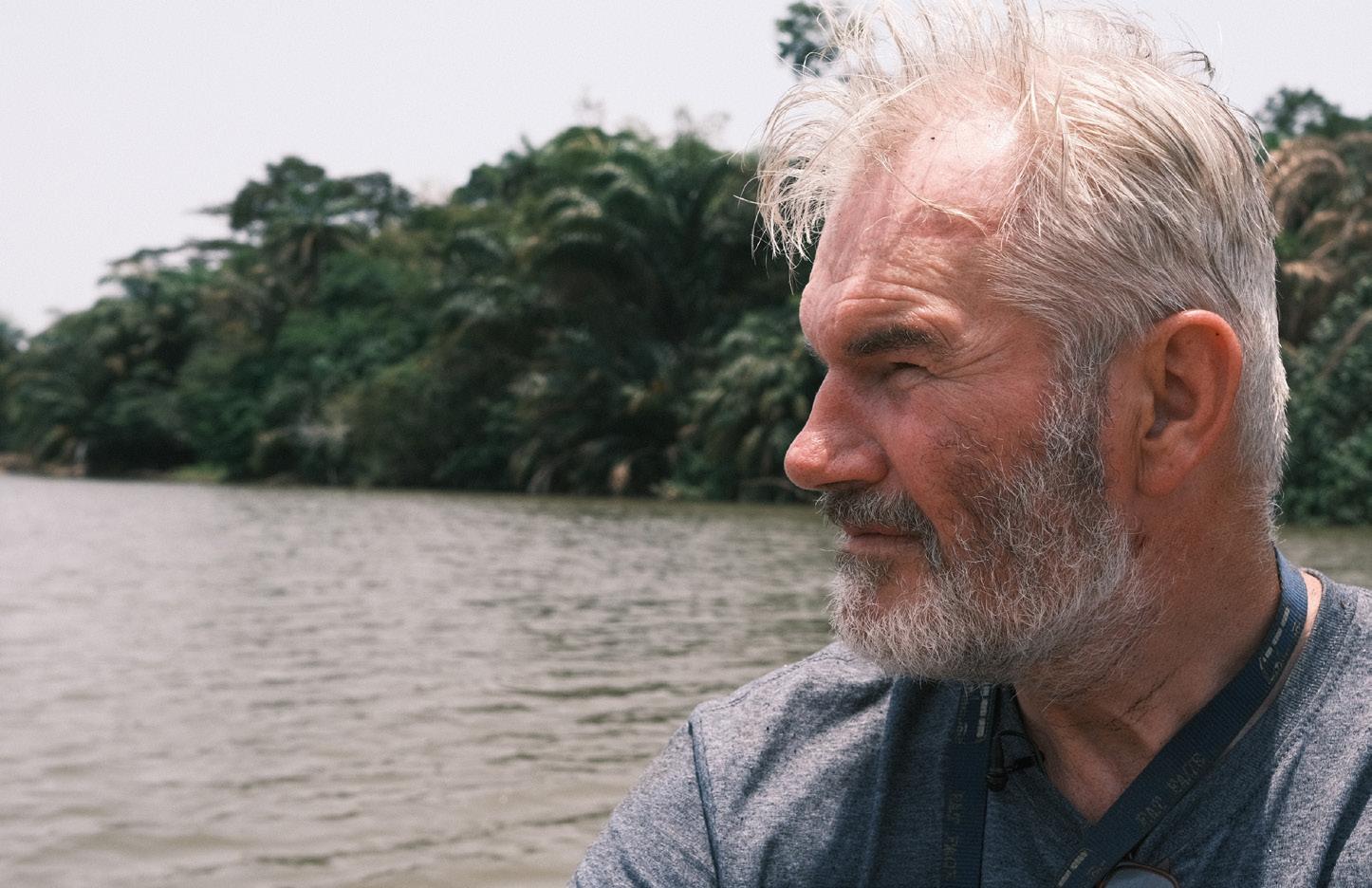
4 The BV magazine, March 2024 NEWS
Guy Deacon, who has Stage 3 Parkinson’s, drove solo 18,000 miles from his home in Sherborne to Cape Town
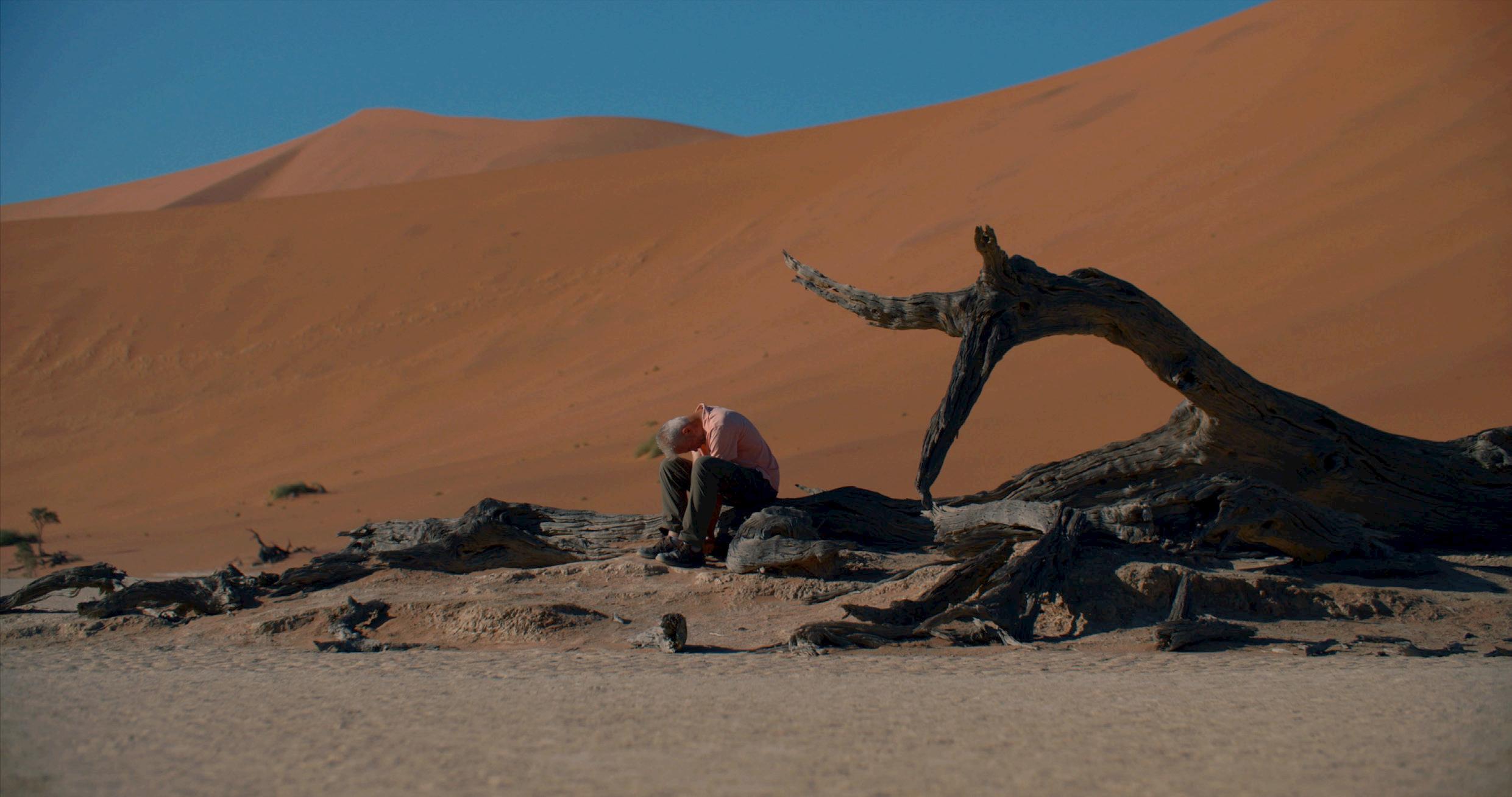 Deadvlei, Namib Desert
Deadvlei, Namib Desert
“you have to get on and do this. Don’t give in.”
‘Parkinson’s is a degenerative disease – it doesn’t get better, it just keeps getting worse. So if I didn’t do it then, I wouldn’t do it at all. That’s why I got off my fat arse and just got on with it. ‘My aim was to prove to myself I could. A supplementary aim was to demonstrate to others that just because you have Parkinson’s, it doesn’t mean you can’t do what you want.
‘I wanted to set an example. Others might not want to drive through Africa, but they could set their own goal –even something simple like going to the cinema or taking the dog for a walk. You should keep trying to do things until you know you can’t.
Driving solo, with Parkinson’s, 18,000 miles through twenty-five countries along the west coast to Cape Town on the southern tip of Africa
had just returned from working in the Congo. I was very run down but didn’t expect to be told that. I didn’t know much about Parkinson’s at the time. The doctor said I needed to see a neurologist straight away, and it took them about ten seconds to diagnose me, it was so obvious. ‘The doctor told me to keep on doing what I’m doing. He said “the good news is it won’t kill you. The bad news is it won’t get any better”. I carried on working until 2019, the army was an excellent employer.’
Accommodating his health while planning for the journey across Africa was complex – Guy had to take at least three months’ supply of medication with him.
to do repeat prescriptions every month. You can’t get the drugs in Africa – and if you can, they may not be the right thing.’
With a special message
Guy’s solo driving route took him from his home in the UK 18,000 miles and through 25 countries along the west coast to Cape Town on the southern tip of Africa. He planned it to avoid conflicts in other parts of the continent, and he was keen to visit countries he had never been to, like Togo and Benin.
‘People were amazed. When they saw the English car with the righthand drive, their eyes would light up when they heard what I was doing. All along the coast, they were so helpful, or soon became supportive when they found out I was old and infirm. There’s this huge respect for older people in Africa. They were very respectful of my age and were fascinated by my story.
‘I was diagnosed with Parkinson’s in 2011. It was a surprise and probably a shock. I knew something wasn’t quite right – I was in the army, a colonel in The Royal Armoured Corps, and
‘To start, I planned to go as far as Sierra Leone. I wasn’t sure after that, so I had enough supplies to last me until then. I was taking eight or nine pills a day. Thankfully the army was my pharmacist, so I didn’t have
‘When I met people with Parkinson’s, they thought I had come to see them. I arranged to meet people along the way and had contacts through Parkinson’s UK.’
Guy had a special message to bring some of the people with

5
Parkinson’s disease. In parts of Africa, the disease is regarded as witchcraft, and sufferers are isolated and shunned by their community.
‘Because there’s no cause or cure, it manifests in unpleasant ways and arrives from nowhere, people don’t understand it.
Tribal and traditional faiths are still powerful in some places. There’s a huge stigma attached to it. People are shunned. I met one chap whose mother had Parkinson’s at age 35. He and his family left her in her house, and she died five years later, starving to death. She spent five years in isolation because people were afraid of catching it and thought she was a witch.’
‘It became my mission to go along and see these people, show them that they can do things. Still live their life. Drugs are important, medical care is important, but most of all it is the care and love from your family. Just telling people they can hug someone can make a huge difference. It’s like the Diana moment. When people realise they won’t catch it, they can give better care.
‘I appeared on radio and TV
there to give my message. I estimate I barged my way into 500 million households! I’d do a radio interview in every country I went to. Some places really want to do something about the stigma – people began to recognise me.’
Guy had got as far as Sierra Leone in early 2020 when COVID 19 started.
‘It was very interesting in Sierra Leone because they had experienced Ebola, so they were very conscious about disease management. Everyone wore masks, and there were handwashing stations everywhere. You couldn’t go anywhere without washing your hands, you couldn’t use a cash point without handwashing, or the police would stop you. At the time, there was no indication of it getting into Africa, and I thought I might be OK, but I was persuaded that if I did get it, the hospitals would not be able to cope.
So I was on the list for an evacuation, and the UK Government flew me home. I left my vehicle with a colleague and he kept it for two years but I returned in 2022.’

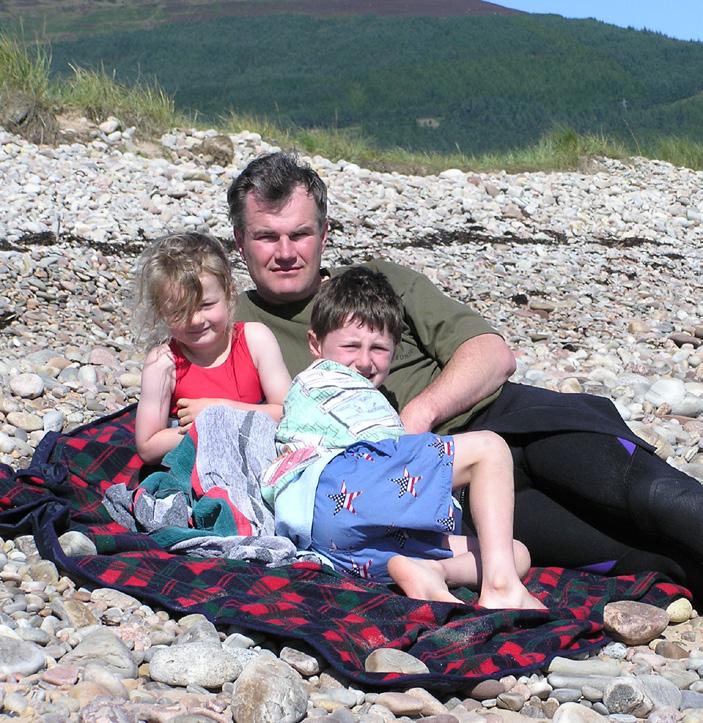
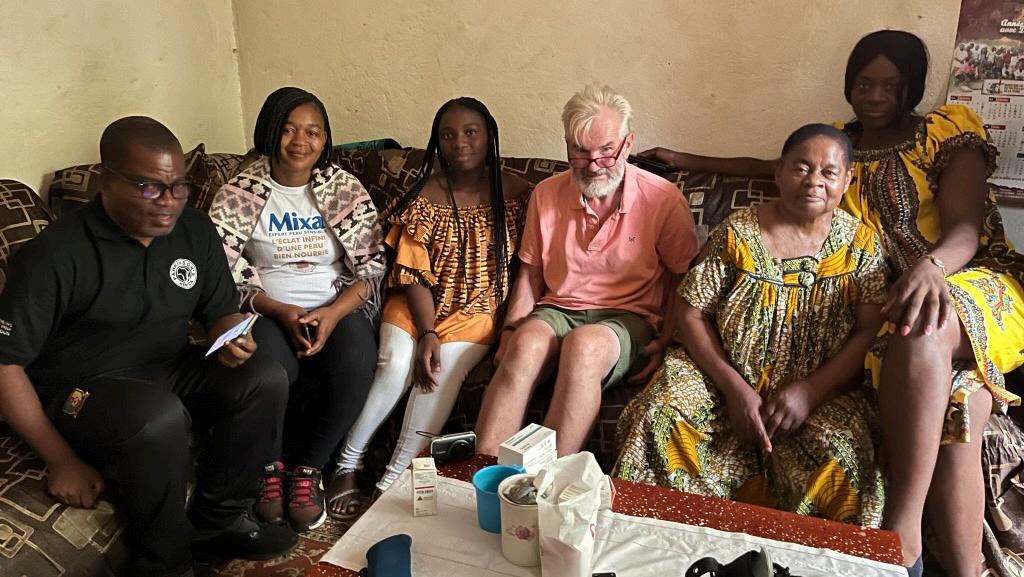
6 The BV magazine, March 2024 NEWS
A family holiday in Scotland in 2002
‘In Canada with my tank’ 1999
Meeting people with Parkinsons in Youande, Cameroon
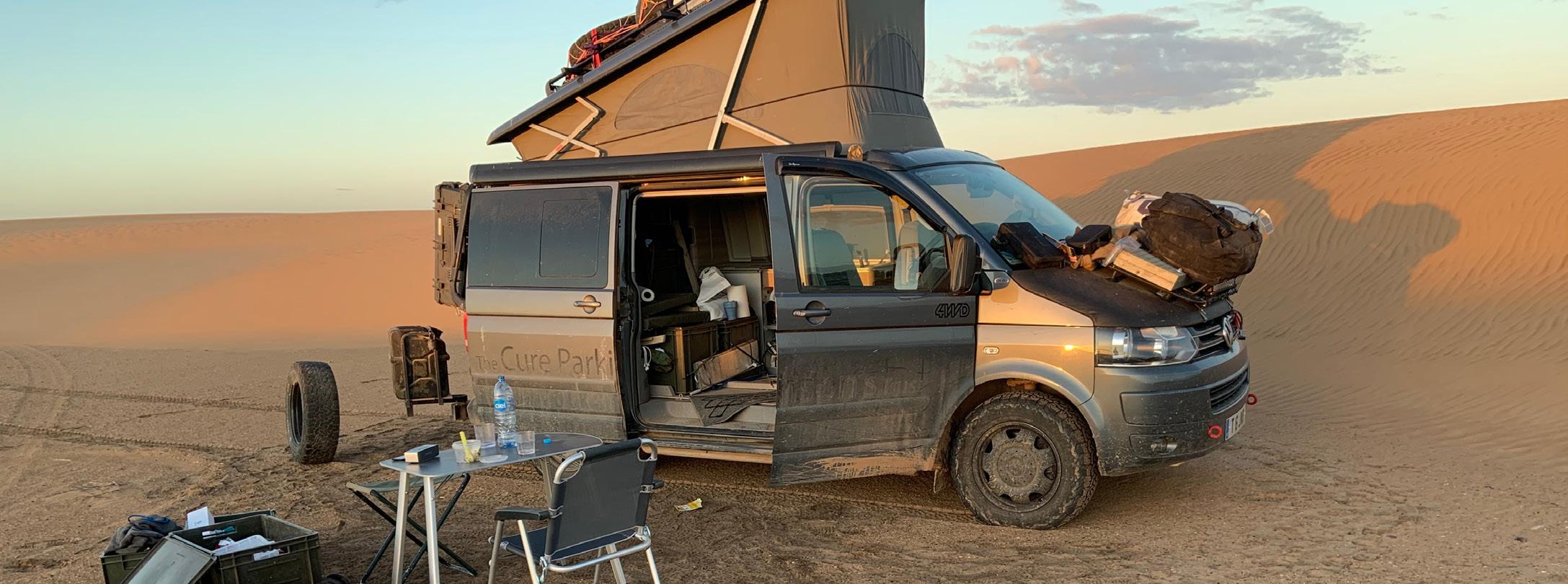
The kindness of strangers
When Guy returned to Sierra Leone to continue his journey, his symptoms had worsened, but he was determined to complete the journey. He met many people on the route, with complete strangers stepping forward to help him.
‘The deeper the trouble you are in, the more people will help you out of it. I took things terribly slowly and stopped a lot. I did things as and when I could.
‘In Andorra, I had a problem with the differential, and a Moroccan mechanic, Mohammed, stepped in to help. He was fantastic. I met him again in Morocco, and he became a really good friend.
‘In Gabon, I hit a pothole, bent the suspension and couldn’t move. The first person who stopped asked if I was alright. He spent eight hours with me until the truck driver came. All the way, people bent over
backwards to help. In Libreville, the taxi driver would only leave me once he knew I was in the right place.
‘The one occasion when I couldn’t manage and was nearly carted off in an ambulance was in Ivory Coast. I didn’t take my pills in time, had a bit of a meltdown and got distressed. I was in a shop, and started to make no sense. I didn’t have my phone as I had left it in the car. The staff took me to a quiet area, but I couldn’t explain. A doctor checked me, and I was fine. One of the shop attendants had my car key, and she found my phone so I could ring someone. And then she ordered a taxi to take me to her home where I could rest.’ Finally, Guy arrived in Cape Town – the end point of his momentous journey.
‘There was no champagne or ice cold beer. It was actually disappointing, and I shed a tear. ‘All of a sudden, it was over. ‘And I was so very tired.
I shed a tear. All of a sudden, it was over. And I was so very tired.
‘If I had to pick one single highlight of the journey it was appearing on TV in the Ivory Coast and my family came on screen to encourage me!’ He drove his wagon for the last time on December 7th 2022, before handing the keys to a friend and flying back home to England and his home near Sherborne.
Guy has established a charity that will help fund grassroots projects to de-stigmatise Parkinson’s disease in Africa and improve the quality of life for people with the disease.

Guy has also written a book, Running on Empty, which tells the story of his remarkable journey: ‘Parkinson’s is a pain in the arse, but if you don’t let it get to you, you can enjoy your life to the full.’
• The new book Running on Empty by Guy Deacon is published on 11th April, £9.99, and all proceeds will go to Parkinson’s charities. For more information visit guydeacon.co.uk
7 The BV magazine, March 2024 NEWS
Dune Camping in Morocco
Julia’s House CEO exposes funding crisis on social media
Dorset’s allocation of NHS funding only provides eight per cent of the children’s hospice annual income – Rachael Rowe asks why
‘It shocked a lot of people. And it’s not for want of trying at national and local level.’
When the chief executive of Julia’s House, Martin Edwards, wrote a post on LinkedIn about the funding inequalities in children’s hospice care, it received more than 30,000 views and generated several shocked responses. Some hospices receive up to 30% of their funding from the NHS, though the national average is 13%. Dorset gets just 8%, and even that is no longer secure.
How it works
Children’s hospice funding comes from a combination of charitable donations, including bequests, and a nationally-defined budget. For several years, NHS England has commissioned the service using a £25m grant, shared between children’s hospices in England. However, NHS England wrote to children’s hospices in April 2023 to tell them that this year (2023/24) will be the final year of the grant. In future, local integrated care boards (ICBs) will be responsible for providing all of their NHS funding.
In 2022/23, Dorset ICB spent just £125,049 on children’s hospice care, and has additional
contracts with a community-integrated continuing care team. Julia’s House receives no funding from the NHS in Wiltshire. The total NHS contribution to the Julia’s House budget, from contracts and grants, is just 8% of the hospice’s annual required income.
Respite care is an essential service
Unlike adult end-of-life care, children with lifelimiting illnesses are fewer in number, but many have highly complex and rare conditions. Apart from the instability and uncertainty of hospice funding, the costs associated with providing palliative care have escalated in the last year alone. The number of children with a lifelimiting condition nationally has trebled in the last 17 years. According to the Dorset End of Life Care Strategy, there are believed to be 1,038 children between the ages of 0 and 19 needing palliative care support in the county.
Julia’s House cares for 176 families across Dorset and Wiltshire, with around two thirds in Dorset. Martin outlined some of the issues: ‘We are seeing more children with complex needs now. More than 80% of our children require two staff members to be with them at any time. It’s an intensive

8 The BV magazine, March 2024 NEWS
Scarlett with her Julia’s House nurse Helen
process. We also continue to care for the entire family, supporting them for up to five years after bereavement.’
Hospices do much more than providing end-oflife care. Martin believes one of the reasons that Julia’s House receives less public sector funding is because it provides a lot more respite care.
‘People think of hospices as buildings that provide end of life care, but we do a lot more. Respite care is just as vital.
‘Research shows that respite care impacts upon the entire family’s wellbeing. We led a national research project with Bournemouth University, looking at how a child needing hospice care impacted the parent’s relationship. We found that the stronger parental relationships also had up to 43% more respite care than those families where relationships were struggling.
‘Another important research study from York identified that a mother of a child with palliative care needs is twice as likely to develop a heart problem as one with a healthy child. She also has an increased risk of mental health problems. Respite care prevents a crisis. If we can keep children stable and families healthy, we can avoid many problems. The most expensive thing is a bed night in hospitals.’
Equal, reliable funding
Laura Gilbert’s four-year-old daughter Sophie has a life-limiting illness and has been waiting for a double lung transplant and major heart surgery at Great Ormond Street Hospital for 10 months. The family is supported by Julia’s House and explained why respite care is essential.
‘Having a child with a life-limiting illness is mentally and physically traumatic and exhausting. A lot of parents suffer with chronic sleep deprivation and associated ill health because they are the primary carer for their affected child day and night.
‘Julia’s House offers services which can help alleviate that stress and provide support and care not only the child under their services but also for the parents and siblings. Having a poorly child impacts many generations of the family and Julia’s House goes above and beyond in offering any support/services that they can.
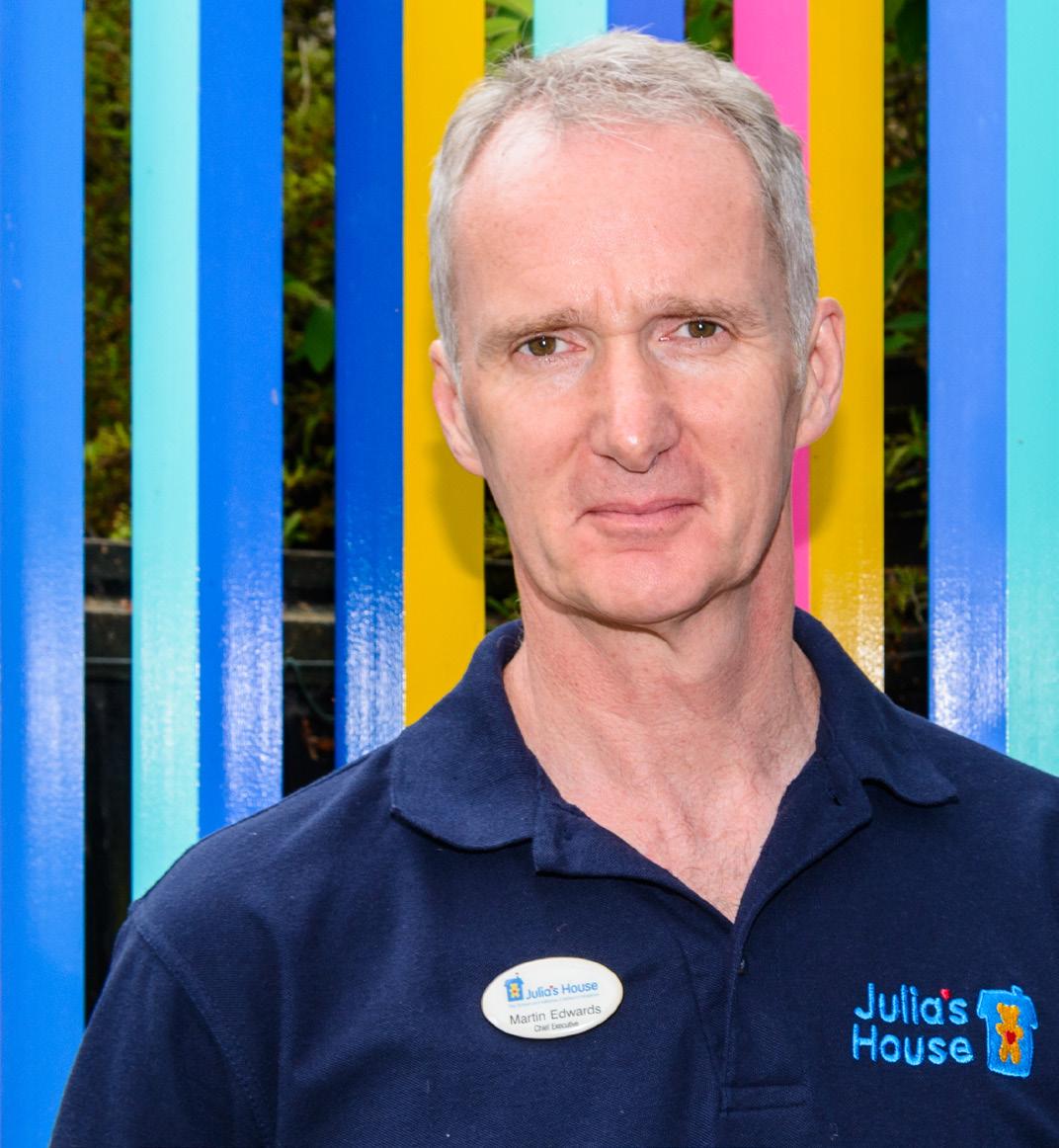
own home, giving the parents some time out, or to simply spend time with their partners or other children, is invaluable. It gives to the whole family. ‘I don’t think it is acceptable that so many of the services that a hospice provides are funded purely by the generosity of the public. It is utterly amazing how many incredible people and organisations donate, raise and support Julia’s House financially, and it is very much needed year after year to enable the hospice to function and provide the exceptional service that it does.
Simply, without the public, our children wouldn’t receive the care. Care costs should be funded by the government, and be equal for all children’s hospices
The staff bring a sense of inclusion to all children, regardless of their physical and mental capabilities. When you see your child feeling supported, included and cared for so exceptionally, it reminds you that you are not alone in this. To be able to offer fully supported respite sessions in the child’s
‘We, as service users, are so thankful that the public supports the hospice. Simply, without them, our children wouldn’t receive the quality and range of care they get. Care costs should be funded by the government each year, and a guarantee given that each children’s hospice has a contract and sustainable financial support that is equal across all children’s hospices around the country.’
Staff at Dorset ICB were unavailable for the interview but shared their county-wide end-of-life care strategy, which includes integrated working between community teams and hospices.
However, with Dorset’s funding allocation at a paltry 8% and an increased demand for services for children with life-limiting illnesses, it is perhaps time to look at an equitable funding model for children’s hospice care that values preventive interventions like respite support.
• juliashouse.org
9 The BV magazine, March 2024 NEWS
Martin Edwards, CEO of Julia’s House, took to LinkedIn to explain the funding inequalities in children’s hospice care
by Laura Hitchcock
On the road to the olives
Giles and Annie retrace their epic motorbike journey, riding 8,500 miles on the 30-year-old bikes to discover the challenges facing the olive oil industry
“We got married in 1992, when we were living on a houseboat near Hampton Court. We both wanted to take a gap year out of our careers, so we sold everything we could and bought two motorbikes (BMW R100 GSs). We travelled through Spain, up the coast to France, Italy, Greece… It was during the Yugoslav war, so we had to adjust our route to go through Turkey, Syria – an utterly amazing country to be in 1993. Into Jordan, Israel, back into Jordan, Egypt, all the way down the Nile into Sudan, through the Western Desert into Libya – where we got arrested and deported twice – and then bumped our way back to the UK and ended in a bedsit, flat broke, in Southampton.”
When Giles Henschel, managing director of Olives Et Al, was The BV’s Dorset Island Discs castaway in 2022, he described the yearlong road trip with his wife Annie which was the inspiration for what became their life’s business. At the end of last year Olives Et Al turned 30, and the couple wondered what to do to mark the occasion: ‘The obvious thing, of course, was a repeat of the original trip, using the original bikes,’ says Giles. ‘And then


suddenly, as that idea took hold, this whole spectrum of climate change just made it all the more important that we do it.’
Out of oil
The olive oil industry has been making headlines over the last few months, as customers have questioned the prices in the shops doubling in a year.
‘Our small jars of olives were retailing at £4.50 – they’re now £9.95,’ agrees Giles. ‘I know a lot of people feel it must be profiteering (sadly I don’t see a Ferrari in our car park) but the raw price is just astronomical. I have never known anything like it – never, not in 30-odd years. We’ve had to re-configure our entire product range, withdrawing some products completely and entirely reworking others.
‘To all intents and purposes Europe has run out of olive oil this year. We know whole areas in Tuscany that didn’t even
bother harvesting in the autumn. In a good year, they all harvest their own trees. In a poor year, they have they what call an amici harvest, a friend’s harvest, where they collaborate and pick each other’s, put it all together and share it out equally.
‘In 2023, they didn’t even bother with an amici harvest.
‘Halkidiki, in Greece, had a 90 per cent reduction in crop – that’s 90 per cent fewer olives than in a good year. As a result, prices of olives have more than doubled as a raw ingredient. Where we were paying £3.10 a kilo last year, we’re paying £7 this year. And there are no contracts, either; we cannot fix the price of our extra virgin olive oil with even the biggest importers. You have to buy at the price on the day. It really is pretty serious.’
The problem was last year’s weather. An olive tree loves a really long hot summer, then a bit of rain, harvest and a short, sharp and cool winter to rest
10 The BV magazine, March 2024 NEWS
Giles and Annie Henschel’s pair of BMW R100 GSs on the first road trip 30 years ago

and reset. Last year, a very warm winter was followed by one of the worst droughts and heat waves on record. When the olive trees were blossoming in April, the temperature was 40º – and the blossoms were just scorched off. After the fruit sets in May and June, a long, hot summer helps them slowly ripen. But the temperatures were just too hot for the few fruit that did manage to hang on.
The signs for 2024 harvest aren’t good either – this winter hasn’t been cool enough or wet enough for things to recover.
‘There are around 11 million hectares of olive plantations around the world,’ says Giles. ‘And every single hectare absorbs four and a half tons of carbon dioxide, every single year.
‘It’s the world’s largest manmade forest – when you see an olive tree, it’s only there because it’s been planted by someone. Those serried ranks that you see in Spain or Greece or Turkey, they’ve all been planted by an individual, and an individual still
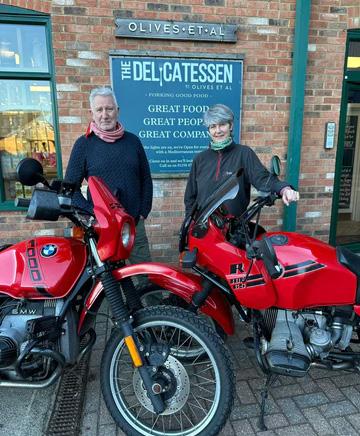
Giles and Annie today, with their BMW R100 GSs

11 The BV magazine, March 2024 NEWS
The 2024 Operation Watertight II planning is old school – a big map, pins and red string. The map sits on top of Giles and Annie’s original map from 1993, littered with their pencil marks and notes made en route.


12 The BV magazine, March 2024 NEWS
Annie and the bikes in the Byzantine city of Rasefeh, Syria - November 1992
On the road from Bahariya to Siwa Oasis, Western Desert
goes to them every single year and tends them, prunes them and looks after them.
‘It’s a very, very precious resource. For every litre of olive oil that is produced, 10kg of CO2 is taken out of the atmosphere. We need more of them, but the problem is they take a hell of a long time to grow. Plus they need water – and of course there isn’t enough water.
‘And the other industry-wide problem – and it’s one affecting more than just the olive industry, actually – is a labour shortage. Younger generations just aren’t as keen to work on the land as their forebears.
Operation Watertight II
‘So we started with the loose idea of recreating our first route. We’d called our first trip Operation Watertight, as we had intended to look at pollution and water rights across the region. We couldn’t raise the funding or the access to achieve what we wanted first time round, and Operation Watertight II is a fitting way to continue what we started almost 32 years ago. Like us, the bikes are 30 years older and, like us, needed a bit of an overhaul to make them ready for the road again! Some bikers came through and stopped at the HQ Deli in Stur for a coffee and a bite and we got chatting about the road trip plans. One of them went on and told BMW in Falmouth what we were doing. We couldn’t believe it when BMW then got in touch and said “Please bring the bikes to us, we’d love to have them here and get them ready for the trip – these are really historic machines.” They’ve honestly been amazing and we can’t thank them enough.
‘They are still the perfect bikes for a long road trip – incredibly robust, very resilient and completely analogue, so there’s no microchips, electronics or heavily mined minerals. The
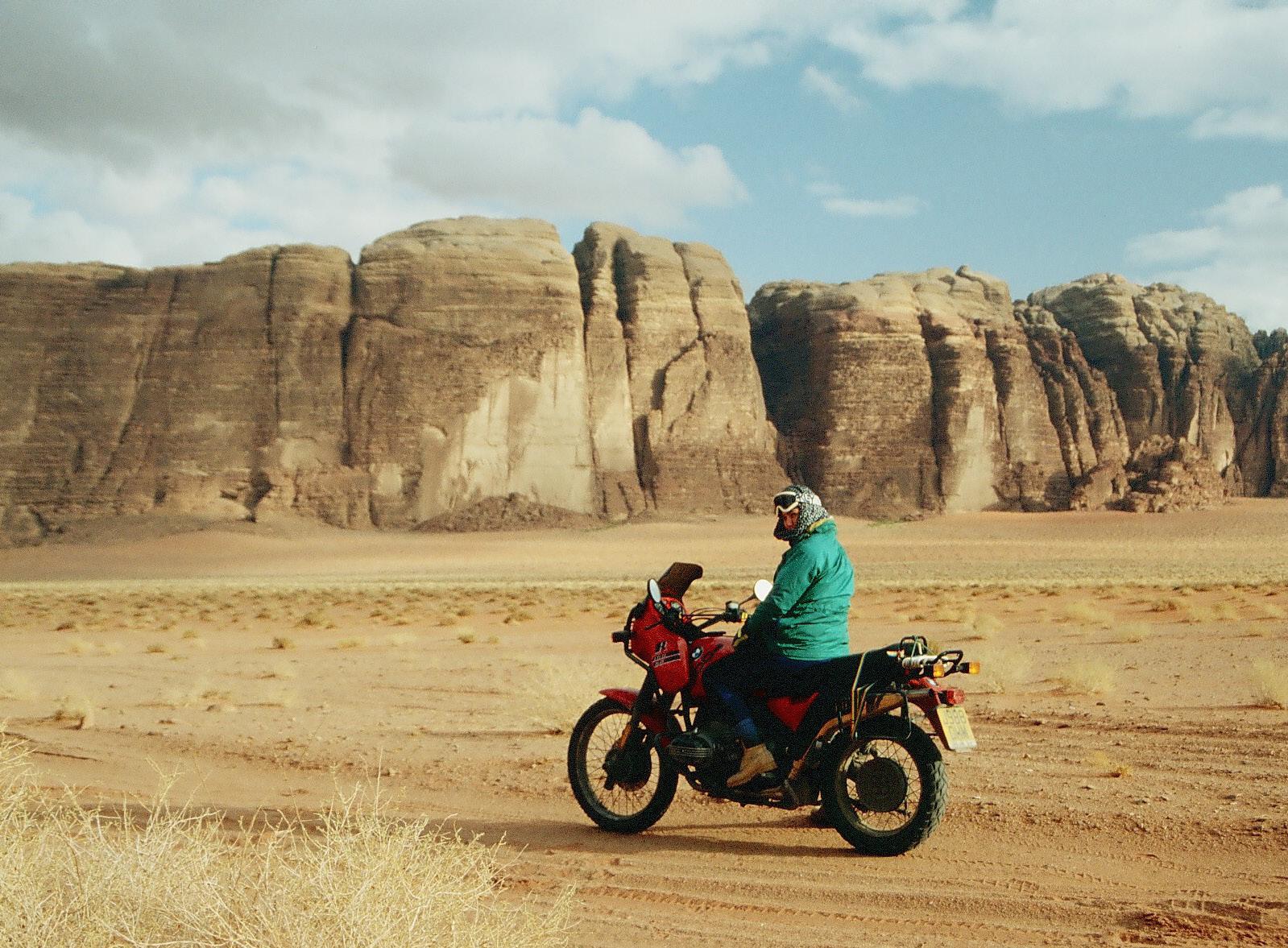
bikes are slightly different, but we deliberately made sure the engines and mechanics are identical. If ever we were in a situation where both of them didn’t work, we can cannibalise to get one running.
‘This time, we’re sticking to Europe because we’ve only got a 90 days tourist visa (thanks Brexit!). So we’re going across France, the top of northern Italy, through Slovenia into Croatia, Montenegro, Albania, down into Greece, Greek islands, down and all the way around the Peloponnese, over to an island called Evia, then right the way up to Thessaloniki. Across the top of Greece, over to Italy, down into Sicily, all the way around Sicily then up to Naples.
‘From Naples we’re sticking to the west coast, around the armpit down into France, to Spain, all the way down and then over into Portugal, back to Spain and home from Bilbao.
‘It’s about 8,500 miles.
We have questions
‘Basically, we know if we spoke to a politician, or a climate theorist or a university lecturer, they would give us their own view of the state of the industry. And we want to know what’s happening on the ground, see if
we can find some commonality of experience. So this time round we’re specifically planning our route around olive oil producers, olive growers and farmers. ‘We’ll be speaking to at least two farmers every single day on the trip, as well as our own suppliers, asking them what it’s really like. How are they really finding it? What are they doing about it? How can things change? And then we want to share the Sicilian farmer’s opinion with the Spanish farmers, and the Spanish answers with the Croatians, the Montenegrins, the Albanians … ‘For a long time, experts thought the olive tree had been around for about 6,000 years – and for about 6,000 years man has been cultivating it. Recently, fossilised remains of olive trees have been discovered in South Africa, dating back around 96,000 years. They are very resilient, they will find a way – and we need to do whatever we can in order to preserve them and protect them. It’s such a valuable crop for the planet, it simply cannot be allowed to just be wiped out.’
• to follow Operation Watertight II and keep up with the latest from Giles and Annie’s trip, you can find updates on Olives Et Al’s website here
13 The BV magazine, March 2024 NEWS
Annie riding across Wadi Rum, Jordan
by Laura Hitchcock
First Milk get the cream of Shaftesbury!
BV Dairy, the successful third generation family business in North Dorset, has been sold to First Milk – a British farming co-operative
Before the First World War the Highnam family bought Dairy House Farm in Kington Magna. They then took over Lower Caggypole Farm in neighbouring Buckhorn Weston, bottling milk on the farm and sending their surplus to Gillingham Dairies – eventually, the Highnam family bought Gillingham Dairies too.
In 1948, the family relocated to Old Rectory Farm, still in Kington Magna, and began making clotted cream in their own kitchen. A decade later, after selling their dairy herd, Jack Highnam and his son Christopher started Blackmore Vale Farm Cream Ltd, buying in milk from three neighbouring farms to produce cream, clotted cream and a variety of high-quality dairy goods.
By 1985, the growing business needed new premises, and the company established its current operations at the BV Dairy facility on Wincombe Lane in Shaftesbury. With the extra space, the product range was extended to include cultured milk products like yoghurts, sour cream and crème fraîche – anything from 0% fat soft cheese (quark) up to a 45% full fat cream cheese.
Milk is currently sourced from Red Tractor-accredited farms within a 30-mile radius of the Shaftesbury site – typically with a long heritage of dairy farming, and a long relationship with BV Dairy. They vary in size from smaller, family farms with around 80 cows up to larger 400-cow herds.
BV Dairy’s award-winning dairy products are supplied to the manufacturing, catering and food service industries, and now include soft cheeses, crème fraiche, buttermilk, cream (single, double and whipping), Dorset clotted cream, fromage frais, yoghurts including Greek-style, soured cream, ricotta and mascarpone.
The BV Dairy facility on Wincombe Lane in Shaftesbury

A secure future
In 2016 a new chill store facility, with 1,000 pallet spaces and new offices and storage, was built, incorporating solar panels which generate 3,500kWh of electricity each day. To further the work towards a minimal carbon footprint, an Anaerobic Digester was installed, which converts production waste into power.
In 2020 the firm received £750,000 in funding from the Rural Development Programme for England (RDPE), and created more than 32 high-skilled jobs as part of a £2m expansion.
Jim Highnam, managing director of BV Dairy, says: ‘Having made the decision to sell the business, we wanted to ensure that the new owners would provide a secure future for our customers, colleagues, farmers and suppliers. As such, I’m pleased to finalise this transaction and see BV Dairy become part of First Milk. Both businesses share a down-to-earth, pragmatic approach, balancing the needs of all stakeholders.’
Shelagh Hancock, chief executive
of First Milk, said: ‘I am delighted to complete the acquisition of BV Dairy, a successful family-owned business, which shares many common values with First Milk – a focus on people and community, environmental performance, exceptional quality and long-term value creation. We look forward to welcoming the wider BV Dairy family into our First Milk family.’ Owned by around 700 farming families spread across Britain, First Milk produces a range of Cheddar, Red Leicester and Double Gloucester cheeses. In addition, they produce bulk cream and whey proteins and focus on providing high quality fresh milk to a range of dairy manufacturers and processors across the UK. Farmer director and vice-chairman, Mike Smith, added: ‘This purchase builds on the existing strengths of First Milk and will bring wider benefits, adding value for our members, creating opportunities for our colleagues and enabling us to extend our regenerative positioning into a broader range of dairy products and customers.’

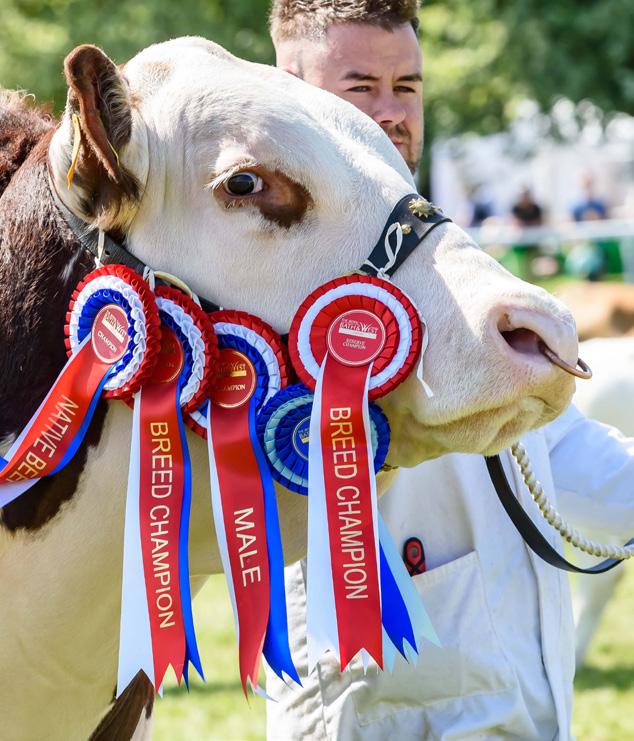
14 The BV magazine, March 2024 NEWS














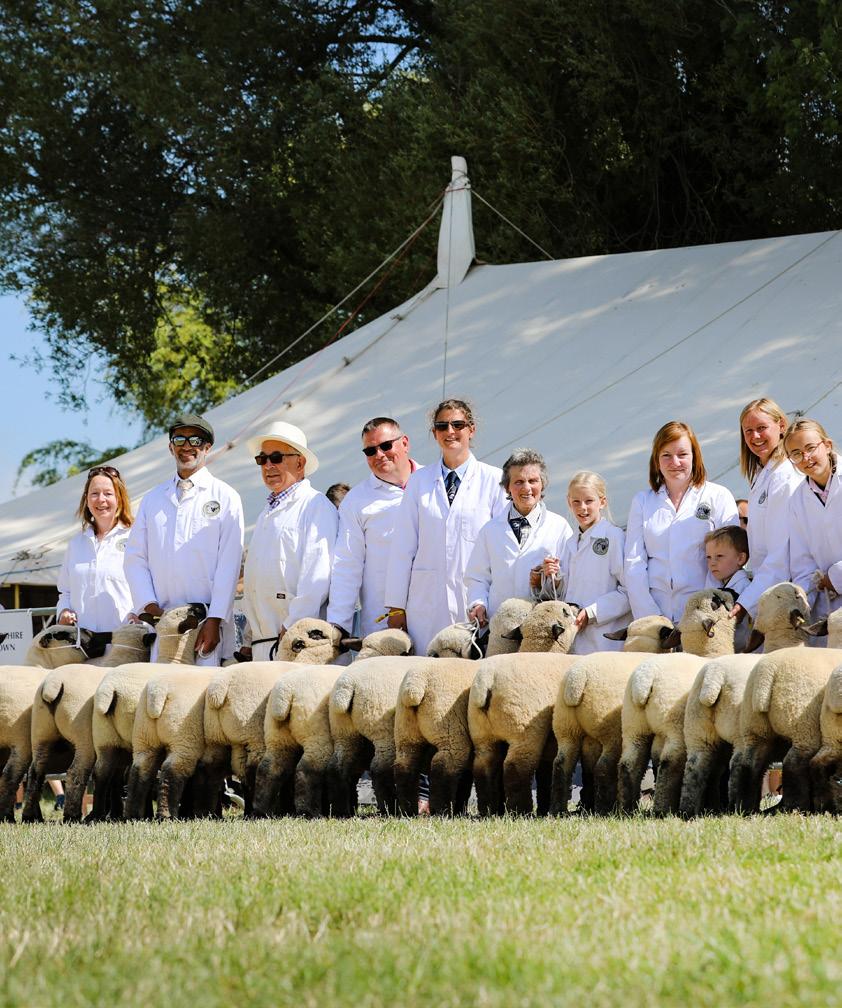
15 DISCOVER MORE AT THE ROYAL BATH & WEST SHOW Book your tickets now: bathandwest.com/tickets 30 MAY – 1 JUNE 2024 Adult advanced tickets: £25, Family advanced tickets: £50 (2x adults & 3x children)
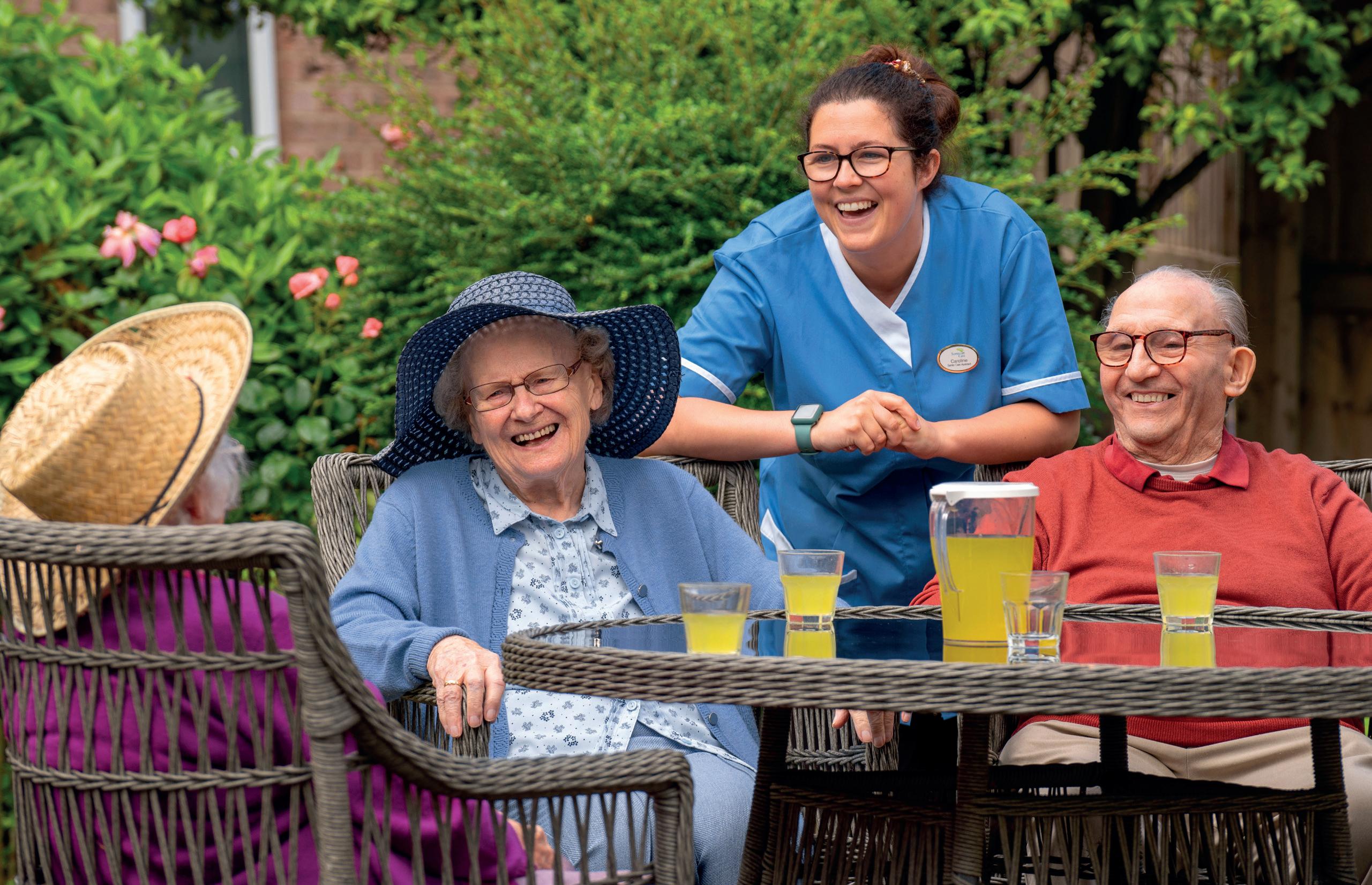



16 Tailored care to support you to live the life you choose. Home care Respite breaks Residential care Dementia support Nursing care Here for you, every step of your care journey. somersetcare.co.uk 0800 817 4990 That special Some thing.
by Laura Hitchcock
Dorset Council votes for tax hike on second homes
Dorset Council’s move to double the council tax premium on second homes aims to address local housing affordability and generate revenue
Dorset councillors have agreed to impose a council tax premium on second homes in the county. The introduction of the 100 per cent premium on second homes will come into effect on 1st April 2025, making a total council tax charge of 200 per cent, and applies from the moment a property is classified as a second home, with no grace period allowed. For those properties classified as ‘Long-Term Empty and Unoccupied’, a 100 per cent premium will, from 1st April 2024, be applied after one year rather than the existing two year delay rule.
A growing problem
The issue of second homes was first covered by The BV in February last year – latest data from the Office for National Statistics (ONS) has shown there are more than 2,000 second homes in Dorset – the county ranks third highest in the country, with a total of 2,490 holiday homes. It has been a growing issue in the Dorset, with residents complaining that they are being priced out of buying homes in their area by Airbnbs and out-of-area buyers. In particular, Dorset’s beautiful old cottages are a popular aspiration for would-be second home owners.
Cllr Jill Haynes, Dorset Council Portfolio Holder for Corporate Development and Transformation, says: ‘The proposal to introduce council tax premiums on second homes and empty properties has been discussed in Dorset for years. ‘Now that the government’s
Dorset’s beautiful cottages are a popular aspiration for would-be second home owners
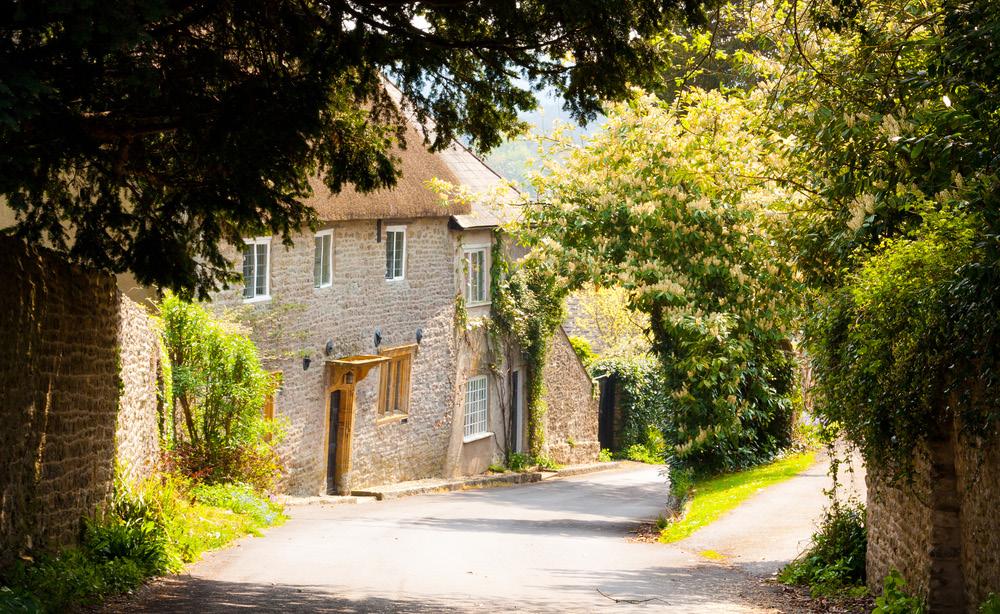
Levelling Up and Regeneration Bill has been passed and received Royal Assent, we will implement the changes and additional premiums in 2024 and 2025. In addition, the council agreed to use 40 per cent of the additional monies raised to support the delivery of affordable housing. ‘These new powers will provide much-needed additional funds to help the council continue its track record of protecting the vital frontline services on which Dorset residents rely.’
Potential benefits of additional tax on second homes:
• Housing affordability: Higher taxes on second homes can discourage the purchase of properties as investments or holiday homes, potentially reducing housing prices and making homes more affordable for local residents.
• Revenue generation: The additional tax revenue can be used by local authorities to fund public services, infrastructure projects and community development
initiatives, improving overall quality of life in the area.
• Community stability: By discouraging short-term and seasonal occupancy, policies can lead to a more stable year-round population, which can strengthen community ties and local economies.
• Reduced pressure on local resources: Second homes often remain empty for large parts of the year, yet they still require infrastructure and services such as roads, waste collection and emergency services. Higher taxes could help offset these costs.
• Support for local businesses: A more stable and permanent population can provide consistent support to local businesses as opposed to the fluctuating demand driven by seasonal tourists. Opposition voices suggest the higher costs for second home owners might discourage investment in holiday properties, potentially impacting the local tourism industry and businesses reliant on tourist spending.
17 The BV magazine, March 2024 NEWS
by Laura Hitchcock

Sturminster Newton - home of the best girls boxing club in Europe?
Packing a punch: Sturminster Newton’s female boxers bring home gold, silver and ‘Best Fight’ from the world’s largest female boxing tournament
A small but formidable boxing club in the heart of Sturminster Newton is punching well above its weight on the international stage – and it’s the girls in particular who are getting noticed.
The Golden Girl Championship is the world’s largest female boxing tournament, the Golden Girl Championship, is held in February in Borås, Sweden. This year’s event attracted 400 participants from more than 30 countries, showcasing talent across all levels and categories.
Under the guidance of Shaun Weeks, the club’s owner and head coach, five girls travelled from Sturminster Newton to Sweden to compete.
‘This is the fourth time we’ve been,’ says Shaun. ‘The first year we just took Ruby Else-White – she won a gold medal, and was also picked out as the Best Prospect, so they obviously saw something in her even then.
‘The following year, we took two girls, and came home with a gold and a silver. Last year we went
with the two Rubys, and came home with another two golds.
‘This year we’ve got more girls in the club, and we were able to take five to Sweden.
‘The youngest is Mollie Callaway, who’s 10. Mariaya Ivanova is 11, Ruby Gibbon is also 11, Courtney Steel is 12 and Ruby Else-White is 17.
‘Mollie, Mariaya and Ruby Else-White all won gold, and Courtney and Ruby Gibbon won silver.
‘Little Ruby Gibbon had to move up a weight group, because there was nobody in her weight category. She boxed a girl from Spain in the final, and lost on split decision, which was harsh. But if she had won, her record would have been five contests, five wins, two Golden Girl Championships ... and it would have been very difficult to match her back in the UK! So it wasn’t all bad, and still an amazing achievement. Courtney was boxing the reigning champion from last year, also a Spanish girl, who’s had ten contests and won all ten. Courtney got

18 The BV magazine, March 2024 NEWS
Sturminster Newton ABC’s golden girls (from left): 11-yearolds Mariaya Ivanova and Ruby Gibbon, ten-year-old Mollie Callaway and 17-year-old Ruby Else-White Image: Courtenay Hitchcock
WHERE DORSET BLOOMS

19 The BV magazine, March 2024 NEWS
through the three rounds against a much bigger and more experienced opponent. She did herself proud to get silver.
Best club in Europe
‘Ruby Else-White was moved up a weight category, and was drawn to fight the Icelandic national champion, an 18-year old who was obviously three to four kilos heavier than her.
‘I don’t normally get nervous when I walk into the ring with Ruby, but watching that girl walk across and get her gloves on, I thought to myself: “Oh, she looks big! Ruby’s only five foot tall!”
‘Ruby stopped her in one minute, 20 seconds.
‘And then in the final she boxed Angela De Felice from Switzerland. They’ve already fought four times, Ruby’s won on points on all four occasions – they’re good friends. But both girls stepped it up. Ruby gave Angela two eight counts in the first round, and another in the second, and then the referee stopped it early, which gave Ruby the gold through stoppage. It was actually really disappointing for both the girls. Both are very experienced, neither was getting hurt and it was a good, well-fought contest.
‘At the awards presentation at the end of the whole tournament, Ruby and Angela were presented the Fight of the Year award, which was well deserved. ‘But the icing on the cake was Sturminster Newton ABC being selected as Best Club. It was totally unexpected. I got quite emotional about it.
‘There were 400 contestants and maybe 60 or 70 clubs there from all over Europe. And we won the Best Club Award! I’m so proud of the whole team. Absolutely phenomenal!’
Increasing numbers of girls are joining the boxing club, once the preserve of the town’s boys.
‘When Ruby started, she was the only girl! There are definitely more girls coming to the Beginners Club, our entry point. In the Funbox Club – which is for five to 10 year olds – it‘s probably 40 per cent girls now. But I think that’s not just us, I think that’s true across the whole of boxing. Lots of clubs are seeing an increased interest from girls, and even girls-only tournaments are possible now. There just weren’t enough female boxers to do that even a couple of years ago. It helps that female boxing is being shown on TV now too.’
What’s next for Ruby Else-White?
Ruby will be fighting for a title at the European Championships in Croatia in April, aiming to pick up a third European title.
‘But she could be coming up against girls who are well into their 18th year,’ warns Shaun. ‘She could be giving away nearly two years to the oldest girls in the new age bracket.

‘Then it’s the Tri-Nations again, and then we have our eyes firmly fixed on the World Championships. We’re hoping Ruby will be boxing for a world title at the tail end of the year.’
Ruby Else-White Honours:
• 3 x MTK Lonsdale Box Cup Champion
• 5 x Western Counties Champion
• National Cadet Champion
• Bristol Box Cup Champion
• Riviera Box Cup Champion
• National Schools Champion
• 2 x National Junior Champion
• 2 x GB Tri-Nations Junior Champion
• 2 x European Junior Champion
• European Nations Cup Junior Champion
• 2 x Women’s Winter Box cup Champion
• National Youth Champion
• 4 x Golden Girls Box cup Champion
24 titles and undefeated for 35 consecutive bouts
20 The BV magazine, March 2024 NEWS
Shaun Weeks, left, with Ruby Else-White and coach Eddie Wareham. Shaun says he’s ‘my right hand man, he always travels with us.’


Bingo nights to bright lights: a Blandford school’s magical Disney debut
During February half term, one group of children from Blandford was dancing on the main stage at Disneyland Paris. Rachael Rowe reports
Disneyland is a place that most children dream of visiting – but imagine having the opportunity to dance on the main stage and take part in the famous Disney Parade! That’s what has just happened to a group of youngsters from the Blandford School of Dance.
School principal Gemma Davis worked with a travel company to arrange the once-in-a-lifetime opportunity for some of her students. The school runs classes for a range of age groups from toddlers through to adults.
‘The group we took had an average age of eight years old.
The youngest was five and we also took one of our adult students – 13 dancers altogether. We had to raise funds to go and we held quiz and bingo nights. Some families used the trip as their annual holiday.’
The preparation begins There are benefits of dance for
children and young people, both physical and psychological. It improves physical health and mental well-being. Children learn balance, posture, and
creative skills. With the hard work involved in learning a routine, they also develop discipline and teamwork skills, and an understanding of the effort

22 The BV magazine, March 2024 NEWS
Blandford School of Dance performing on the main stage at Disneyland Paris. All images: Blandford School of Dance
The Blandford group was among the youngest of the dancers taking part, with an average age of eight – Ada, the youngest, is five
needed to achieve something.
All the work paid off when the preparation for Disney started. Unfortunately you can’t just rock up to Disneyland Paris and dance on the main stage like an impromptu TikTok video. The young dancers had to prepare for more than a year and also to audition. Disney only takes the best for their performances. It was a remarkable feat for the young Blandford dancers. Gemma described the preparation: ‘They practised for hours and hours, week in, week out, for more than a year. Then we had to audition for the parade and the dances. Some of it was done on video and of course we had to start all over again if there were mistakes. The children were very patient. We also had to send two dancers to audition in person for Disneyland Paris. Considering how young they are, they all did so well.’
In Paris
When the group arrived at Disneyland Paris the children were amazed.
‘It was lovely to see their faces. They were so excited,’ says Gemma. ‘We were among 330 dancers from various groups. Some were French, others came from across Britain. The Blandford group was among the youngest there. We had practised the routine for the preparade, which is just before the main Disney parade with all the characters, and we also had six dances to perfect for the show.

Taking part in the pre-parade through the streets of Disneyland Paris, just before the main character parade
‘We were on the Disneyland Paris main stage, and had 20 minutes to do our six dance routines. Each one involved a costume change – we had to split the group up so they could get changed quickly and go back on for the next song. They did a mixture of jazz and ballet routines. The Disney stage managers were also on hand and looked out for any child struggling with a costume or looking a bit anxious. The show wasn’t just for the parents of the dancers. It was for the public, too. When it was over, Ada, the youngest dancer said: ‘Can we do it again?’
Ada’s mum, Louise Billingsley, was in the audience watching. ‘It was such an amazing opportunity. Ada’s only five –she’s a huge Disney fan and adores her ballet. She just loved the whole experience and it massively built her confidence. But the dancers did the work and
put in the hours to get there. Ada never once said she didn’t want to go to ballet class.
‘It was so emotional when they first came on stage, I just welled up! Then as the show started I thought “I have to watch this, I can’t cry now!”’
For Gemma, the best moment was at the end: ’When they took their final bow, the look on their faces said it all. They were all so proud of what they had done. ‘Suddenly it was all over. The group all came from different classes, and some were worried they wouldn’t be together again –they had become almost a family group over the year of hard work. But we’re looking at ways to bring them together.’
Proud parent Louise was thrilled. ‘The memories made from this will last a lifetime. They will never forget the time they danced on the Disney stage.’
• blandfordschoolofdance.co.uk
The group performed six routines in a 20 minute slot on the main stage

23 The BV magazine, March 2024 NEWS

The Prep Advantage
Simon Ridley, the new head of Bryanston Prep, says a prep school education opens new doors for children, whatever their interests
We all know every child is different. They don’t look the same, they don’t have the same skills and interests or family backgrounds, they have their

own way of looking at the world and their minds and bodies will develop and mature in their own unique way. All children, though, have curiosity, uncertainties and excitement. As parents and teachers, I believe it is our responsibility to provide the inspiration, reassurance, encouragement and support that will help a child to develop their selfesteem, explore their passions and become the very best person they can be. That is certainly my approach to education.
Of course, ticking all of those boxes is often easier said than done and there will always be challenges along the way. It’s also very important that the learning environment provides comfort, safety, happiness and social interaction, as well as the flexibility to reflect the different abilities and rates of development of each child.
Dorset is blessed with many great state and independent schools with deeply dedicated teaching staff. What’s more, the county provides a myriad of opportunities on the doorstep to help children enjoy a varied and fulfilling childhood. Supportive educational partnerships between schools, through groups like the Blandford Schools Network, are also hugely beneficial for all involved.

24 The BV magazine, March 2024 NEWS
Simon Ridley is the new head of Bryanston Prep
Join the journey to brilliant broadband Say hello to a connection you can depend on with ultrafast full fibre broadband. Up to 900Mbps Up to 11x faster than the UK average broadband speed. From £29 a month Packages from just £29 per month with free installation.* Local friendly support If you need us, speak to our friendly support team based in Dorset. wessexinternet.com *Free installation to properties where government subsidy is available. Subject to survey. Register your interest at
An evolving experience
But it’s not just a case of choosing the ‘right’ nursery, primary, prep or senior school for your child. It’s just as important to consider how their learning experiences and opportunities will evolve as they progress through their childhood and develop the skills for a purposeful life. Some children will be ahead of the curve and ready for new challenges. Others will need a little extra help and encouragement. This is particularly evident in the formative years from five to 13, as children begin to discover their own talents and new areas of interest.
Whether its sport, the arts, the environment, science and technology or an interest in just about everything, a child should have the scope to explore and extend their own learning experiences and to use the knowledge to fire their own imagination. This is where I believe the fee-based structure of prep schools comes into its own for local day pupils and boarders alike. Pre-prep and prep schools are fortunate – they are in a position to offer a more flexible and tailored approach to many areas of their curriculum, with an array of extra-curricular activities and real scope to explore a vast range of artistic, sporting and academic pursuits. They also have access to excellent facilities, subject-specific teaching and coaching and far smaller class sizes, where pupils can benefit from more personalised support. Significantly, many prep schools are themselves champions for many activities that will resonate with enthusiastic young minds but are the areas in which mainstream schools face considerable and well-publicised challenges and constraints. Whether it’s sport, music, dance, fine art, classics, modern languages, outdoor learning or cuttingedge technologies, a well-resourced prep school offers every child the opportunities to be inspired and to develop their skills as well as important personal qualities such as determination, empathy and selflessness.
Feeding enthusiasm and curiosity
Not surprisingly, many prep schools in the west country engage in a wide range of outdoor activities – Bryanston is certainly not alone in providing a dedicated forest school within its own grounds. In my professional capacity, it is very obvious just how much the children enjoy and benefit from creative and imaginative outdoor play and education. This is such an important part of childhood, rather than pushing them to grow up too quickly. Outside, they are getting up close to nature, making things and building dens while also learning those soft skills that will stand them in good stead as they progress through their school years and move towards adulthood. It is also a place where we can
‘It is obvious just how much children enjoy and benefit from creative and imaginative outdoor play and education

feed the enthusiasm, curiosity and interest in the environment that is so much in evidence in today’s younger generation.
The same is true when we look at sport, technology and the arts. Providing every opportunity for a child to excel and to develop their skills and talents is the guiding principle of practically every parent and teacher. The real hope for all is to provide the right learning experience, with the resources to allow personal development uncompromised by curricular or budgetary restrictions.
It is equally important that any school doesn’t inadvertently hold back the development and wellbeing of children.
If a child outgrows their learning environment, they will soon become demoralised and frustrated and their development will be stifled. This is true for all children, but especially those with exceptional talent and ability. That’s why partnerships with neighbouring schools and sports and arts venues, as well as close community engagement, are so important. And it’s why the flexibility and opportunity provided by through-schools are so valued. After all, early exposure to the next level of learning is not only good preparation, but also helps to maintain interest and motivation through all stages of a child’s education.
26 The BV magazine, March 2024 NEWS
MUDDY DOG DASH
Upton Country Park
17th March 2024
11am - 3pm



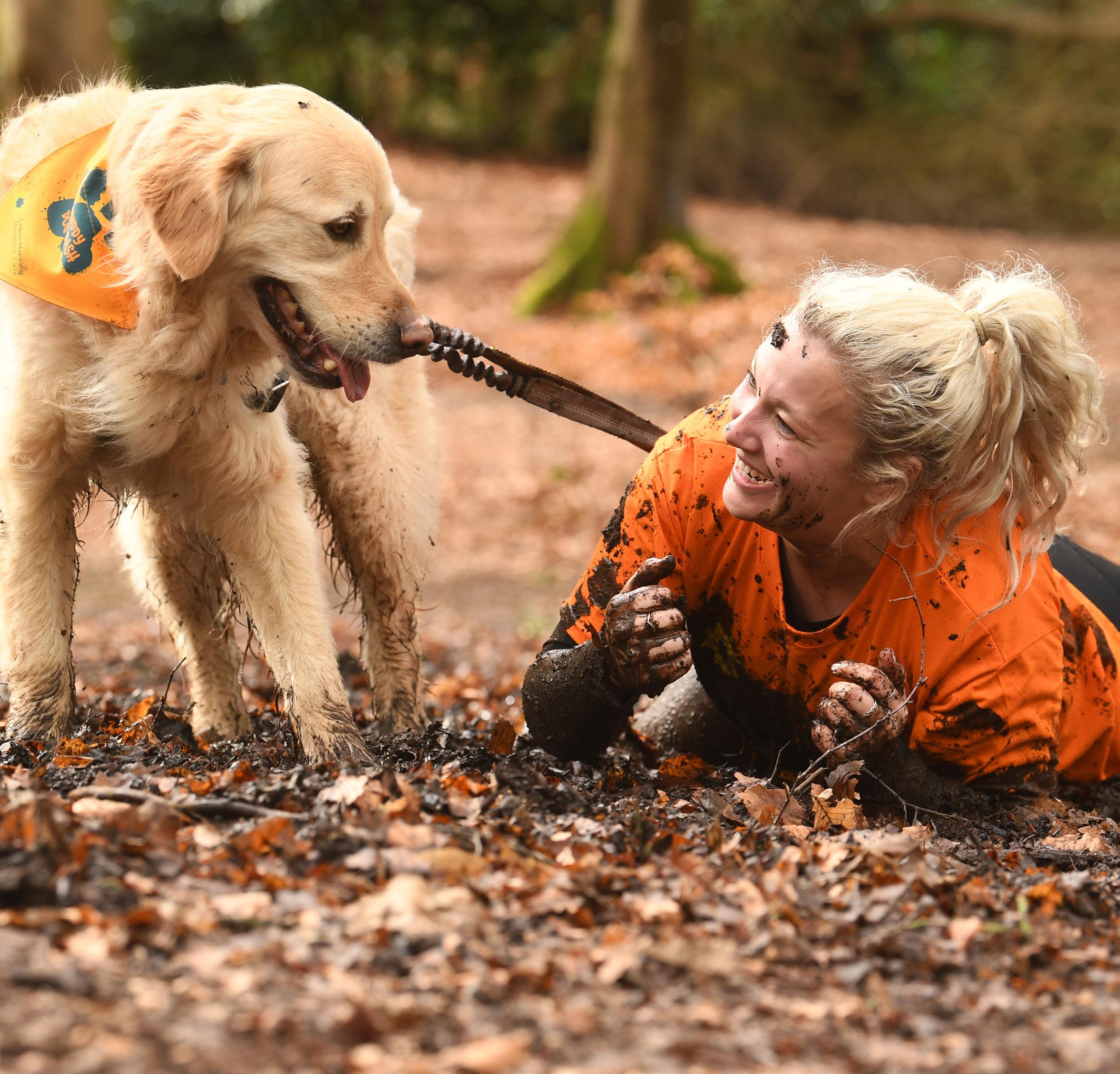
Lewis-Manning Hospice Care
lewis-manning.org.uk
Kindly sponsored by

The BV magazine, March 2024 NEWS
All
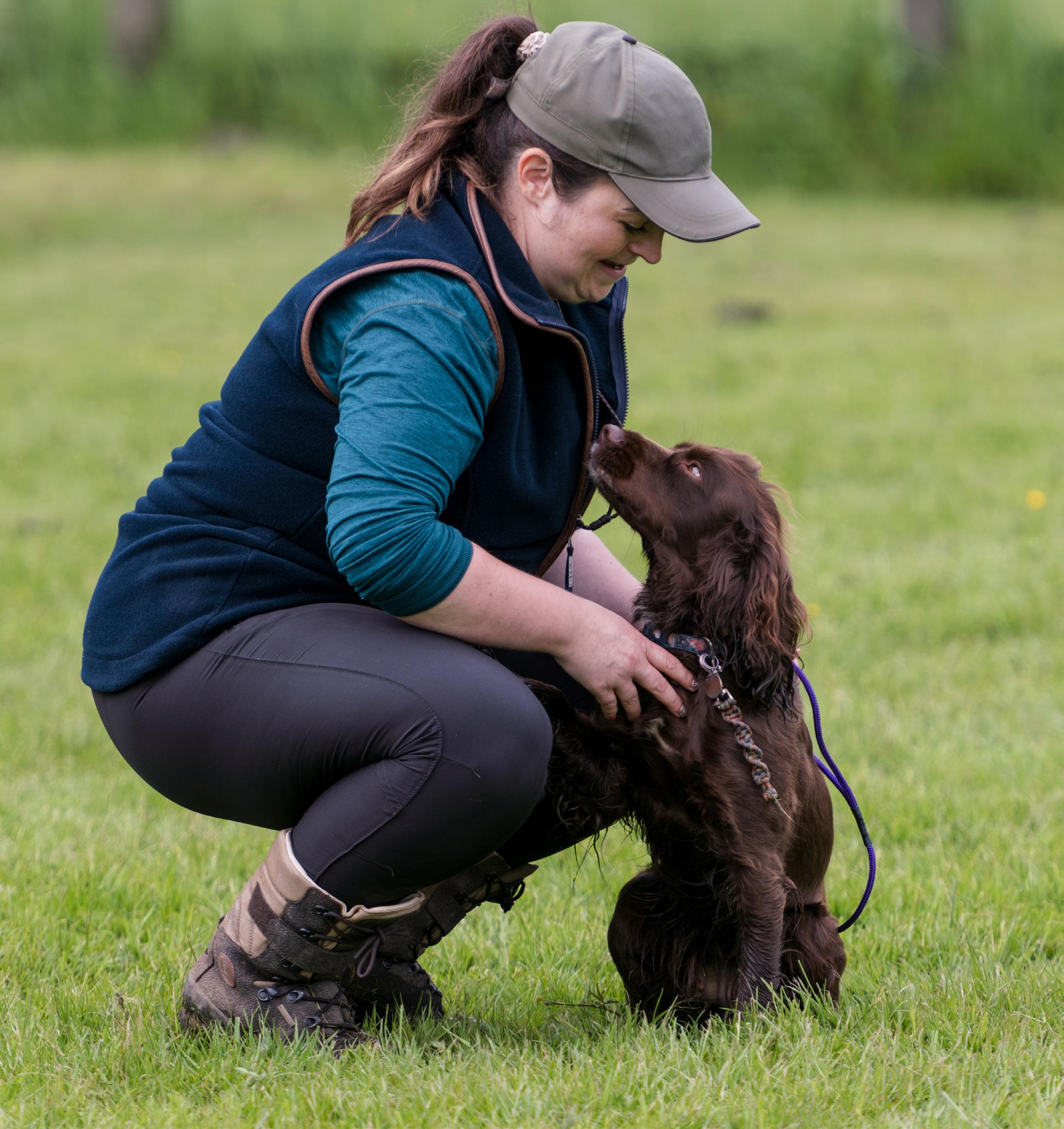
Dogged determination
Lucy Nolan was barking up the right tree when she turned her love of gundogs into a business. Tracie Beardsley meets Dorset’s only Accredited Pet Gundog Instructor
My dog Will’s claim to fame is behaving so badly at gundog training he was expelled in week two. Perhaps he picked up that I wasn’t happy standing in a cold field early on a Sunday morning? Or perhaps he just didn’t like being bawled at by a woman, head-to-toe in Barbour, who made Windsor Davies’ Sgt Major Williams in It Ain’t Half Hot, Mum sound as if he was whispering! What Will and I needed was the calm and measured approach of Lucy Nolan, Dorset’s only Accredited Pet Gundog Instructor (APGI). At Lucy’s home, just outside of Dorchester, I’m
enthusiastically greeted by her two bouncy working cocker spaniels, Bella and Penny. With a focused look and a quietly spoken command from Lucy, the notoriously exuberant dogs immediately sit. It was her love of spaniels that ignited Lucy’s passion for gundogs. ‘They’ve been in my life since I was born,’ says Lucy. ‘I grew up playing with our family’s springer, Holly. She was my best playmate.’ Lucy’s dad, a keen deerstalker and game shooter, was a big influence. ‘I loved going on shoots with Dad and watching the dogs put through their paces. When life eventually allowed me to get my
28 The BV magazine, March 2024
A COUNTRY LIVING
Lucy working with dog Penny during a training session
images: Rob Nolan
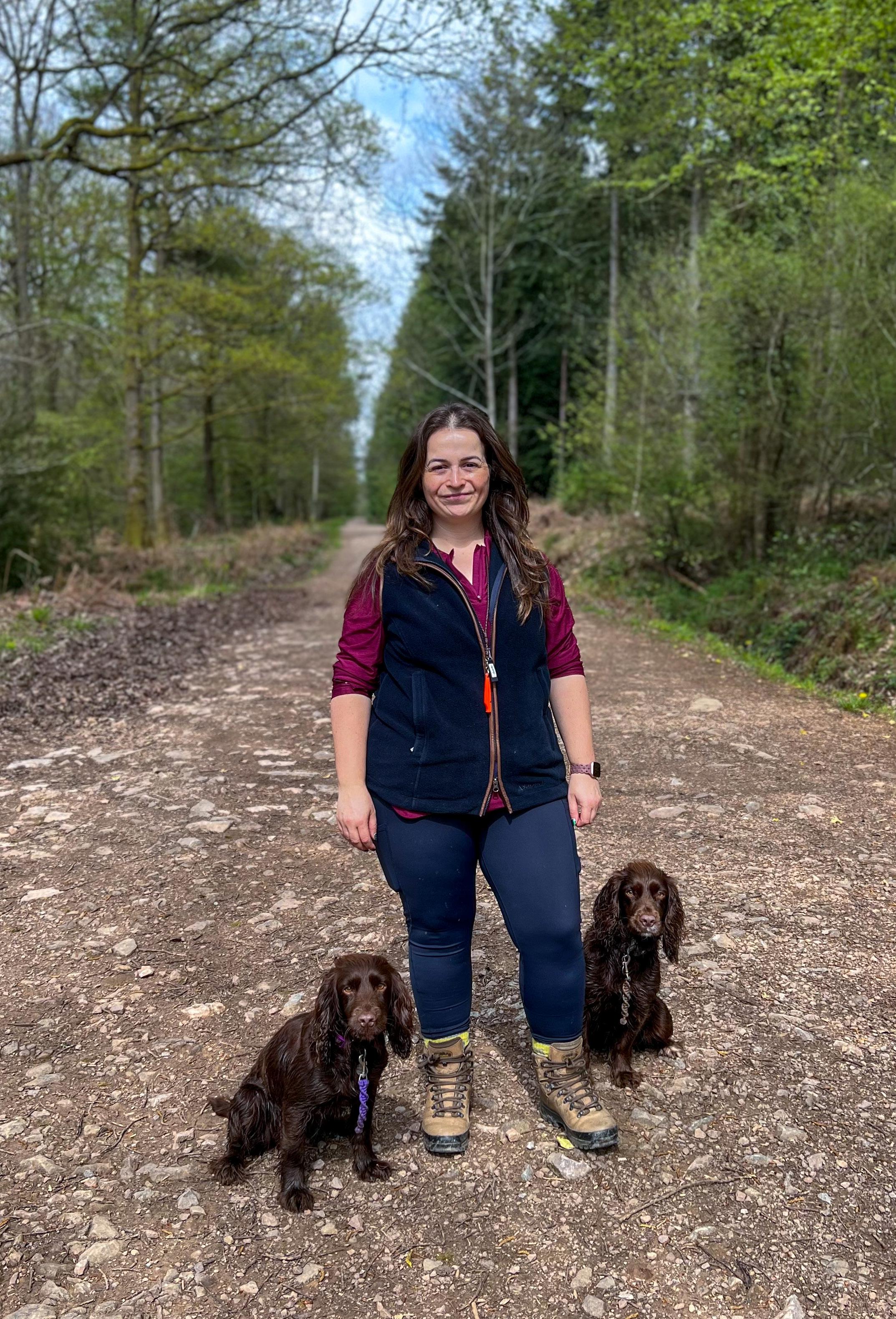

29 The BV magazine, March 2024
Lucy Nolan with dogs
A COUNTRY LIVING
Bella and Penny ,who are mother and daughter.
own spaniel, Bella, I wanted to take her on pheasant shoots so I worked with a gundog trainer to help me train her. I absolutely loved the training and soon friends started asking if I could help with their dogs.’
It could have been as easy as that to set up her dog-training business. Alarmingly, the industry has no regulations nor governing bodies. ‘It’s scary,’ says Lucy. ‘People who do just a two-hour online dog training course and get a certificate can class themselves as trainers.
‘To class myself as a professional, it was really important to me to have proper qualifications, to have all the knowledge to back up the practical side. You wouldn’t even go to a hairdresser who had no qualifications!’
So began 18 months of intensive training of the highest standard with Lez Graham, canine behaviourist and author of The Pet Gundog series. Monthly assignments included canine anatomy and physiology, canine nutrition and the psychology of the gundog. There were also practical exercises in which Lucy worked Bella. She also attended workshops in Scotland, and all this alongside her already fulltime job in property.
With the equivalent of two A-levels under her lead, Lucy launched Adhara Dog Training. The name is apt – Adhara is the second brightest star in the Great Dog constellation, Canis Major, and Lucy is married to astronomer and BV’s official stargazer columnist Rob Nolan.
The growth in gundog crossbreeds like cockapoos and springadors, alongside the perennially popular, more traditional, labradors and spaniels, has led to much demand. Lucy’s one-to-one
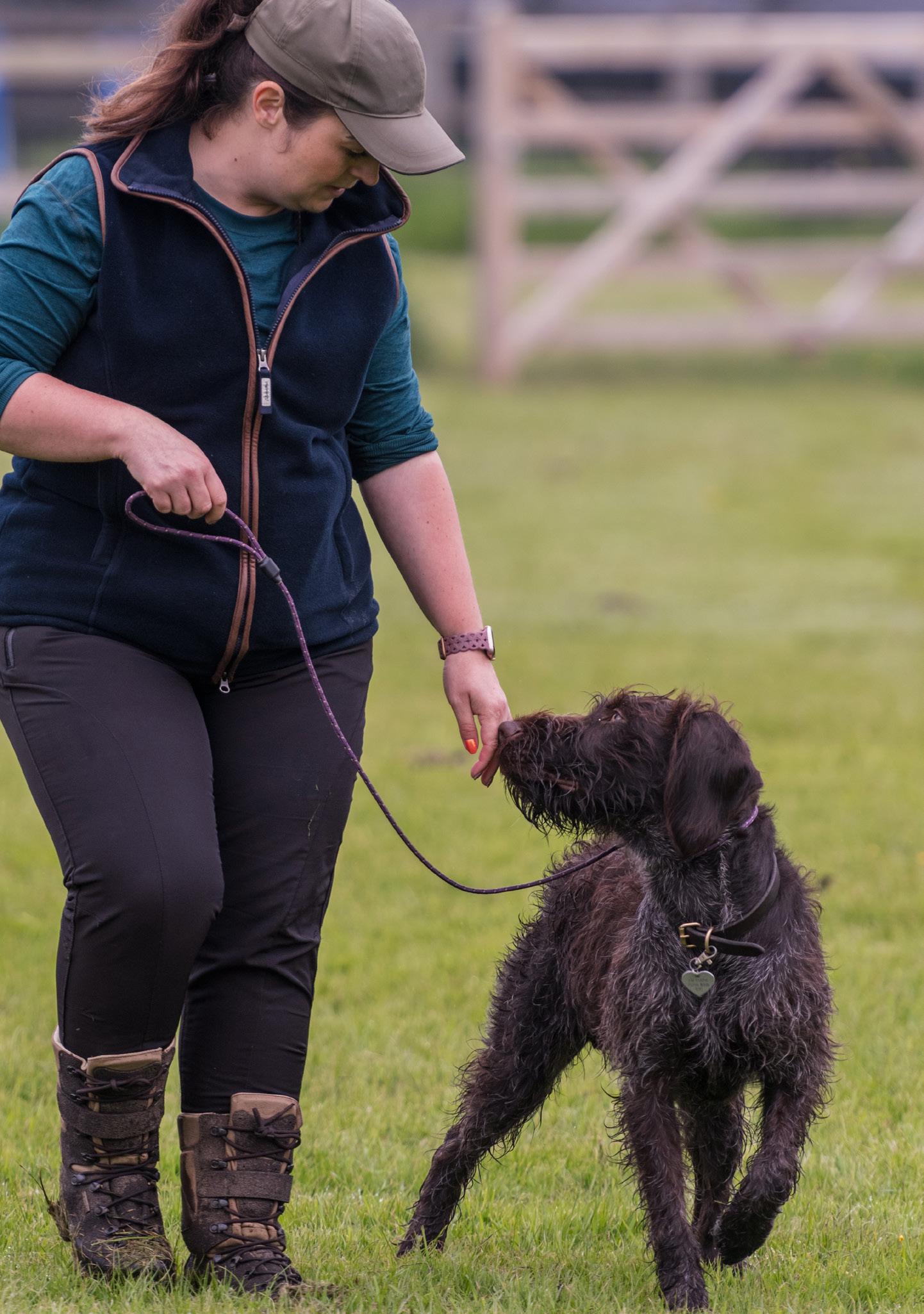
and group training sessions are already fully booked until July.
With working breeds you must give them a job, otherwise they go self-employed
‘I train a mix of people – those who work their dogs and those who’ve got working dogs as pets. With working breeds you must give them a job, otherwise they go self-employed and do their own thing! I’ve even been training a lady with two miniature wire-haired dachshunds. They now retrieve –albeit small things!’
She adds: ‘I believe every dog is trainable, and every owner too ... IF they’ll invest the time and
do the homework. If you imagine a pie chart – five per cent is me as the trainer, and 95 per cent is down to the dog’s owner. ‘My latest success story is an owner and six-year-old spaniel I’ve been training for nine months. He pulled on the lead, jumped up and was thoroughly overstimulated. He’s so calm and well-behaved now – not just because of my training but because his owner has really invested the time.
‘I love helping people understand what makes their dogs tick. With my own dogs, my passion is working them in the field during shooting season. I’m also a representative in the south
30 The BV magazine, March 2024
A COUNTRY LIVING
Lucy working with Otto, a Korthal Griffon, in a training session with his owner.
for the Girls with Gundogs Club which is a supportive community for women with gundogs.’ So, can you teach an old dog new tricks? Is there hope for me and eight-year-old Will?
’The best time for training is as a puppy, as it’s a blank canvas, but it’s never too late. You’ve got to retrain new behaviours and extinguish those old behaviours, which is admittedly harder. It’s like speaking English all your life and now being told to speak French.’
Lucy assures me training methods like Will and I experienced have changed. ‘Old-school methods were harsh and based on fear. There’s more balance now, with positive reinforcement methods and using food and play as a reward.’ That may just tempt me and Will back into a training field!
• AdharaDogTraining.co.uk

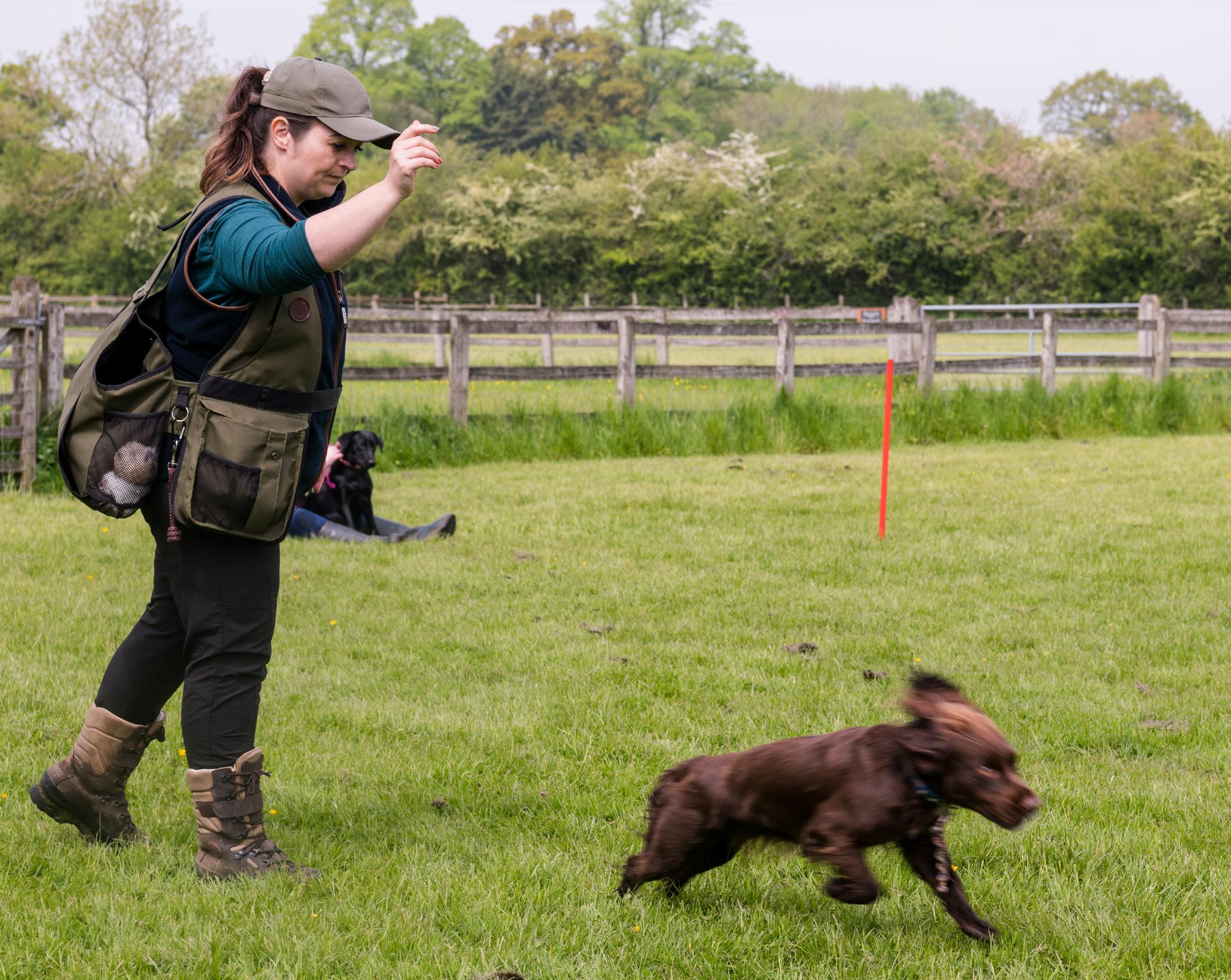
31 The BV magazine, March 2024 A COUNTRY LIVING
Poppy the Springer Spaniel retrieving Image: Charlotte Cranwell
Lucy sending Penny to retrieve – she’s so fast and keen, ‘that’s why she’s so blurry!’
by Laura Hitchcock
Research by Enterprise Nation last year suggested that a third of all the adults in the UK think about starting their own business. That’s a huge proportion of the population dreaming of ‘chucking in the day job’ and setting up on their own. Following a number of recent town business awards, editor Laura Hitchcock spoke to the overall Best Business winners from Sherborne, Shaftesbury, and Gillingham in the Local Business Awards to find out what drove the owners to make that leap and start their own business. What do they love (or loathe) about it... and what have they learned along the way? From an accountant with 30 years experience to a bridal dress shop which opened just last year, there are some unmissable similarities in their collective wisdom...
Writing his own rulebook – Nick Hunt
Nick Hunt is a quiet, warm man with a dry sense of humour, disarming kindness and a direct manner which small business owners can only find reassuring and easy to understand – both essential characteristics for any accountant. He started running his own business in Yeovil almost 30 years ago, moving to Sherborne as Hunts Accountants in 2003. ‘I went straight from GCSEs into an apprenticeship at 16. It’s a less common route now, most people do a degree or at least A Levels first and skip some of the apprenticeship levels, but I knew what I wanted. Starting at 16, it’s a seven year qualification – which meant I was a qualified accountant at the age of 23.
‘But then I hit a major issue – I knew I wanted to be my own boss, running my own business in the way I wanted to run it. But who on earth would hire a 23 year old accountant?
‘So I started out by selling SAGE – this was the early 90s, and at the time it was ground-breaking new accountancy software. It was incredibly intuitive to use to my young brain, but was much harder to the many people in finance departments and business owners still working with hand-written ledgers. Even spreadsheets were a new thing for them.
‘So I had some business cards created, and spent my Sundays walking round Yeovil’s trading estates, just dropping cards through doors. It was a slow start – I had to invest in my SAGE training, which also happened to be in Newcastle, so that was more cost. Plus I had to buy the dealership to be able to re-sell the software. I also rented a single room office in Yeovil, because back then you had to have premises, a door to have your name beside, even to be considered a
‘Most small businesses fail not because they’re a bad idea, but because they simply run out of time’

professional. It was a full time day job, but I was working evenings and weekends in a pub just to pay the bills.
‘After 18 months doing what every new business owner does and working every hour I could, I had a steady list of clients. I would sign them up for SAGE training, and while there I’d offer accounts advice or suggestions. Inevitably they wondered how I knew so much, and I would point out I was a qualified accountant. Having earned their trust, they would often move their entire business accounts to me.
Common misunderstandings
‘My first member of staff was my cousin, who I employed part time once I simply couldn’t handle the workload alone. I currently have a team of 14.
32 The BV magazine, March 2024 BUSINESS NEWS
‘As well as my own experience, I’ve obviously spent my entire adult life with other business owners. And the overriding factor of success, I would say, is that they must really really want it. Starting and running your own business is incredibly hard work. I was driven very much by my desire to do my own thing. But I had to want it enough to make sacrifices for it.
‘And it always takes more money and more time than anyone expects. The time factor is huge – in my experience, most small businesses fail not because they’re a bad idea, but because they simply run out of time.
‘Also, the business doesn’t owe you anything but what you’ve earned. Clients will come and see me and say ‘the business owes me £2k a month’ – well, no, it doesn’t. There’s no value on time and effort and input, and you get out what you create. If it’s not enough, then work out how to make it better.
It’s a bit brutal, but it’s true. You want to be a business owner?
Take ownership.
‘Resilience is probably the biggest skill any business owner can have. You must accept whatever comes up – because it’s on YOU to solve it. This is as true today as it was when I learnt it 28 years ago.
Love it or loathe it?
‘When I retire I aim to become an absolute irresponsible flake’
the freedom that it gives. If you don’t like your working week, YOU can change it. Businesses are like boats – the smaller they are, the more nimble they are, and that exciting flexibility can be their biggest asset.
‘If it’s not enough, then work out how to make it better. You want to be a business owner? Take ownership’
‘If things aren’t going well – well, that’s your fault, and you can find the solution.
And if it’s good? Well, hey! YOU did that!
‘And it’s about your whole life, not the numbers in the business account. I’ve managed to also be the husband and the father that I want to be. I haven’t been in the office on the weekend since my oldest child was born 18 years ago.
‘But at the same time the business is fundamentally mine, and whatever it takes to achieve my version of success, I do it. You don’t even question that when it’s yours. If there’s a challenge, it’s on you to solve it. I like that.
‘It scares the hell out of a lot of people. But a certain type of person will just back themselves, and take the risk.
‘I do love running my own business – and it’s not about the money (which, I know, sounds like nonsense, especially from an accountant). I love
‘The down side is that exact same responsibility; it has a flip side, and the neverending turning of it can become a grind. It’s great on a good month, but some months it can feel like a noose. ‘My ultimate aim is to retire and become an absolute irresponsible flake. I love the idea of that. Finally being able to enjoy my turn at being an unreliable idiot.’
• huntsaccountants.co.uk


33 The BV magazine, March 2024 BUSINESS NEWS
Nick Hunt, second left, with some of his team
Setting the gold standard – Louise Davis
When she was 18, Louise Davis decided to put off university for a year by taking what I intended to be a ‘short term’ job in retail.
‘I managed to get hired on the spot in a jewellery store for an assistant manager position. I wasn’t qualified – I knew very little about jewellery! But I instinctively understood what could make the shop better. I turned out to be really good at making the shop profitable. Before long I was promoted to an area manager position, moving to struggling stores within the company and turning them around.
‘Eventually I moved on to a high-end jewellery showroom in Kingston – where I was miserable. They had what they called the BOB tick sheet, which we had to complete for every single customer. Did we greet within five feet of the door? Offer a seat? Show what they asked for, plus the range in the next price bracket? Sell them insurance? Take their contact details and anniversary dates?
‘It was hard pressure sales and I really hated it. ‘But they offered terrific diamond training, so I decided to suck up the misery to get my qualifications, and as soon as I could, I left. It was most definitely what we now call a toxic workplace. I’d had my fill of retail, so I moved into the manufacturing side of the business – and found that I loved it.
‘We manufactured the jewellery that was stocked by retail outlets like John Lewis. I learned every


aspect of the wholesale trade, and eventually I was designing my own ranges, overseeing their development within manufacturing and then taking them out on to the high street.
‘A few years ago I made the move to the West Country and decided to start Honour Jewellery. I wanted to take all the elements I loved about what I did, and to hire people to do the bits I didn’t! Richard is my business partner and Sam works with me on face-to-face design appointments. I have two goldsmiths, a stone setter and an engraver.
‘We started with a small studio in Mere – it worked well, but wasn’t really big enough, so after COVID we moved to our current design studio at the Wincombe Centre in Shaftesbury.
‘And it’s funny – I still see elements of that old BOB sheet! My clients are appointment-only now – no more standing around mindlessly polishing! But they always get offered a seat and a cup of tea... We only do bespoke or personalised pieces, so we’re either designing something from scratch, or taking something from one of our ranges and adjusting it to make it more personal.
‘I particularly enjoy the unique work, where we might take a client’s own sentimental metal and gemstones and make a new piece out of them. ‘That’s the most interesting and also often the most technical work, if we’re combining different metals, for example.
34 The BV magazine, March 2024 BUSINESS NEWS
Louise Davis (left) and Sam at the Shaftesbury Business Awards
Be consistent
‘The biggest thing I think I have learned is to treat every single customer in the same way. Every single one. We find people will often come in with a small job first; can we just fix a little silver brooch for them? Next time they come in, they might be there for a platinum and diamond ring.
‘Or they might just tell all their friends and family about the brilliant place they went to where the people were so lovely – and that sort of word of mouth referral is absolutely priceless. Never ever let them walk out feeling undervalued.
‘One client was a funeral director. She had a ring which had a strong emotional significance for her, but the setting was quite tall, and whenever she carried a coffin, it dug very painfully into her finger.
‘The ring I designed sat low and flat against her hand, she loved it. She not only became a long-standing client but also a useful business associate too.
‘If I’d stopped using social media, I would probably have lost those clients.
‘And on a purely practical note, don’t spend all your money! Keep some cash in reserve – you still need to pay the bills during the quiet periods, and there are always quiet periods.
‘Actually, holding your nerve and just plodding through the mud in the bad times is a key resilience skill you need to run a business.
Love it or loathe it?
‘I love the flexible lifestyle running my own business allows me. Sitting at a desk 8.30 to 5.30 bores me rigid. Now I can choose balance – I can finish early, spend time with my kids, but then also work late into the night once they’re in bed. I’m not answerable to anyone.
‘Word of mouth referral is absolutely priceless. Never ever let them walk out feeling undervalued’
‘The other absolutely vital thing is consistency. Whatever you do to find your customers, whether that’s a poster in the corner shop or big glossy ads, you have to keep on doing it. People need to feel assured that you’re real, and not going to vanish next month. I have relied a lot on social media, because I could easily control it and it’s very cheap for a start-up. But I’ve lost count of the number of people who have said ‘I have been following you on Facebook for a couple of years, and I’ve finally managed to come and get something done.’
‘I simply don’t do well in a controlled environment, having to justify every minute. I do the same for my team – I give them space, and trust them to do their job. They have free rein on when and how they work; I always try to hire the right people, then treat them well. ‘I do loathe the admin side though. I am not a fan of jobs I *must* do that ensure the business runs smoothly. In an ideal world, I’d just talk to the customers, do the design work, oversee production … and someone else can deal with all the rest! ‘But at the end of the day, all the dull admin jobs in the world don’t outweigh the benefits of having ultimate control over the business and its direction. ‘That freedom is priceless.’
• honourjewellery.co.uk
From the delivery room to her own fitting room – Tracey Goodall
Tracey Goodall, whose Brides of Dorset business is based in Gillingham, was a full-time midwife when she took her sister shopping for wedding dresses in 2006. ‘I LOVED it. The dresses, the shops, my ability to help … it was wonderful. A friend soon asked me to come with her to choose her wedding dress, then another friend… I have no idea why. There is just something about being in a wedding dress shop. It’s my passion. I come alive. And back then I said to myself “one day, I’m going to do this”. ‘I became a stay-at-home mum when my first child was born, but it’s been ten years, and it’s time for me to do something for my own career again. I already knew what I wanted to do. I just had to take a deep breath and go for it. ‘I took a year to plan, working in some bridal shops


35 The BV magazine, March 2024 BUSINESS NEWS
Tracey Goodall (right) is ‘living her dream job’
to gain industry experience. I knew it was the right thing for me immediately – I’m actually living my dream job! The first year has been amazing, I cannot believe how far I’ve come, so fast.
‘But I had a clear vision, and I stuck passionately to it. I did so much research and visited so many dress shops. I have been with friends who have left shops in tears and have heard some horror stories from my brides. Giving brides and prom girls that special experience genuinely matters to me – and in the end, all the research led me back to myself. ‘I have just stuck to my own values – I treat every single bride the way I would want to be treated. I’m sure that has been a key factor in my success.
‘The first year was tricky, mostly because the business was brand new. I had no expectations or plan because I had no idea what sort of seasonal trade swings there might be or how long it would take to build a solid reputation.
‘And you have to be ready for the quiet months. I quickly realised that’s the nature of running your own business. You’ve just got to ride out the quiet spells, cover your bills and keep going. It’s daunting, and it’s difficult.
‘But fairly quickly, my word of mouth reviews started to spread and everything began to snowball. And the wedding industry is like a new family – the local wedding suppliers have swiftly become friends and mentors. I stock a range of options for bridal gowns, in sizes 6 to 30. It was so important to me to be size inclusive, to ensure that fuller figure brides can have the exact same experience. Every bride should get a choice and feel special no matter their size, shape or style.
‘I have a team of seamstresses – Bespoke by Summer Mai in Dorchester – who are amazing. I stock a range of ex-sample dresses which the seamstresses will alter and adjust –many brides will fall in love with a dress but want to add sleeves, or some sparkle or lace, for example. And the Louisa Jackson Bridal Collection is all made to order, with a four to five month delivery time.
‘I nearly quit before I’d even started. Finding somewhere that was big enough but also affordable almost broke me’

the Kingsmead Business Park popped up out of nowhere – I hadn’t even considered Gillingham, but it’s perfect for me. It’s on the Dorset/Somerset/ Wilts borders, and it’s gorgeous inside, attached to an old farmhouse with exposed brick and beams, huge windows so there’s loads of light … I knew immediately I could make Brides of Dorset into a destination experience, and I realised I didn’t need a High Street shop front.
‘Learning the nuts and bolts of running a business has been tough too – the admin, the tax, the finances generally. The not-fun bits you MUST do. It’s all so new to me. I attended a free course through Dorset Growth Hub which was incredibly useful. I strongly recommend it.
‘I had to make the choice to concentrate on what I was good at, and paying for what I wasn’t. I’m pretty good at marketing and social media, but don’t have a clue about websites (Vicky from The Graffiq Web Studio was an absolute saviour).
Love it or loathe it?
‘I love the flexibility I have to work around a young family. I love the absolute control that being my own boss brings – and also the lack of reporting to anyone else! Having said that, I work evenings, I work weekends … I probably work longer hours even than I did as a midwife. You’d never do it for an employer, but when it’s yours you somehow don’t mind. There’s joy in watching the business grow and thrive, knowing it’s down to you.
‘Surprisingly, my biggest issue was finding the right premises. I nearly quit before I’d even started. I have no idea how businesses manage to stay afloat while they’re paying High Street rates. It was a total eye opener. Finding somewhere that was big enough and also affordable almost broke me. But then at the end of 2022 this place on
‘The flip side is that I’m constantly juggling – it’s a good job I’m a great organiser and good at time management! The balancing act is tough.
‘But in the end you’ve just got to be confident. Trust yourself and go for it. Because you’ll never know until you do it – and when you do, it’s fantastic.
•bridesofdorset.co.uk
36 The BV magazine, March 2024 BUSINESS NEWS
Tracey Goodall (centre), owner of Brides of Dorset
The importance of developing our skilled workforce
Enhancing business competitiveness: Dorset Chamber CEO Ian Girling says investing time in upskilling a workforce can pay huge dividends
We recently held the first Dorset Skills Day in Wareham, bringing Dorset training providers and employers together to promote the various training programmes and courses available for employees – many of them fully funded – to help support growth and raise skills in Dorset businesses. The day also offered employers a really good opportunity to discuss their training needs. Skills development is vital in all Dorset businesses for many reasons.
Firstly, a skilled workforce increases the services and products a business is able to offer – vital in a competitive business environment, whether locally, nationally and internationally.
Technology continues to evolve at an ever-increasing rate – and it’s vital that businesses are able to embrace this technology with the development of internal processes, improving efficiency as well as the development of core products and services. A skilled workforce will also result in higher productivity, improved job satisfaction and improved staff retention. This last point is absolutely vital given staff recruitment and retention continues to be one of the key challenges for businesses in all sectors across the country. There is also a genuine commitment from providers to do their absolute best to develop their services to best meet the needs of employers. This includes looking at flexible delivery to help this fit around the needs of business.

No one path Staff development and training can follow many forms. Apprenticeships are now the preferred method of training and recruitment for businesses in many sectors – and this can be from a Level 2 entry-level programme right up to degreelevel training.
Providers will also be on hand to help with the paperwork. Other forms of training include online courses, in college and courses that can be delivered directly in the workplace.
Dorset Chamber has an important role in helping
facilitate a conversation between business and education. If you’d like to find out more about training for your business, please do get in touch.
Finally the Dorset Apprenticeship Awards are still open for entry until 15th March.
The Awards are free to enter for all businesses and apprentices in Dorset and celebrate the achievements of apprentices in the workplace. You can see more information on the Dorset Chamber website.

The BV magazine, March 2024
BUSINESS NEWS
by Rachael Rowe

Sophie’s Ceramics Pottery Cafe
From hen parties to Gruffalo-themed painting, Sophie’s Pottery Cafe has swiftly become a community hub for fun creativity
It was obvious there was something special about Sophie’s Ceramics Pottery Cafe in Blandford Forum when a neighbour showed me her 18-month-old granddaughter’s impressive artwork – and what a lovely thing for a grandparent to treasure. Curious about what happens at a pottery cafe, I went to meet owner Sophie Perks.
‘I come from Bournemouth, where there has been a pottery cafe for a long time. As children, we used to go there and paint all kinds of things each year –we built up quite a collection and I still have them! I moved to Blandford nearly three years ago and felt there was something missing for children in the town. I worked in education briefly but I really love the hospitality sector. I felt that I could bridge that gap – and then things very quickly spiralled. ‘We found these premises, and before I knew it we opened in October 2022. It’s been so much fun.’
What is a pottery cafe?
Sophie’s Ceramics is very different from a standard coffee-and-cake spot and you should go prepared. ‘You choose a piece of pottery to paint when you come in,’ says Sophie. ‘On average they cost £15, and there’s a £3.50 firing charge. We have a range of around 40 items plus seasonal pieces such as Easter baskets and eggs. Then you bring your item to a table, and the colour chart shows what the colours will look like when the ceramics have been fired. And then you start painting ...
‘Of course we also have cakes and drinks on sale. People become very absorbed with the artwork, it’s so relaxing. We have had the odd paintbrush dipped into hot chocolate by mistake!
‘Recently I launched a Mother’s Day afternoon tea event – it was completely sold out within 90 minutes of being advertised. During half term we do themed children’s events – one was a Read and Paint event where my granddad read the Bear Hunt book to everyone while they painted a character!’ As well as the four other staff, Sophie’s

38 The BV magazine, March 2024
MEET YOUR LOCAL
Sophie Perks launched the pottery cafe in October 22
grandparents help out at the cafe. Granddad Geoff not only reads stories but also has a seasonal job as Father Christmas in the Paint With Santa events. He also makes a good cup of coffee.
‘We’re on community service here,’ he says.
‘Baby hand and footprints are very popular,’ says Sophie. ‘We also do paw prints from animals, which is a lovely memento of a pet. We have a Gruffalo event planned for Easter, where children can paint a mouse or a Gruffalo.’
Although there are lots of child-friendly events, Sophie says 60 per cent of her customers are adults. ‘We have adult-only events such as baby showers, hen nights and birthdays. And of course people can just come in on their own and do something. When we have adult-only evening events, people bring a takeaway or bottles of fizz with them.
Keeping up with demand
Upstairs there is an entirely different operation, with Sophie’s nan, Gloria, helping to dip items in glaze before they are fired in the kiln. The entire firing process takes around 18 hours and then they are left to dry off properly. After ten days they are ready for collection (or can be posted if someone visited while on holiday). The team organises everything like a military operation.
‘Some of our most popular items are the obvious mugs and plates, but also spoon rests and butter dishes. People like things they can use in the kitchen. And our own kitchen bestsellers are the hot chocolate and milkshakes!
‘We use local suppliers wherever we can. Our coffee is local and our cakes come from Cakeheads


in Dorchester. I also get vegan cakes from a supplier in Basingstoke. We have about five types of vegan milk here so can do vegan milkshakes, and we also cater for gluten free.
‘The biggest challenge has been dealing with the demand – a nice problem to have to be honest! – and making sure we can process everything in a timely way. We had to get a larger kiln, and can now fire up to 100 items at a time.
‘I’m so proud of the community feel in the cafe. When we opened we wondered if we would get repeat business, but people keep coming back. I love the community buzz – and we have got to know so many people.
‘We’re such a mixed group and there’s always a friendly smile for everyone who comes in. We have also worked with care homes and the children and mental health teams at Blandford Hospital.
‘I won the Best Entrepreneur Business Blandford award last year. I’m always looking for new ideas. We have just launched our afternoon tea, which was more popular than we thought it would be. What I’d like to do next is more community work –we went to Leweston School and Spetisbury Manor Care Home last year, and I’d like to do lots more of that type of work. Blandford is a lovely town with a wonderful community and people do look out for each other here.’
• sophiesceramics.co.uk
8 Barnack Walk, Blandford Forum, DT11 7AL (opposite Morrisons)
Tuesday to Saturday 10am to 6pm Sundays 10am to 4pm Closed Mondays
39 The BV magazine, March 2024 MEET YOUR LOCAL
There’s a wide range of blank pottery for customers to choose from
The colour chart plate shows what the paint colours will look like when the ceramics have been fired

40 The BV magazine, March 2024
Farming, community and ‘no’ to a ghetto
Simon Hoare MP’s March musings: championing British farming, lambing season, community advocacy and Government collaboration
For this month’s column I thought I would look at some varied topics rather than a thematic piece. Farming and food production remains one of the largest part of the UK’s economy – it outstrips the automotive and aeronautical industries by some distance. North Dorset born Dr Luke Evans, MP for Bosworth, launched a campaign in 2023 to persuade supermarkets to have a ‘buy British’ section on their websites. It started small, with just a few of us supporting him, but it grew and took root, with a raft of my Parliamentary colleagues adding their voice. Morrisons, Sainsbury’s and Aldi have all now created Buy British tabs on their websites – and we have to hope that other retailers will follow suit. I would encourage readers to write to the chief executives of businesses urging them to do so. Such action would augment and support the recent announcements made by the Prime Minister at the NFU Conference, strongly supporting farming. Still on the subject of farming – we are on the cusp of lambing season. We dog owners need to remember that our adored companions are not that far removed from the wolf and that latent instincts can kick in. Please please please ensure your dog is on a lead when around livestock. I have seen for myself the mauled carcasses and also the mutilated yet still (barely) alive ewes and lambs that have been attacked by dogs. It’s not pretty. One cannot claim to be an animal lover and then act (or rather not act) in a way that leads to devastating, painful and costly attacks. Please be sensible and cautious.
Blandford ghetto
On the subject of being sensible, I was delighted that the Planning Inspectorate refused the appeal to create a ghettoised caravan park for Ukrainian refugees on open land near Blandford. We have all welcomed Ukrainians fleeing the war as they seek sanctuary from the horror, and we have housed them with families to provide stability, support and comfort. We have not stuck them in a caravan in some isolated field. Residents, Blandford Town Council, I and others recognised this proposal for what it was – a not particularly well-disguised Trojan Horse to support a future application for housing development (on a
site which has already been explored and rejected for new homes). The Inspectorate listened to our policy-based concerns and dismissed the appeal. It was the wrong scheme, on the wrong site, promoted for entirely the wrong reasons.

A good base
Many of us will be familiar with the phrase ‘joinedup Government’. Sometimes it feels more like an aspiration rather than a way of actually working. Against this backdrop, I thought readers might be interested to hear briefly about my joint work as part of the DHLUC ministerial team with my opposite numbers. We are all concerned about ‘bed blocking’ – people in hospital who are ready to leave but due to delays in their at-home care packages find themselves stuck in hospital. The Department of Health & Social Care and I are working closely to ensure maximum integration between our councils (who provide the care) and the NHS. Likewise I am working very closely with ministers in the Department for Education on issues relating to SEND policy, home-to-school transport and policies towards combating child abuse and exploitation. The role of local government (for which I have ministerial responsibility) is absolutely pivotal, given its place in service provision.
One cannot claim to be an animal lover and then act (or rather not act) in this way
There’s more to do, I know, but steady delivery of joined-up government on policies that really matter to the lives of so many in North Dorset is a good place to begin.
Power of a title
One of the most satisfying parts of an MP’s role is the Advice Surgery. Constituents who have been wrestling with a problem for months come and see me to explain the issue and seek my help. No MP is a miracle worker, but the magical properties that the words Member of Parliament have still amazes me. With those three words, attention is gained and action summoned up.
We can’t solve all of the problems but we do give everyone a damned good try. If you think I can help please email me at simon.hoare.mp@parliament.uk to arrange an appointment.
41 The BV magazine, March 2024 The BV magazine, March 2024
POLITICS
Protest, protest and again – protest
Along with the looming spectre of unstoppable climate change, the urgent need to resolve the crisis in Gaza stands out at the moment. The horror of the barbaric Hamas attack in Israel on 7th October last year has been followed by the horrors of Israel’s response, which has continued for months now.
While our Parliament ties itself in knots simply trying to agree how to word the call for an end to it all, innocent Palestinians, many of them women and children, are being slaughtered in their thousands. The UK is complicit while it continues to supply Israel with military equipment.
You can’t claim the moral high ground and condemn the authoritarian behaviour of other countries’ rulers while happily making money doing business with them.
A lot of hot air
The right to challenge a government’s actions is one of our most precious fundamental democratic rights, but our present UK government is actively seeking to suppress public protests, especially those of environmental groups. The last thing it wants is for attention to be drawn to its disastrous environmental record, and it only wants protests to be allowed when they are done in such a way that they can easily be ignored.

Government is seeking to suppress public protests
Scientists began warning decades ago of the dire consequences of global warming caused by the burning of fossil fuels.
increase in greenhouse gas emissions. Increasingly desperate protests by concerned citizens have mostly drawn hostility from right-wing media, with the Daily Mail, for example, branding protesters ‘ecozealots’ and recommending French police tactics of tear gas and baton charges.
The Police, Crime, Sentencing and Courts Act 2022 and the Public Order Act 2023 are designed to have a chilling effect on public protests, along with the Government urging judges to prevent protesters telling juries why they are protesting. Now there are proposed amendments to the Criminal Justice Bill.
I applaud the continuing public protests of many Israelis against the actions of their own hard right government.
Since 1995, annual international conferences have generated a lot of hot air but completely failed to stop the steady
We’re on a slippery slope, and we lose our right to effective protest at our peril.
Ken Huggins North Dorset Green Party
A plea for prudence: please do no more harm
Depending on whether you are an early and avid reader of this fine magazine, or you have let the politics section languish for a couple of weeks, you will either be waiting for, or chewing over, the Chancellor’s Budget decisions and statement on 6th March. But whichever side of 6th March you read this, the clock is ticking down on the current government
– which explains a great deal about the approach the Chancellor appears to be taking.
The Whitehall whispers suggest depressingly political tax cuts
First, let’s recall that it’s only been a few months since the PM promised ’long-term thinking’ and that he was ‘the change we desperately need’. Now, apparently, it’s about shortterm thinking to prevent the change we need ... Last week I saw some of the
national papers warning us of Jeremy Hunt’s ‘tax sandwich’. This is where some thin – but hopefully sufficiently distracting – tax-cut filling is briefly inserted between two doorstop wedges of highly taxed bread.
One of those bread slices is already in operation, and the other will be applied on the other side of the election – not by a new Labour government but by current Conservative plans already set out to 2027-28. As the clock continues to tick on
42 The BV magazine, March 2024
POLITICS
the slapstick and dramas of the current government, surely they owe the country a more dignified and competent final act? For a while, there were glimpses of grown-up decision-making, with worthy tax breaks for business investment, but taxes remain at their highest level on record. This is due to a continued freeze on tax thresholds while public services are starved.
The budget should be the opportunity for redemption. Instead, the Whitehall whispers suggest depressingly political tax cuts, shamefully aimed at political survival.
These choices risk making the nation’s long-term challenges
harder to fix – much like applying a Band-Aid to a wound that needs stitches. What choices would I make?
The focus would be on what I see we need in North Dorset and across the UK: prudent spending and investment in public services, infrastructure, health and defence. Giving people back their money is right when other factors are under control, but people are worried about critical, shared public services.

Cutting taxes now is ill-advised. My feeling is that the Chancellor should act more like a doctor and “do no [more] harm”. Conservative populists who steered the country towards so many cliff edges owe the nation a period of quiet governance on their way out. They must resist the political game playing and fantasy fiscal football.
Gary Jackson
North Dorset Liberal Democrats
Second homes – a pointless cash cow policy
This month Conservative and LibDem Councillors approved proposals for a 100 per cent premium on council tax for second homes.
With around 5,500 households on Dorset Council’s housing register, you’d be forgiven for hoping that this might be intended to alleviate a housing emergency in Dorset caused by a failure of local housing policy from Conservative-run councils for the last 35 years. Not so.
First, the policy is likely to do precious little to encourage second homeowners to free up their properties for those with more pressing housing needs – not least because second homeowners will tend to be wealthy enough to cover the additional costs of the privilege of owning a second home. But with house prices
ten to 12 times a typical salary for the area, Dorset people in housing need would simply not be able to afford to buy those properties even if the increased premium were to result in a flurry of second homeowners offloading their country pads.

Second, while Tory councillors also voted for 40 per cent of the revenue raised from the second home premium to be ring-fenced to support the provision of affordable housing in Dorset, in December they reaffirmed their position that they would not be investing in council housing. Dorset Councils owns no council houses and demand for social housing is met
The policy is likely to do precious little to encourage second homeowners to free up their properties
exclusively by private housing associations, so it is unclear how exactly this money might be used to support the provision of affordable housing. As such, Conservative housing policy in Dorset remains confused, insincere and totally inadequate.
The 100 per cent premium on council tax for second homes is just the latest example of this. Instead of a solution, it’s a cynical ‘cash cow’ that has precious little to do with meeting housing need in Dorset, and much more to do with filling the growing funding gap for other critical frontline services that have been continually eroded by Tory cuts to local authority funding since 2010.
Pat Osborne North Dorset Labour Party
43 The BV magazine, March 2024 POLITICS
Dorset’s strategy against second home surge
Chris Loder MP is a long-time advocate for the new Council Tax premiums on second homes to combat housing inequality in Dorset
You may have seen the news last month that second homes in Dorset will be subject to a 100 per cent Council Tax premium from 1st April 2025. In addition to the Second Homes Tax, from 1st April this year, properties classified as long-term empty and unoccupied will pay a 100 per cent Council Tax premium. I have consistently campaigned for the introduction of a second homes tax; back in September, I raised the issue directly with the Chancellor.
We have a particularly high concentration of second homes in West Dorset, compared with other parts of the county. This is especially so for our villages and hamlets, including those in and around Sherborne and Bridport. Recent figures suggest that there are now more than 2,000 second homes in the county, many of them unoccupied for long periods. It’s an issue that affects much of rural Britain, and it’s unfairly preventing hard-working, locally-born residents in West Dorset from getting onto the property ladder.
It also risks zapping the life and character out of our rural communities.
in the news. Many of our region’s local authorities have been setting their budgets this week. Somerset Council has proposed an increase of 4.99%in Council Tax. But we ought not to forget that the Liberal Democrat administration in Somerset only weeks ago lobbied the Government for an additional 5% increase, which would have seen an enormous hike in people’s bills in the middle of a cost-ofliving crisis.

And it still doesn’t detract from the overall view that at all tiers – parish, town, and county – Somerset residents are facing prospective tax increases on an unprecedented level. We need to again ask why Somerset Council thinks it is acceptable for Somerset’s taxpayers to shoulder the cost. It was, after all, under the Liberal Democrats’ leadership that the black hole* in this council’s finances ballooned from £38 million to £100 million – a deficit of £62 million that’s pushed Somerset to near-bankruptcy.
It also risks zapping the life and character out of our rural communities
The introduction of a Second Homes Tax in West Dorset is only permissible because of the Government’s Levelling Up and Regeneration Act, which I voted for at every stage in Parliament. The legislation also allows for greater localised control over the growth of short-term lets, which are an additional issue in rural areas. New regulations, aimed at addressing the rise in properties used as short-term lets, will be introduced by the summer. They include mandatory registration of shortterm let properties and the introduction of a new separate class of planning terms. In addition, where there are local concerns about the overconcentration of short-term lets, Dorset Council can require a planning application for change of use of a dwelling. Taken together, these measures represent a significant step towards protecting our local communities and our way of life in rural Britain.
Over the border
In other news, the topic of local government finance in our neighbour, Somerset, has once again been
Tax rises have also now been confirmed for nearby Yeovil, where the Lib-Dem run town council has approved its biggest ever tax rise: a Band D home in the town faces a 90% increase and will pay an extra £130 a year.
Taunton residents will also be facing an eyewatering increase, where another Lib Dem-run town council voted through a 179% increase in Council Tax – a Band D home in the county town will pay an extra £192 a year.
In addition, Somerset residents in towns such as Langport, Somerton, Martock, have parish precepts within the top 50 in England, costing households as much as £325 a year…
As always, I’d be most interested to know your views on these topics. You can contact me by email: hello@chrisloder.co.uk and you can keep up to date with my latest news by visiting chrisloder.co.uk or write to me at House of Commons, London, SW1A 0AA.
* Ed. note: The Conservatives ran the former Somerset County Council from 2009 to 2022.
44 The BV magazine, March 2024 POLITICS

Employ My Ability offers vocational training for students with learning disabilities and special educational needs and disabilities.
One of their students, Maddie Walters, spent her work experience with us, and now writes a regular column - Ed
Join the Birdwatch: is your garden bird-friendly?
Bird-watching has always been popular. Across the UK, more than half a million people took part in the RSPB’s Big Garden Birdwatch 2023, counting and reporting on more than nine million birds!
The Big Garden Birdwatch is a public survey, involving people tracking the types of birds – and how many of them – can be seen in their garden. Collectively it builds a picture of bird activity in gardens across the UK. Click here if you would like more information about how YOU can take part!
Looking at this year’s results, the top three birds seen in Dorset gardens are the blue tit, the house sparrow and the starling.
But rare birds are sometimes seen as well!
This year in Dorset there have been confirmed sightings of the Eurasian goshawk and common chiffchaff (Siberian)! The Eurasian goshawk is a forest-dwelling hawk with pale eyebrows and orange eyes. The common chiffchaff is a very plain and dull, more brownish bird overall with pale eyebrows and dark legs. Have you seen on in your garden?
If you do see a bird and don’t know what it is, this online identifier tool might help
If you want to make your garden more birdfriendly here are some ideas:
• Put out bird food on a bird table and in feeders. Try seeds for sparrows and finches, fat balls for tits, and fruit and worms for thrushes and robins. Try to put out only what will get eaten, so there’s nothing left to go off
• Put out fresh water and make sure you clean feeders and tables regularly
• Provide safe nesting places by planting native trees and shrubs, or putting up nest boxes or a bird box.
A bird box can substitute for a tree-hole and many birds will move in the autumn to get ready for winter.
If bird-watching appeals to you, why not join a local bird watching group? Take a look at Dorset Bird Club on Facebook, where you can join events, talk birds – and of course report any rare sightings!



45 The BV magazine, March 2024 porterdodson.co.uk Have confidence in the decisions you make. When it comes to giving advice, we take the time to get to
your
and
you
to achieve,
that we explain your options in everyday language. By working with us, you can be confident that whatever decisions you make, they’ll be based on sound legal advice that’s in your best interest. Contact us at: info@porterdodson.co.uk Commercial & Private Law COMMUNITY NEWS
know
business
what
want
whilst making sure

This month’s news from the unofficial capital of the Blackmore Vale...
Join our cheerful volunteer family! Plus cars, boots and looking forwards to Easter
Pauline Batstone shares her monthly round up of what’s happening among the town’s collection of community enterprises and events
Spring has unmistakably arrived, heralding the perfect opportunity for a fresh wardrobe update with ladies’ attire from The Boutique and gentlemen’s fashion from Dapper Chaps. Alternatively, you might be feeling like now’s the perfect time to revitalise your living space –head to the Furniture Store in the old Barclays Bank for an enticing selection of new-to-you items to keep, upcycle or re-purpose. Of course, then you should add some practical and/or decorative touches with some items from The Emporium.
For art enthusiasts, The Art Gallery continues to offer a delightful selection of pictures. Additionally, above the Furniture Store, don’t forget the hub providing free school uniforms – if you have no need of it yourself, be sure to tell any parent of school-aged children that it’s there and available.
Embrace sustainability – all our items are pre-loved, economically priced, recycled and good for the planet.

To sustain our thriving community, we are in need of more volunteers, particularly at The Boutique. Would you like to come and join our cheerful family? Get out the house, meet new people, fill a few quiet hours and immerse yourself in the lovely feeling of giving back. However, it comes with a warning: your new found love for the fashion at The Boutique may necessitate a larger wardrobe from the Furniture Store.
Recently, a Christian Dior silk scarf caught my eye during my shift. It simply had to come home with me, albeit at a price.
Sadly, until we gain some new volunteers
The Boutique will be closed on Mondays and Tuesdays. If you can spare a couple of hours during the week, please do drop by The Emporium or 1855 for a friendly chat, or email Cheryl on 1855stur@gmail.com.
In other news ...
• Mark your calendars for 2nd March, when 1855 will host its customary Meet the Traders event in the morning, offering a perfect opportunity for leisurely browse around the ever-changing stock.
• Car and Bike Enthusiasts are welcome to come along to the regular event for classic and sports car and bike enthusiasts. Classic cars and bikes, interesting modern sports cars and bikes are all welcome – it’s free and very informal. They meet from 9am til 12pm on the first Saturday of each month, in the winter at the bottom of the Railway Gardens. Next meet is Saturday 2nd March and then 6th April will, weather permitting, be the first of the year back on The Rec. Please come along with your car or bike, or just to have a look and talk to other enthusiasts.
FREE PARKING in town on both days.
46 The BV magazine, March 2024
ADVERTORIAL
Some of the wild daffodil planted with the help of William Barnes school in November 2019
• Prepare for the return of the regular Car Boot Sales from the 7th of April until the 1st of September, with sellers setting up from 10 a.m. and buyers welcomed from 11 a.m. Parking will be available on site, with proceeds supporting the Vale Pantry and Hedgehog Rescue of Hazelbury Bryan.
• The Newton Residents Association will conduct its 2024 AGM at The Bull Tavern on Friday 15th of March, at 6:30pm. Thanks to Darryl and Emma of The Bull for their support.
Looking to Easter
As Easter approaches, our churches are abuzz with activities. Look to their respective web pages for event details.
On Good Friday, a brief service will be held at The Cross in the Market Place, followed by complimentary Hot Cross Buns from SturAction. Central to Easter celebrations, on Saturday 30th March, the three Sturminster Newton churches will embark on Jesus’ Easter Journey, commencing at Christian Fellowship, then Methodist Church, and concluding at St. Mary’s, with sessions at 10.30am and 12.30pm, fostering moments of reflection and praise. Easter Saturday also promises some tasty indulgence with a Chocolate Fair at The Exchange from 10am to 2pm.
The Vale Pantry Easter Egg Hunt will be taking place on the same day from 10am to 4pm. And to counteract all that chocolate consumption, assemble at The Exchange at 2pm for an Easter Bonnet Parade around town. Don’t fret if you forget your bonnet – spares will be available at The Exchange from 1.30pm and everyone receives a prize – there’s absolutely no competition involved!
On Easter Sunday, our churches will all hold special services, marking the pinnacle of the church calendar. Consult their notices for precise details.
Save the date
Volunteer Day is on 13th of April, bringing together voluntary groups and potential volunteers from 11am to 3pm at Stour Connect on Bath Road. Come and see if there’s something you could be part of – and there will be an accompanying Jumble Sale if you enjoy a rummage, too!
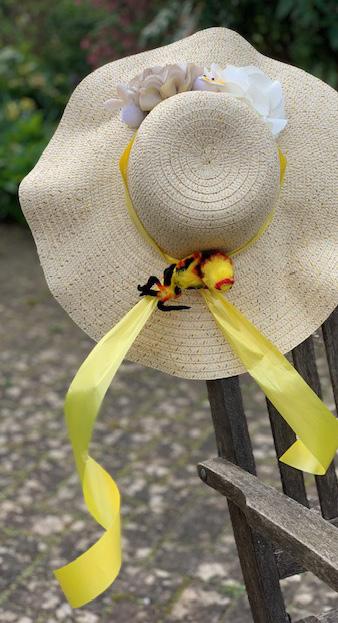
D Day stories
Lastly, a reminder that we’re seeking contributions from local people whose family members took part in the build-up and military invasion of Normandy 80 years ago. Stur LitFest will be creating an exhibition of local family testimonies and images that will be on show in the gallery at The Exchange. On 9th June, the exhibition will be formally launched alongside author events commemorating the invasion. If you’d like to contribute to the exhibition, please send a short summary (500 words maximum) of your forbear’s experience in June 1944 and a copy of any images to sturlitfest1@gmail.com – or deliver a handwritten account to the Town Council Offices in Sturminster Newton, marked ‘FAO Cllr Pauline Batstone, D-Day 80th Anniversary Project’.
47 The BV magazine, March 2024

Letters to the Editor
Want to reply? Read something you feel needs commenting on? Our postbag is open! Please send emails to letters@BVmagazine.co.uk. When writing, please include your full name and address; we will not print this, but do require it.
On the hunt
(our postbag was busy after last month’s story on the Blackmore & Sparkford Vale Hunt suspension, and I have a selected a couple of the representative views. None of those contacted was willing to have their name and address published in connection with this matter. Ed)
It was terrific to see you cover the B&SV hunt story properly. Whichever side of the hunt debate you lie on, there can be no ambiguity on the law around allowing a pack of dogs to kill a fox in front of you. The B&SV Hunt have not done themselves, nor other responsible hunts (of which there are some, contrary to popular opinion), any favours by allowing such practices to continue. At a time when we are expecting a new Labour government who are already planning tougher measures on hunting due specifically to this kind of action, it is more important then ever that hunts abide by the spirit of the law, even if they say there are loopholes in the meaning of the words.
Well done to The BV and to Andrew Livingston for the factual, calm and unsensational reporting.
Name and address withheld
How long will these hunts continue to get away with their incessant and blatant disregard of the law? The drone footage was shocking – well done to the sabs for obtaining such irrefutable evidence. As a lifelong Dorset resident I am only too aware that in the past, the sabs have been as much of a problem as the hunt themselves. I hope this is changing, and calm, clever data recording is the way forward for a suitable solution on all levels.
Name and address withheld
I have long since noted that it says a lot about a news publication when a difficult story happens right on their patch – do they ignore it, sensationalise it, or investigate it thoroughly? Well done BV team on tackling the hunt story head on, and in such a detailed, balanced manner.
Name and address withheld
On rugby
It’s not often your favourite local news publication reports on your favourite sport. When I saw
the picture of Jerome Kaino in last month’s BV I was jumping for joy – until I read the byline. For someone who describes himself as a fan of the sport from such a young age. I was extremely disappointed with Sam Peter’s article and how little time he spent talking through the benefits of playing rugby, especially at a young age.
I played at school and for my local club of Bridport RFC from the age of four – I never witnessed anyone suffer from a concussion. I do not doubt that there is an issue with concussions in the professional game, but these figures do not compare with either the junior or amateur levels. In his article, Mr Peters says that he hopes to see the game return to being an evasion sport. Since its conception, rugby has been an invasion game – the object being to get the ball over the opponent’s try line. If the game were to be an evasion game, as Mr Peters so hopes, then you take away the fundamental part of why the sport is welcoming for such a huge demographic of young children. It is a sport for all shapes and sizes. Evasion excludes players that are of a larger size from taking part – they don’t have the agility to avoid and move around defenders.
I don’t know where my life would be if I hadn’t pick up a rugby ball as a chubby child. I know for a fact that I wouldn’t have the skills I do in leadership and teamwork, nor the respect for those in authority. I respect that Mr Peters is a distinguished journalist, but it’s been a long time since he played rugby as a child. Did he really learn what’s best for children from watching a professional sport that bears little resemblance the one that gets kids out, being active and happy? I would love to see him use his platform to also highlight what’s great about rugby, not just bash the professional level of the sport that gives so many of us 80 minutes of happiness a week.
Andrew Livingston, Hooke
On Snoozy Floozy
This year’s Child Okeford Pantomime was a tale that loosely follows the Sleeping Beauty story, wonderfully penned by John Nash. There were three shows; Friday and Saturday night plus a delightfully chaotic matinee on Saturday afternoon, and all three were performed to full houses.
48 The BV magazine, March 2024
LETTERS TO THE EDITOR
The cast were clearly inspired by the fabulous steam punk set painted by Rob Adams and Celia Ebdon, which was echoed by the costumes created by Jackie Chapman and Gilli Gale.
Throw in dramatic lighting by Mike Powell and (sometimes hilarious) sound effects from Tim Beynon, and this Panto was ready to be baked.
The cherry on top was the superb musical interpretation of Phil Blake and Nick Briggs (despite losing their drummer 24 hours before curtain up).
There were fairies on scooters and an evil sorceress (with the obligatory frog eating, simpering sidekick) singing Paint It Black, the best bad jokes and classic panto moments, all stitched together under the imaginative direction of Sammy Upton.
Happy audiences headed home still grinning, saying that “that was the best one yet!” and “wish there were still tickets for tomorrow”.
Speaking to some of the cast after the last show, they wanted to express their thanks to the audiences for their energy and inspiration.
I, for one, can’t wait for the next production.
Barbara Ireland, Child Okeford
Can you help?
When we first arrived in North Dorset there was a bakery called Smiths in Gillingham, on Hardings Lane I think, and they used to make a particular loaf called a Special.
I am wondering if anyone in the area has the recipe? We have tried time and again to replicate it, without success. Can anyone help?
Gay Pirrie-Weir, Wincanton (contact letters@bvmagazine.co.uk if you can!)
On East Stour
I am disappointed and indeed surprised that The BV have not informed their readers that Dorset Council, in their wisdom, have refused to install traffic lights at the East Stour A30 crossroads.
The grandly titled Collision Reduction Officer states that “this site is too constrained” (what ever that means) and any signalling would be “difficult to achieve” (!?) and that the scheme was likely to be “so expensive that it would not be justifiable”. He goes on to say that “there are no capacity issues at the junction.” So it has not even been costed before a decision made?
Now we will have to wait for a fatality before the Council make the required decision. Hedge cutting and road markings are not enough. They only regard any collisions that have taken place as ’slight’. Disgraceful.
Jeremy Bloomfield, address supplied
On yet more development
Bourton, the most northerly part of Dorset, continues to try and absorb the 30-plus families on the housing development on the former Bourton Mill site. The GP surgery in the next village is small and already extremely busy. St George’s Primary School is turning away the kids of new arrivals. Yes, admittedly, we have a garage and small convenience store, a draughty barn for a village hall, a pub and a church.
There are almost no other places of employment. The village’s primary asset, however, is its setting: astride the nascent Stour, nestled under the scarp slope of the Cranborne and West Wiltshire Downs National Landscape with heritage buildings and important views, green fields in every direction. Remote rural village, right?
So, here’s the plan. Let’s increase the number of houses from about 400 to more than 500 in short order, adding a couple of hundred more cars which will be driven to work, school, leisure, shops, healthcare … dentist.
Let’s inject not one but two new, densely-packed housing estates on green field sites outside the longstanding settlement boundary, plus some other infill projects.
Why would you do that? Why would you wreck an ancient settlement and destroy community wellbeing for a generation? Why would you add all that carbon? To make money, of course. How sad. How greedy. How unnecessary.
Mike Chapman, Bourton
A call from Sherborne Abbey
Sherborne Abbey is seeking descendants of those commemorated on monuments and memorials. The Abbey is developing a project to provide toilets and a new vestry in its historic church building. This will involve adjustments to a number of monuments and memorials, some of them lost in the mists of time but some more recent. We would be pleased to hear from anyone who may have an interest, particularly descendants of those commemorated, including:
• Abbot Clement: c1155
• Sir Thomas Wyatt: 1542
• Sir John Horsey: c1560
• George Brown: 1709
• Elizabeth, wife of James Piddle: 1710
• Pemberton Methuen: 1835
• Richard and Francis Hodgson: 1918
If you would like to know more, please write to the Parish Office at 3 Abbey Close, Sherborne DT9 3LQ, email joanna.sams@sherborneabbey.com
For general information on the project, visit sherborneabbey.com/new-facilities
49 The BV magazine, March 2024 LETTERS TO THE EDITOR

Crossword Simply click to complete on your tablet, computer or phone - or there’s a download ‘PDF’ option if you prefer pen and paper.

Jigsaw
These ‘circus tent’ pig houses on Bell Hill skyline (or is the circus tent effect just me?) are a waymarker to many walkers and riders on the Wessex Ridgeway – just click to complete!


50 The BV magazine, March 2024 PUZZLES

This month I am highlighting two new books by influential and professional women, one a high profile historian and broadcaster and the second a journalist and news anchor - Wayne
Crypt by Professor Alice Roberts
£22 – signed special editions in stock now
The history of the Middle Ages is typically the story of the rich and powerful – there’s barely a written note for most people’s lives. Now, cutting-edge science can give us a new understanding of the past – one more intimate and inclusive than ever before.
The seven stories in Crypt are not comforting tales. We meet the victims of the St Brice’s Day Massacre. We see a society struggling to make sense of disease, disability and death, as incurable epidemics sweep through medieval Europe. We learn of a protracted battle between Church and State that led to t the destruction of the most famous tomb in England, and we come face to face with the archers who went down with Henry VIII’s favourite ship, the Mary Rose.
‘We are using the same techniques that we use to track diseases now. We are using the same techniques to sequence DNA – just from very, very old bones. Rather than a swab to the mouth, you take DNA from the bones. It gives you an extraordinary insight into families through time.’

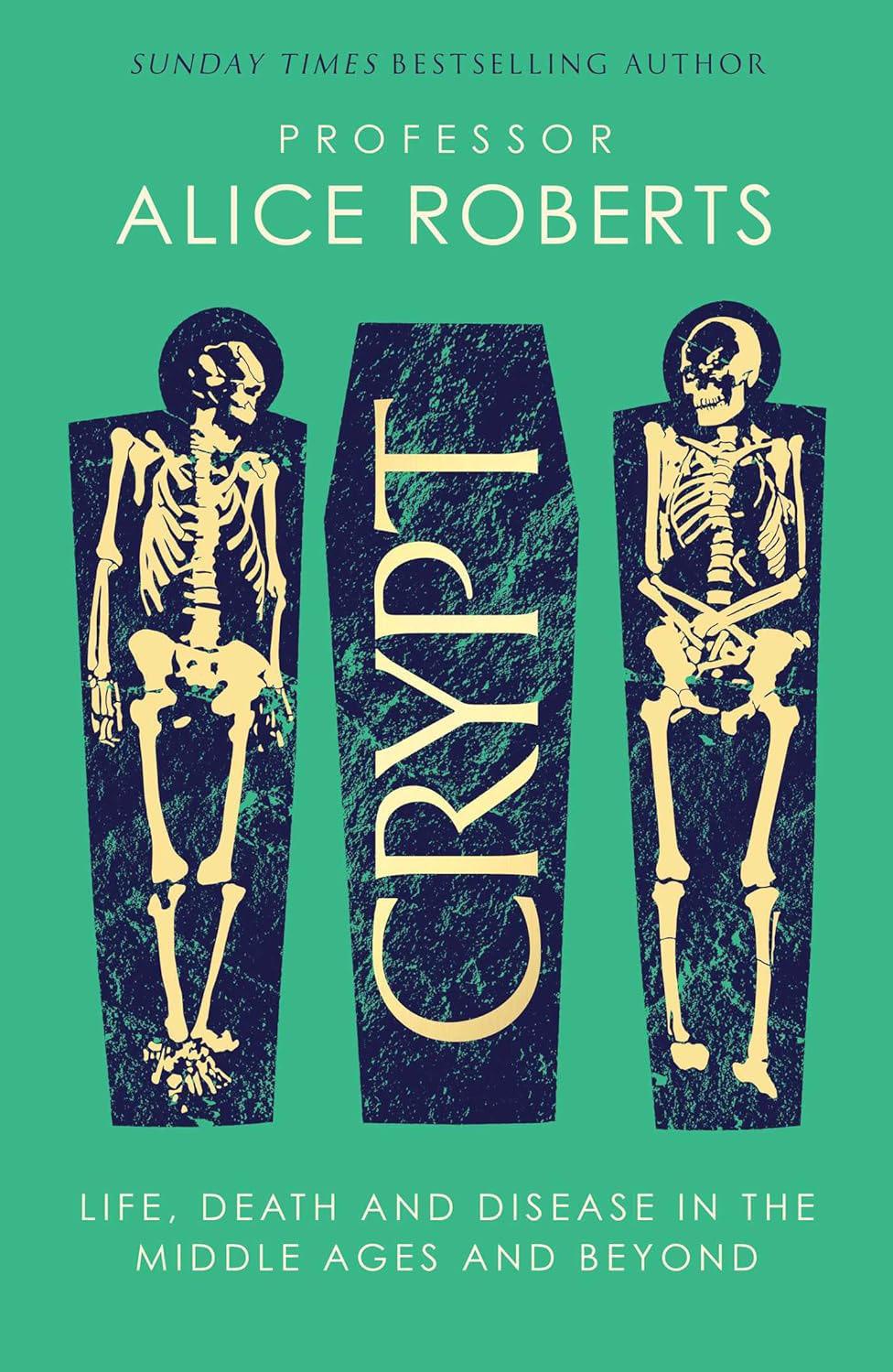
The Ladder: Life Lessons from Women Who Have Scaled the Heights and Dodged the Snakes by
£18.99
Cathy Newman
Journalist and presenter of Channel 4 News Cathy Newman’s new book The Ladder brings together discussions between women – about work, love, growth, challenge, the big decisions and the stories of their lives. Offering inspiration and wise counsel from some of the world’s most acclaimed and influential women, this book is an insight and a trove of solidarity. It talks about change, anger, illness, imposter syndrome, selfknowledge, purpose, how to not panic in a crisis and how to stop worrying you’re boring.
Amid the pages are discussions with women who have achieved extraordinary things in their fields and pursuits, from scientists like Dame Jocelyn Bell Burnell, activists like Rosamund Kissi-Debrah, film-makers like Waad AlKateab, religious leaders like Rose Hudson-Wilkin and broadcasters like Joan Bakewell.

51 The BV magazine, March 2024 BOOK CORNER

Abbey104 Album of the Month: It Leads To This by The Pineapple Thief
Kscope records
I regularly champion local artists on my weekly radio show – and at times, I’ll admit this means playing songs which may not have otherwise made the cut, if judging on the quality of the music alone.
It is therefore a joy when a local band produce an album of such unquestionable quality that I can not only share it with my listeners, but also enjoy repeated listens at home.
It Leads To This, the 16th long player from Yeovil prog-rock stalwarts The Pineapple Thief, is one such record. Bruce Soord (the band’s driving force) has successfully managed to oversee the evolution of the group such that line-up changes have been less a revolving door, and more a gradual refinement and realisation of his creative vision.
Now 25 years into their journey, The Pineapple Thief have produced their tightest, warmest, and most rewarding album yet.
While the eight tracks are given room to breathe, there are no 10-minute slow burners to be found here. Put It Right, the album opener, begins with a simple piano and vocal arrangement before swiftly blossoming into life – a subdued start, but the band are clearly keen to get to the point.
While all is emphatically not well (Soord confesses on Rubicon that there is ‘no hope to be found’ and asks, ‘how could we get it so wrong?’ on the albums’ excellent title track, video below) there is a nobility and defiance on show throughout the album.


The confidence and sure-footedness of the arrangements, musical performances and production, contrasted with universal lyrical themes of regret and opportunities lost, create a compelling tension which satisfies all the way to the final, rousing crescendo of cathartic closing track To Forget.
It really has all led to this.

• Matthew Ambrose presents Under The Radar on Tuesday evening at 7pm on Abbey104. Broadcasting on 104.7FM and online at abbey104.com.
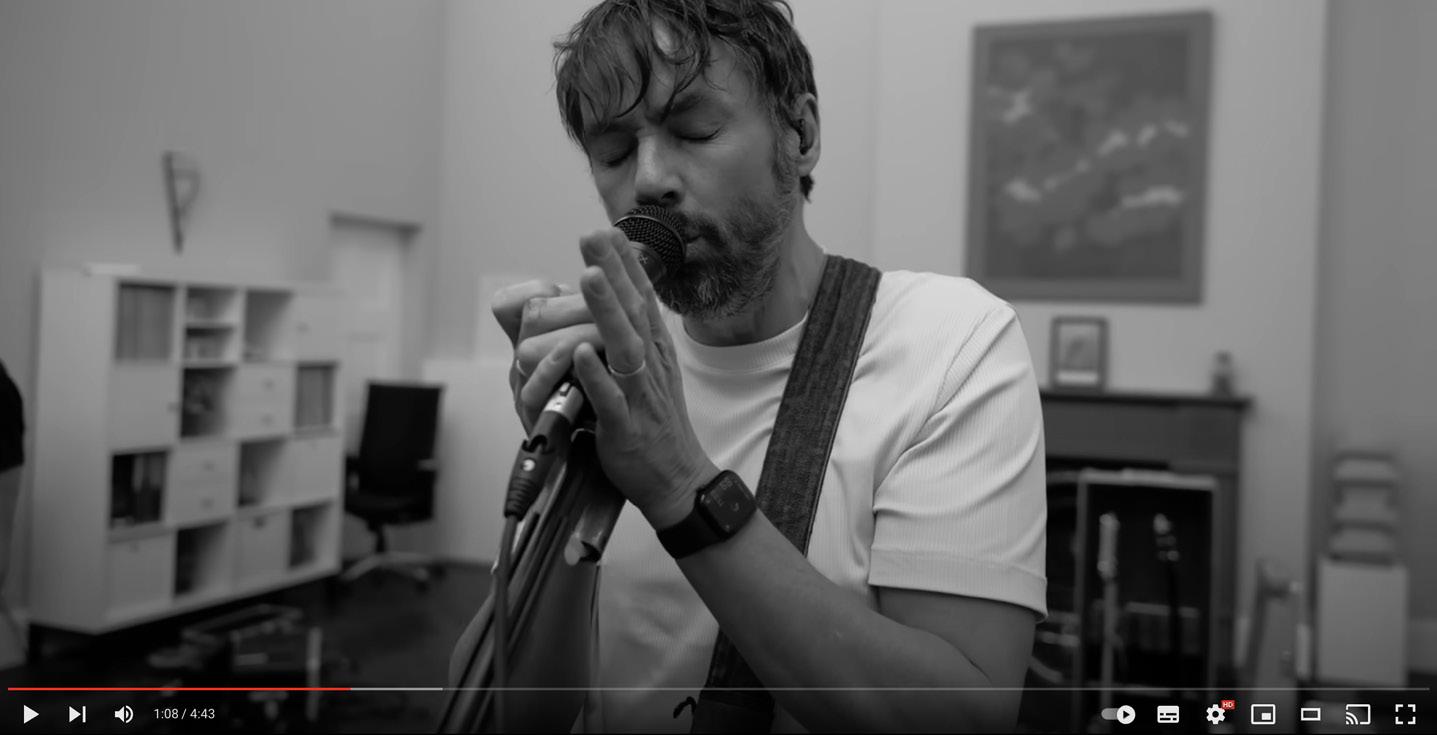
52 The BV magazine, March 2024 MUSIC
Matthew Ambrose, DJ at Abbey104

Shaftesbury’s FOLDE is in the running for Bookshop of the Year
FOLDE, the independent Shaftesbury bookshop which specialises in nature writing, is a regional and country finalist in The British Book Awards 2024. The shop on Gold Hill has been recognised in the Independent Bookshop of the Year category. Affectionately known within the industry as the Nibbies, The British Book Awards are described as “a celebration of books and all who make them... affirming, connecting and energising the world of reading by showcasing the authors and illustrators who have stirred our hearts and imaginations, and the industry behind the scenes who have brought them to readers.”
In the largest cohort in the awards’ history, there are 77 independent bookshops listed across nine different regions and countries, including ten in SouthWest England.
FOLDE is one of just two bookshops in Dorset, alongside Westbourne Bookshop in Bournemouth, to be named as a Regional and Country finalist. ‘We are over the moon to have made it through to the finals for our region,’ said FOLDE cofounder, Amber Harrison. ‘The

awards are an opportunity to highlight and celebrate our firm belief that indie bookshops are a real asset to the high street.’
Karen Brazier, who co-founded the shop with Amber, says: ‘We owe much of our success to our local community, who were cheer leading for us even before we opened and continue to do so to this day.’
Tom Tivnan, managing editor of The Bookseller and chairman of Independent Bookshop of the Year, says: ‘Indies have come out of the pandemic and into cost-ofliving and business rates crises,
yet still through innovation and creativity thrive as never before. They are lynch pins for our high street, bringing communities together. If there is a throughline it is that their collective knowledge and passion shine through and prove once again how much better shop floor expertise is than an algorithm.’ The regional and country winners will be announced on 12th March, and will then be put forward for consideration for the national Independent Bookshop of the Year Award, which will be announced in May.
Commemorating the 80th Anniversary of the D-Day Landings
The Sturminster Newton Literary Festival 2024 D-Day Project is looking for contributions from local people whose family members took part in the military invasion of Normandy 80 years ago.
From these personal stories, the LitFest team will create an exhibition of family testimonies and images to go on show in The Exchange Gallery in Sturminster Newton from 6th
June. On 9th June the exhibition will be formally launched alongside author events commemorating the invasion. If you would like to contribute to the exhibition, please send up to 500 words describing your forbear’s experiences in June 1944. You can send it to sturlitfest1@gmail.com or deliver a hand-written account to the Town Council Offices in Sturminster Newton, marked FAO Cllr Pauline Batstone -

D-Day 80th Anniversary Project. Deadline for submissions is Friday 29th March 2024.
Sturminster Newton Literary Festival is from 8th-16th June in 2024 and the full programme will be announced in March.
• sturlitfest.com
53 The BV magazine, March 2024
COMMUNITY NEWS
Amber Harrison and Karen Brazier outside Folde on Gold Hill

A local expert from Citizen’s Advice provides timely tips on consumer issues. In the postbag this month: How can I afford my new council tax bill?


Q:‘I have just received my new council tax bill and it’s gone up again. I’m working full time and claiming universal credit to top up my rent, but I’m a single parent now and, with everything else increasing, I am not sure I am going to be able to pay it each month. What can I do?’
A: First, you need to check if you can get a council tax discount. If you are the only adult in your property, you will be entitled to a 25 per cent discount. Moreover, some adults aren’t included for council tax purposes – this includes some students and young people, some people who are temporarily away from home, some people with severe disabilities and some carers.
If you are on a low income, you might also be eligible for Council Tax Support. This is a meanstested benefit, so your income and savings have to be below a certain level to get help. Dorset Council will compare your finances (income and capital) with how much the government says that you and your family need to live on.
Dorset Council is going to implement a new Council Tax Reduction scheme from 1 April 2024. This scheme aims to make it easier for residents to manage, and should work better with the Universal Credit system by taking away the need for constant changes. It also increases the current maximum amount that can be claimed from 90 per cent up to 100 per cent for those who are eligible. However, the reductions will be restricted to a council tax band E level – any applicants who live in a band F, G or H property will have their entitlement calculated at a band E level.
If you think you might be eligible for a discount or for support, you can either do an online benefit check, for example entitledto.co.uk or ask your local Citizens Advice to help you find out.

54 The BV magazine, March 2024
COMMUNITY NEWS


Hall & Woodhouse donates a recordbreaking £27,000 to good causes
At its annual Community Chest Awards in January, local family brewer Hall & Woodhouse (H&W) announced the successful recipients of grants totalling more than £27,000. The funding is part of a wider £55,000 being donated to other counties where H&W operates, which is the highest sum since the Community Chest initiative began in 2002 – here in Dorset more than 20 grants were mad.
Organisations providing support to people with disabilities and groups offering guidance, training, and career advice all received a share of the funds that H&W set aside for the initiative. Mark Woodhouse, family director of H&W, said: ‘We never cease to be amazed by the tremendous good that organisations can do for their communities and are honoured to help continue their hard work. It’s all about providing access to funding for small, local,

volunteer-led and trustworthy organisations that make a real difference.
‘It’s always a privilege to meet the people behind the organisations making such a positive change. Already, I very much look forward to launching the Community Chest again in the spring.”
One recipient, Weymouth Foodbank, operates from four locations across Weymouth, providing local people with essential groceries and hygienic equipment. In 2023, it fed more than 14,000 people, a 56%
increase from 2022. The funding provided by Hall & Woodhouse, totalling £2,700, will cover the purchase of milk, cheese, and eggs for a whole month.
Dorset-based charity Countrymen UK helps individuals experiencing isolation due to physical or mental deterioration. The charity provides activities and workshops based around creativity and movement, while encouraging members to build strong support relationships. H&W provided £1,000 to help fund running costs and activities.
Hold onto your glow sticks … Salisbury Hospice Charity’s Midnight Walk is back!
Prepare to light up the city with NEON at this year’s Midnight Walk! The organisers invite you to hop, skip and groove through the streets of Salisbury dressed in neon socks, funky glasses, and head boppers!
The sponsored walk is open to everyone over the age of 12 –and dogs are very welcome! The walk starts and ends at the Five Rivers Leisure Centre, and there is a choice between the six or 10-mile routes.
Things get started with the dusk party warm-up disco before participants head out to take a walk under the stars to commemorate loved ones lost in this fun and incredibly moving

sponsored walk that supports Salisbury Hospice.
The special memories board will return this year, offering the opportunity to dedicate a star to a loved one. In addition, the completer’s medals are ‘living’ medals, in the form of Forget Me
Not seeds, a gentle reminder of those loved ones.
The walk is on Saturday 27th April, and registration is open now. Maybe ask, cajole and bribe your friends, family and colleagues to do it with you, and make a neon party night of it!
56 The BV magazine, March 2024 COMMUNITY NEWS
by Karen Geary, Nutritional Therapist DipION, mBANT, CNHC at Amplify

Blowing hot and cold
There is now scientific evidence that what doesn’t kill you may really make you stronger, says expert Karen Geary
In my student days, I studied both lifestyle medicine and nutrition, initially seeing the former as less significant. However, with better research and increased attention from experts like Dr Rangan Chatterjee, lifestyle medicine (essentially about taking preventative steps to enhance our own wellbeing) is gaining recognition. Sleep and exercise, as well as nutrition, are fundamental pillars of health. Do these three well and you are winning. Mastering them prioritises well-being over fashionable therapies like breath work, forest bathing and sunlight exposure, which, while beneficial, take more of a back seat.
One intriguing facet of lifestyle medicine is hormesis, or the principle of stressing the body to enhance resilience — literally the notion of “what doesn’t kill you makes you stronger.”
Just like exercise, hormesis – when practised judiciously – can fortify the body. Saunas and cold water therapies, championed by motivators like Wim Hof and his ice plunging, are currently in the spotlight. The basic science is that both hot and cold therapies stress the body, inducing the production of heat and cold shock proteins. These proteins act as cellular guardians, shielding cells from harm and instigating repair processes. Regular exposure to extreme
temperatures may give us a stronger immune system and promote long-term health.
Good to be chilly
Cold therapy, with roots tracing back to ancient Egyptian traditions, uses cold exposure to mitigate inflammation and pain. Methods such as coldwater immersion and cryotherapy are used to cool the body, modulate blood flow and reduce pain perception. Whole-body cryotherapy – brief exposure to extreme cold – is popular among athletes and individuals seeking pain relief.
The three pillars of sleep, exercise and nutrition prioritise well-being over fashionable therapies like breath work, forest bathing and sunlight exposure
Winter swimming, itself a form of cryotherapy, has been practised for centuries in the Nordic countries for its health and recreational benefits. Data suggests that repeated but brief cold exposure strengthens the immune system.
Cold therapy’s pain-relieving and anti-inflammatory effects involve hormonal mechanisms. Cold water immersion elevates noradrenaline levels, providing the body an inbuilt natural remedy for discomfort while at the same time aiding in muscle repair. It proves effective in managing acute injuries, chronic pain conditions, post-surgical pain, headaches and migraines.

57 The BV magazine, March 2024
HEALTH
Recent research also suggests that cold water exposure may help manage stress and anxiety, offering a holistic approach to well-being. For stress reduction and immune support, even simple practices like immersing one’s face in ice water, or ending a shower with a minute of cold water (my personal daily habit) can yield benefits. Whatever you choose, gradually increasing exposure duration is key to adaptation and safety.
Running hot
Sauna therapy, another ancient practice, offers benefits for sleep, stress reduction and exercise recovery. Research suggests that frequent sauna use may also improve cardiovascular health, enhancing arterial dilation and reducing arterial stiffness. There are various types of saunas — infrared, steam, dry and even garden hot tubs — each with similar benefits, though the quality of research varies. For optimal results, timing is crucial. Sauna sessions a couple of hours before bedtime can improve sleep quality by facilitating a steeper temperature decline. Post-exercise sauna use helps in recovery, reduces muscle soreness and preserves muscle integrity. Cardiovascular benefits are maximised with consistent sauna use, ideally 15 to 30 minutes, three to four times a week, especially when combined with exercise. If choosing, though, I’d pick the exercise over sitting in a sauna for two hours a week! Safety is paramount when engaging in hot and cold therapies. Gradual progression is advised,

and individuals with heart conditions should seek medical advice before starting any regimen. Avoiding participation while intoxicated is essential for safety. In conclusion, both hot and cold therapies offer intriguing potential for improving health and wellbeing. By understanding their mechanisms and integrating them sensibly into your lifestyle, you can harness their potential benefits while prioritising safety and holistic wellness.

58 The BV magazine, March 2024 HEALTH
Karen Geary in a cryochamber at -135ºC!



Dorset’s set to bloom at the Dorset Spring Show at Kingston Maurward
The days are getting longer, the daffodils are nodding confidently, and the brand new Dorset Spring Show is on its way!
It’s the first ever spring show from the team who bring you the Dorset County Show – the county’s largest agricultural event – and they invite you to kickstart your year of great days out in the great outdoors with them.
The Dorset Spring Show will be held at Kingston Maurward on the weekend of 27th and 28th April. Think spring, think lambs, flowers ... and BMX’s and mountainboarders?!
Event organiser James Cox and his team have been working through the winter to put together a varied and exciting list of attractions that will have every member of the family happy. From floral demonstrations to swinging Axemen, pig agility to bees wax rolling, the event will celebrate the season that sees Dorset burst back into life. With an emphasis on everything food, farming and flowers, you can watch live demonstrations of beekeeping, falconry and baking.

At The Hogg Show you can learn about some of the rarest pigs in the world – and see just how intelligent pigs are. While over at the Sheep Show you can meet nine different breeds (but we all know the audience is only there for the dance!).
James Cox says ‘We’re so excited to welcome in the new season with a vibrant spring get-together for Dorset. Whether you come

for the delicious Dorset foods, the local crafts, to enjoy the extreme BMX bikes, to meet a lamb or watch some of the demonstrations, Dorset Spring Show has it all when it comes to celebrating spring in Dorset!’
Join in the fun
In addition to two full days of entertainment, the show invites you to get in on the act with more than 90 competitions across cookery, photography, flowers, vegetables and crafts. There are also Associated Garden Classes alongside school, college, and club competitions. The Competitions Marquee will be based in the Gardeners Village, where you can stock up on plants, or nab yourself a new garden sculpture.
The farm gates swing open for the first time ever on 27th and 28th April 2024.
Children go FREE and Adult Tickets are currently just £12 – but ewe don’t want to delay, the discount ends 20th April!
•dorsetspringshow.co.uk
60 The BV magazine, March 2024 WHAT’S ON
Extreme BMX
The Hogg Show
Savour the flavours of Ukraine
The recent second anniversary of the Russian invasion of Ukraine was a sombre reminder of the trauma and horror that Urkainians have endured – and the continuing need to support the many refugees who are living in this area.
If most of us didn’t know much about Ukraine’s distinctive culture and history before the Russian onslaught, we have all learned a lot now. Two workshops at Compton Macrae near Shaftesbury on 8th and 9th March will introduce participants to important aspects of traditional Ukrainian food.
On Saturday 9th, from 4pm to 7pm, cook and writer Olya Patiuta will focus on fermentation, vegetables and soup. And on Sunday 10th, from 10am to 1pm, the workshop will feature varenyky, formed and filled dumplings with savoury and sweet fillings.
Organised by the very active Shaftesbury Refugee Group, Flavours of Ukraine is intended for Ukrainian guests and the wider community of North Dorset and South Wilts.
These hands on and active sessions, led by Olya of Zhiva Authentica, will bring new flavours and techniques to some and a taste of home to others.
Your Community Cinema is back!
Gillingham Community Cinema was in need of a new home following the closure of the Methodist Church.
We are pleased to announce that following a long search, a home has now been found at Vicarage Schoolroom on Queen Street!
The team behind the community cinema have been working hard to get their equipment reinstalled and working, and have announced their opening night.
The screening of Wonka (PG), starring Timothée Chalamet, will be at 7pm on Thursday 21st March. The film is not a remake of the original – instead it follows the story of the aspiring magician, inventor and chocolatier as he arrives in Europe to establish his chocolate shop at The Galéries Gourmet, with affectionate nods to the 1971 original. Tickets are £6 for adults and £1 for children under 12, and seats can be reserved in advance by emailing Gordon on organ1234@ btinternet.com or calling 07817 379006.
Early booking is recommended since it is likely that this event will be very popular. The team hope to see you there!
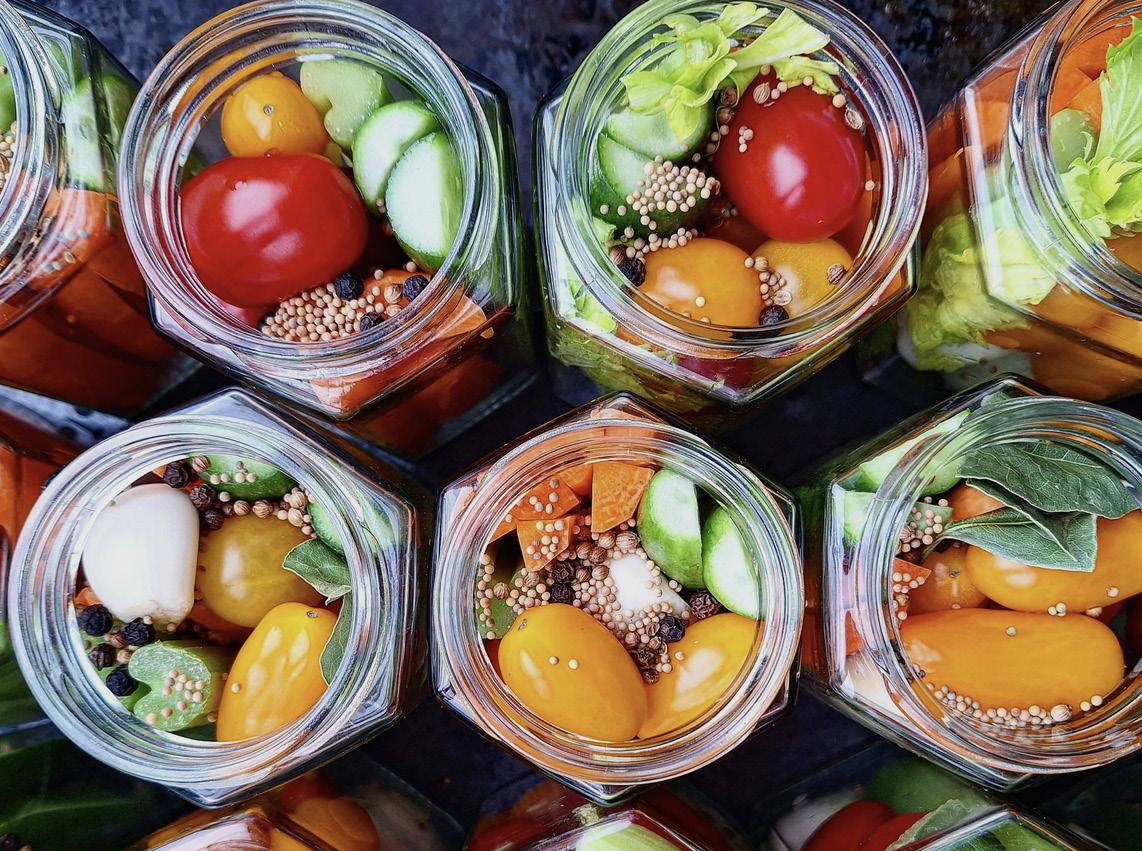
Join Olya at Compton Macrae, the deli and cafe at Semley, for one or both workshops. The maximum number is 30, to keep it interactive and fun.
Olya’s Instagram feed, Zhiva Authentica, is full of mouthwatering photographs of her food, preserves, ferments and sourdough, details of the markets she attends and her masterclasses. To book for one or both of the workshops (places








61 The BV magazine, March 2024 WHAT’S ON
GILLINGHAM C OMMUNITY CINEMA 7pm 21st March NOW AT THE
A typically colourful selection of Ukrainian preserved fruit and vegetables
screening!
Special relaunch
W H A T ' S O N


ROBERT WINSTON
TUES 12TH MARCH
The world-renowned expert in fertility and genetics, currently Professor of Science and Society at Imperial College talks about ‘The Misuse of Science’ (£18/£10)
THE PASSION OF LIVING SPIT
FRI 19TH APRIL
THE CHAS AND DAVE STORY
SAT 9TH MARCH
Featuring Rockney with hits London Girls, Rabbit, Margate, Snooker Loopy, Gertcha, One Fing N Anuvver, That’s What I Like & Ain’t No Pleasing You and more! (£17)
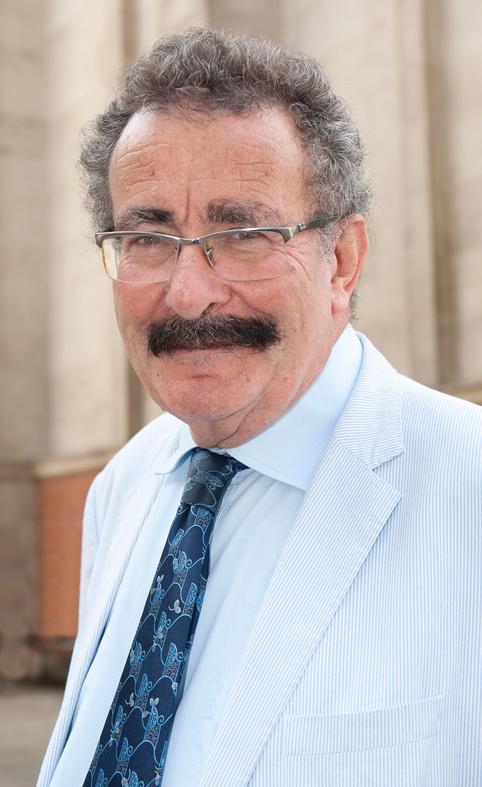

Get ready to witness the most divine comedy of all time with Living Spit’s new hilarious theatrical journey. *Contains strong language. Not for the faint-hearted or extremely religious*! (£16/£14)
SERIOUSLY COLLINS & GENESIS
SAT 20TH APRIL
Returning by popular demand, award winning Chris Hayward’s Phil Collins /Genesis Tribute Show with 10 piece band! (£22)

FRI 12TH APRIL

62 The BV magazine, March 2024 NEWS
@ T H E E X C H A N G E
Photographers – have Charlie Waite judge your work at the show!
Keen local photographers are being invited to enter their submissions for the inaugural photographic exhibition at the Gillingham & Shaftesbury Spring Countryside Show, which takes place on the weekend of 20th to 21st April. This exhibition is a platform for local amateurs to display their unique perspectives of our world.
The show team are excited to have Charlie Waite, world-renowned landscape photographer and North Dorset resident, to judge the submissions. With a career spanning more than three decades, Charlie has collected many prestigious
photographic awards and held solo exhibitions all over the world. He’s lectured throughout the UK, Europe and America and provides private tuition. His images are held in private and corporate collections throughout the world, and he is the founder of one of the UK’s most prestigious photography competitions, Landscape Photographer of the Year.
Cat Harris, Gillingham & Shaftesbury Spring Countryside Show Organiser said: ‘We’re so excited to launch this competition and it’s such an honour to have one of the world’s leading landscape photographers as judge.
‘Whether you’re a budding

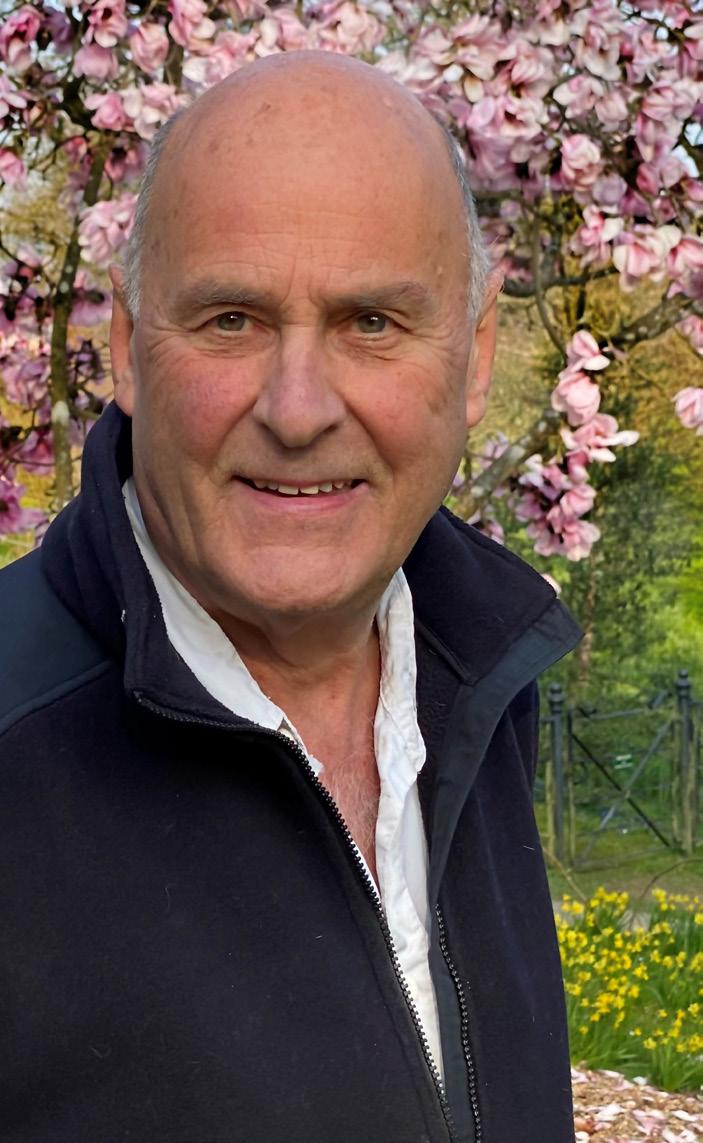
photographer or have been capturing moments for years, we encourage you to join in. This is a fantastic opportunity for amateur photographers of all ages to showcase their talent!’
Charlie will also be giving a free expert talk to share his top tips on landscape photography.
How to enter
There is a nominal entry fee of £3 per photograph, and the deadline for submissions is Friday 5th April.
To enter, please visit springcountrysideshow.co.uk.
• The Gillingham & Shaftesbury Spring Countryside Show has a host of family attractions lined up including clown capers, pig racing, gardening talks and workshops, free tractor and trailer rides, Dorset food and drink and live music. Kids under 16 go FREE
63 The BV magazine, March 2024
WHAT’S ON
Renowned photographer Charlie Waite will be the Spring Countryside Show’s judge
Hay bales at Stonehenge by kind permission of Charlie Waite
Breathtaking Trampoline Show in Dorset for one night only!
Artsreach has announced that contemporary circus artist Max Calaf Sevé is coming to Dorset this March with his breath-taking trampoline show.
It comes as part of Circus Around and About 2, an innovative project bringing extraordinary circus shows to communities across the south west.
Anyday is a circus show like no other. Max lives on a trampoline, with only his little pet bird for company. Every day his life is the same – but Max decides he wants a change. So Max and his bird embark on an adventure together.
Follow the two friends in their funny, bouncing daily routine, with breathtaking trampoline skills and hilarious clowning. Anyday is a brilliant and unique new show for all the family.

Max Calaf Sevé is a contemporary circus artist who specialises in trampoline acrobatics, object manipulation and physical theatre. The soundtrack was created by Matt Huxley, who
grew up in Bridport.
Anyday will come to Gillingham School on Thursday 21st March at 7pm. Tickets and further information are available online at artsreach.co.uk
Cotswolds to China at the Sherborne Travel Writing Festival
Next month the Powell Theatre in Sherborne will be awash with top international travel writers, photographers, and radio and television personalities, between them covering destinations such as Sicily, Kerala, China, the Brazilian Amazon, North Korea, Roman Gaul, Nigeria, Burma’s Shan Hills … and the Cotswolds.
The Sherborne Travel Writing Festival runs from 5th to 7th April – curated by Rory MacLean, travel writer of more than a dozen books, the programme of talks have been meticulously planned to inspire, excite and motivate both armchair and intrepid travellers to broaden their horizons.
Highlights of the weekend include:
• Noo Saro-Wiwa, author of the Sunday Times Travel Book of the Year, Looking for Transwonderland, talking about her new book
• Explorer and filmmaker Benedict Allen, relives memories of the Arctic with his team of dogs overcoming the worst winter weather ever recorded, as well as his solo trip to revisit the Yaifo people in the Amazon.
• Don McCullin, veteran photojournalist and Dorset resident, closes the weekend
reminiscing on his iconic black and white work from 1950s London to the Vietnam War.
• Award-winning photojournalist Nick Danziger will join Rory MacLean to discuss their humanitarian work
• A Writing Britain panel sponsored by Bradt, the leading independent travel publisher, with speakers on the Cotswolds, Cornwall, and Dorset (perfect for those who prefer journeying closer to home!).
Weekend Festival Tickets, with entry to all 12 talks, including free parking and Tea with the Authors, cost £80 per member and £100 for non-members. Individual session tickets cost £10 per member and £12 for non-members, except for the Don McCullin session which are £18 for members and £22 for non-members. Membership to the Sherborne Literary Society is only £10 a year, which includes a discount on books bought from Winstone’s Bookshop, Sherborne.
• To find out more and to buy tickets for the Sherborne Travel Writing Festival visit sherbornetravelwritingfestival.com Tickets can also be bought from Winstone’s Bookshop, Sherborne.
64 The BV magazine, March 2024 WHAT’S ON
COME AND HEAR HOW THE RE-BUILDING OF PARIS AFFECTED THE ARTISTS OF THE DAY Illustrated talk by Jenny Newman
Thursday 14 March at 2.30pm, Digby Memorial Hall, Digby Road (near abbey).
Impressionist Paris



Cost £6 on door, to include refreshments. All profits will go to the Sherborne International Douzelage Conference April 2024.

Organised by Shaftesbury Rotary Club
ALL PROCEEDS TO STAARS APPEAL
Easter



Friday Lunchtime Recitals
1.45pm
Cheap Street Church (unless otherwise stated)
Sunday 7th april 2024
Start at park walk - finish gold hill
10km run starts 10 am - £15 a head
5km run starts 10.30 am - £10 a head
Under 16 HALF PRICE For


12th January Pianists
19th January Instrumental and Vocal Soloists I
26th January Strings
2nd February Wind Band (BSR)
9th February Instrumental and Vocal Soloists II
23rd February Brass
1st March Woodwind
8th March Instrumental and Vocal Soloists III
15th March Jazz
22nd March Instrumental and Vocal Soloists IV
FREE ADMISSION ALL WELCOME

65 The BV magazine, March 2024 WHAT’S ON
more information & booking details (shaftesburyrotary.org)
Mothers Day Afternoon Teas and an Easter Egg Hunt at Shillingstone Station
Served from a railway carriage overlooking the valley of the river Stour at North Dorset Railway, Shillingstone, treat Mum to a taste of vintage travel this Mother’s Day. Served at 2.30pm on Sunday 10th March, each afternoon tea will include
• a selection of freshly made finger sandwiches
• a homemade scone with jam and clotted cream
• a selection of homemade cakes
• a choice of tea or coffee
• all served using traditional china
Priced at £9 per person (pre booked only).
Easter Family Fun Day
Come and find out about the
North Dorset Railway at the Family Fun Day on Sunday 31st March from 10.30am to 3pm. There’ll be a quiz trail with answers around the station, for children under 12, and each child receives a Cadbury’s Creme Egg when they hand in their quiz sheets.
There will be more activities for younger children, as well as signal box tours, the museum and other attractions, and the shop and café will be open as well – something for everyone. The cost for the Easter Quiz is £2 per child, no booking needed. Both events are in aid of North Dorset Railway, which is entirely run by volunteers with all funds raised put towards the maintenance and development

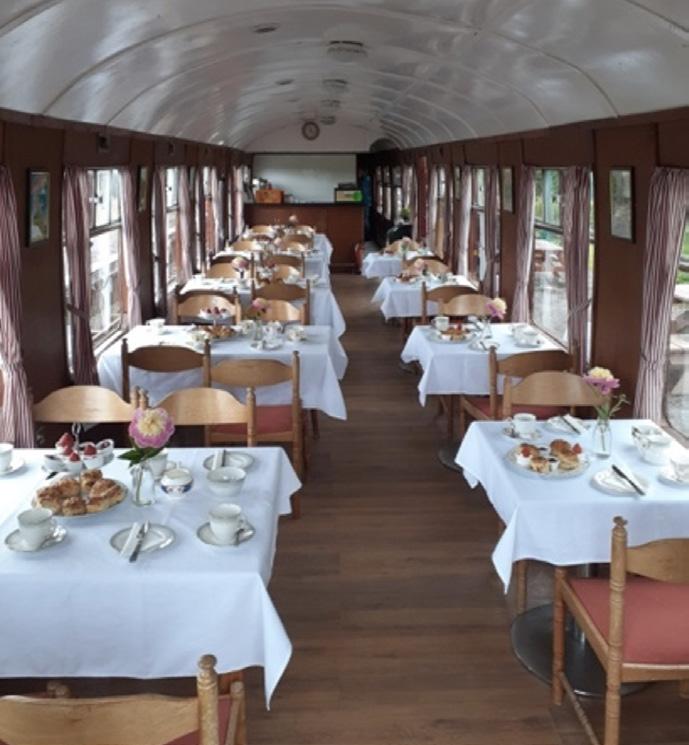
of the railway for the benefit of the community.
For more information on either event, or to book an afternoon tea for Mother’s Day, please call 01258 860696 during opening hours of Wednesday, Saturday and Sunday 10am til 4pm.
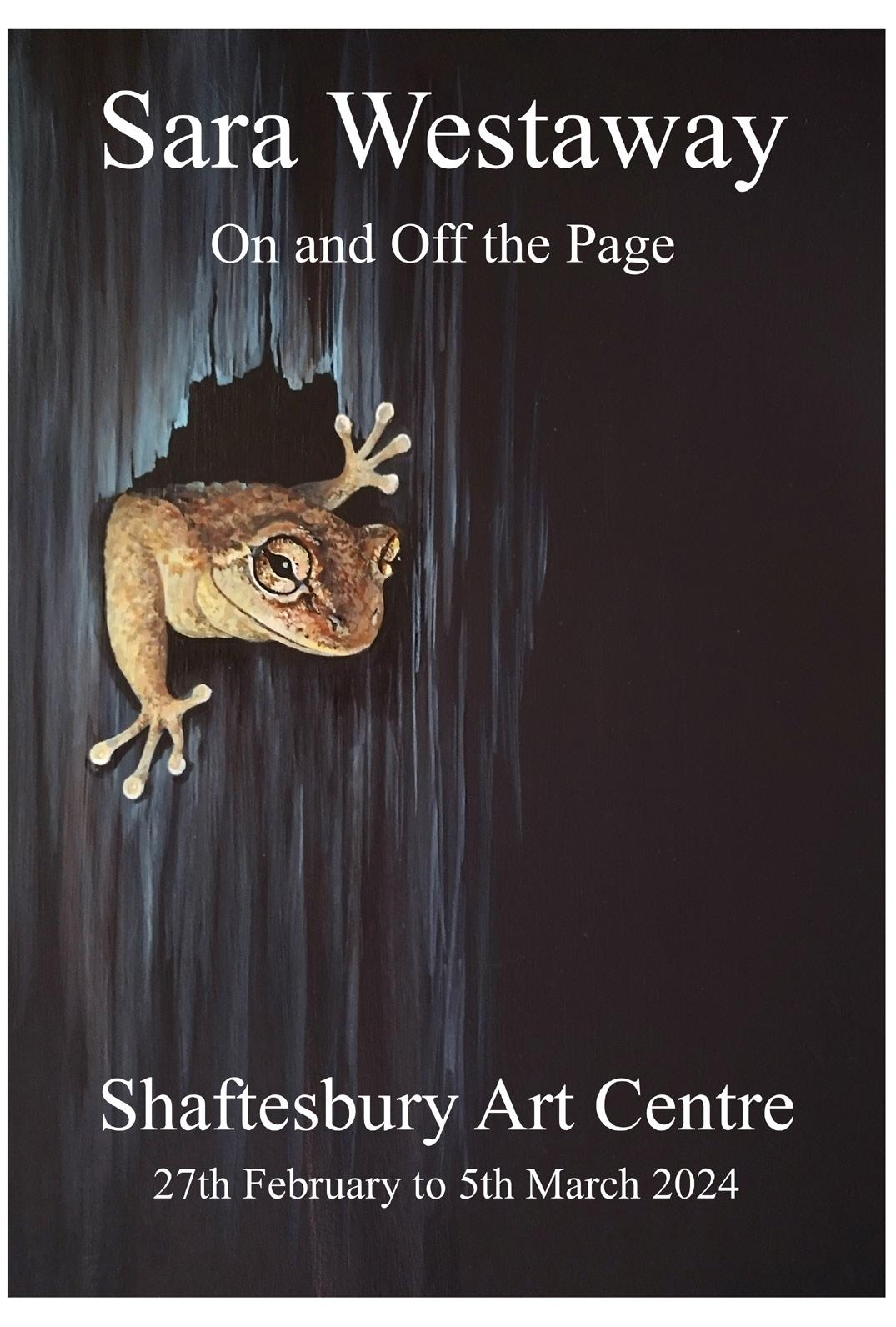
66 The BV magazine, March 2024 WHAT’S ON

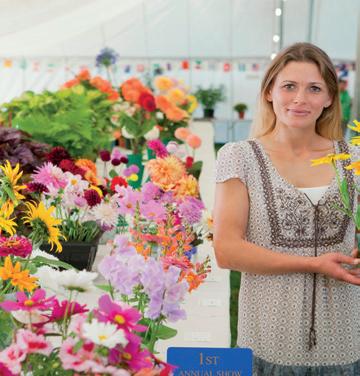



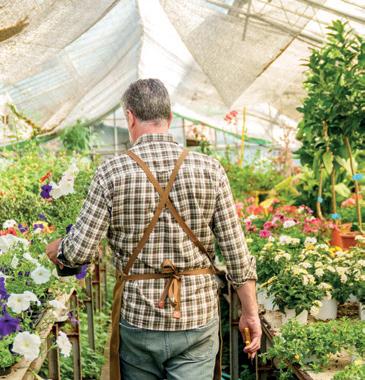

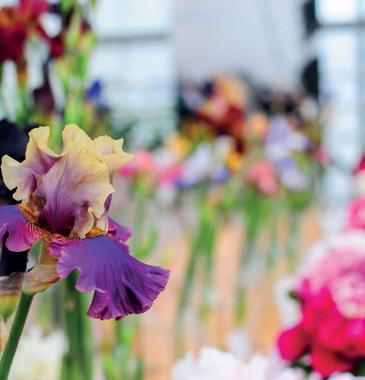




67 The BV magazine, March 2024 20th & 21st April 2024 A fun family day out! Turnpike Showground, SP7 9PL www. springcountrysideshow.co.uk SPRING COUNTRYSIDE SHOW E���� B�r� Un��� 16’� g� ����! ADULTSonly£14 A CELEBRATION OF HORTICULTURE Festal Evensong for St Joseph’s Day Tuesday 19th March, 6.30pm Sherborne School Chapel Scan the QR code or email: tickets@sherborne.org Join the Chamber Choir as they sing a Choral Evensong in the School’s Chapel. Music by Lili Boulanger, Elizabeth Poston, Judith Bingham and C V Stanford James Henderson – director FREE ADMISSION BOOKING ADVISABLE WHAT’S ON
Dinner & Jazz
with the Sherborne School Swing Band
Friday 22nd March, 7.30pm
Dining Hall, Sherborne School
Enjoy a four-course meal and an evening with the superb Swing Band as they perform music by Glenn Miller, Charlie Parker, Dizzie Gillespie and more. James Henderson – director
Scan the QR code or email: tickets@sherborne.org


68 The BV magazine, March 2024
Tickets £35.00 (BOOKING ESSENTIAL) WHAT’S ON


The Heart of a Nebula
Rob Nolan navigates the UK’s fickle weather, finally having to fall back on January’s rare clear skies to present another celestial gem
It feels like we just can’t catch a break at the moment – I think there have been only one or two clear-ish nights since the last issue of the BV was published! For astronomers in the UK, the collective frustration is building. Just when will we get some clear skies again?! This is always the challenge with amateur astronomy, especially here in the UK, and we must carry on with the hope of clear skies on the horizon!
Fortunately, I have a couple of targets to fall back on from January, and I decided to go for the heart of the nebula. The actual Heart Nebula to be exact!
IC 1805 is called The Heart Nebula due to its shape, but in this image I’ve deliberately focused on a column of ionised gas in the very centre.
It spans almost two degrees in our night sky, covering an area four times larger than the diameter of a full moon
This emission nebula is some 7,500 light years away from Earth, located in the Perseus Arm of our Galaxy, in the constellation Cassiopeia.
The Heart Nebula is made up of ionised hydrogen, oxygen and sulphur gases. It spans almost two degrees in our night sky, covering an area four times larger than the diameter of a full moon.
In this particular image I’ve created what is known as a HOO image. This is where we use the oxygen channel twice during the processing to make the image, alongside the hydrogen data, and discard the sulphur channel narrowband data. This is what gives the image its rather menacing red and subtle green tones, compared with some of my other image finishes. The image was captured using my dedicated mono astrophotography camera and a 1000mm Maksutov Newtonian reflector telescope, along with narrowband filters, in our own Dorset skies.
The night sky, March 2024 – Rob’s guide for your stargazing this month:
Oh I do hope we get some clear skies in March, because there is an absolutely stellar (pun intended) event to observe – it’s comet time!
Comet Pons-Brooks, which was first observed back in 1812, is set to pass close by to us on its recursive 71-year journey around our Sun. It was last seen in 1954, so for many of us it’ll be the first time seeing it, and the first time it will be photographed by many astrophotographers. Throughout March, the comet will track from Andromeda to Aries. Named for its co-discoverers Jean-Louis Pons and William Brooks, the comet is expected to brighten from magnitude +7 to +5, and has experienced spectacular outburst during its past flybys, which could mean that, like Neowise back in 2020, it could easily become visible with the naked eye!
The comet will become ever more visible throughout March, so I really hope we get to witness this one. Grab your binoculars and scan low in the evening twilight to spot the comet.
In other news ...
The comet really does trump most of the other
celestial events scheduled for March, with our neighbouring planets putting on a pretty poor display at the moment – only Jupiter is holding the stage until Mercury decides to make an appearance much later on in the month. However, when Mercury does decide to grace us with its presence in the skies, it’ll be its best appearance of this year, so that will be worth looking out for! On 24th March, Mercury will be at its greatest separation from the Sun; watch out and enjoy it in the twilight of dusk.
Other events of note this month include the spring equinox on 20th March, marking equal night and day length.
The Moon will become slightly dimmed by our Earth’s outer shadow, in what’s known as a penumbral eclipse between 4.53am and 9.32am on 25th March. However, the moon will be setting during this event for us in the UK, so unfortunately, you may not get to see much of it. And then finally on March 31st at 1am, British Summer Time (BST) officially starts, so don’t forget to put your clocks forward that night! Until next time, clear skies.
71 The BV magazine, March 2024
NIGHT SKY Find Rob on Facebook as RPN Photography here
Take a Hike:
Dorsetshire Gap – the finest views across North Dorset? |
6.2 miles
Enjoy big views with ever-wide skies as you complete the circle from Lower Ansty - starting with easy parking in the village, then a few simple climbs to enjoy the best of Hog Hill looking out over Lyscombe Bottom and down via the Dorsetshire Gap ridge. Bingham’s Melcombe is a beautiful estate - do wander out of your way to visit the church and pause to enjoy the view of the gardens. Perhaps also opt to walk the footpath around the front of Nordon Hill from the Dorsetshire Gap - the views are spectacular, but the rough path runs awkwardly across a steep hill: you’ll potentially spend all your time trying not to break an ankle. We did it once, but now always opt for the simpler-going route around the back, and sadly miss the view!
• CLICK HERE for more images and an interactive map (plus downloadable gpx file)
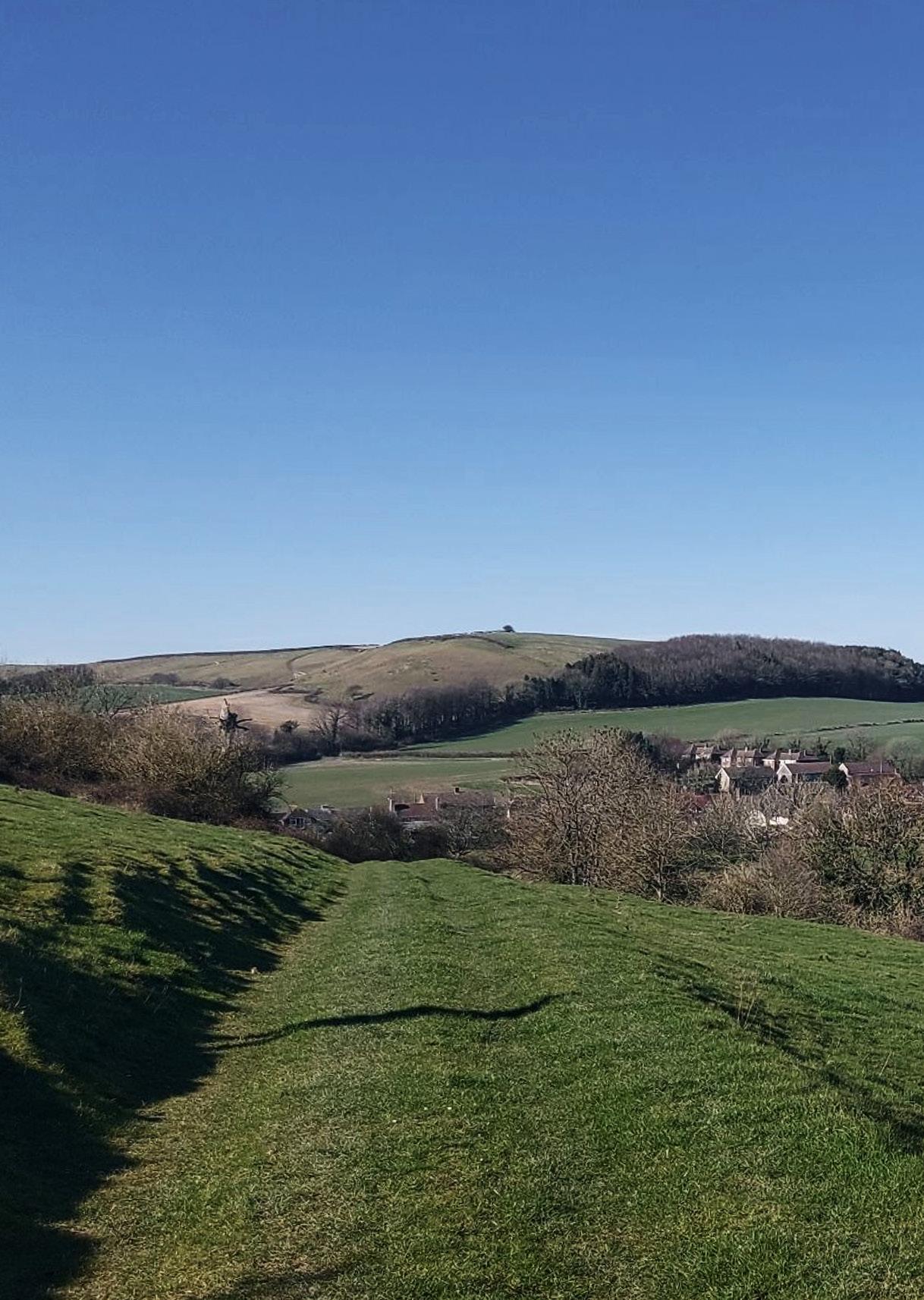
See all previously-published Dorset Walks on the website here. You can also find every route we’ve walked (including many which are unpublished in The BV) on OutdoorActive here (just zoom in/out on the map) – all include a downloadable gpx file.
The view from Henning Hill, looking north across Melcombe Bingham to Nordon Hill and the Dorsetshire Gap to its left.



This route is filled with great lunch spots, but my top two would be the cross dykes on Hog Hill - one of my favourite spots to sit and enjoy the view - or from the Dorsetshire Gap ridge line, with spectacular views both sides. NB the Gap crossroads is always muddy - do watch your footing as you descend.
Don’t carry on up the apparently clear path over Henning Hill; you turn right before the barn to get to this view. We go straight on through the gate (wrong) every. Single. Time.
The BV magazine, March 2024
Swathes of snowdrops on the Bingham’s Melcombe estate
The view north from the Dorsetshire Gap ridge
CLICK THE MAP to see the interactive version and download a gpx file

Local action to Stop the Drop
From roadside rubbish to recycling innovations, Rupert Hardy takes a look at the seemingly neverending battle against litter in the UK
Littering in Britain is a disgrace – and worse than in most of Europe. CPRE has been active campaigners to stop it for years. In 2008, CPRE’s then-president, Bill Bryson, launched the Stop the Drop campaign against litter and fly-tipping. Around the country, 225 groups joined the campaign, picking up more than 30,000 bags of litter. The campaign was frontpage news in The Times, and millions of people watched Bill Bryson’s spin-off BBC Panorama programme, Notes from a Dirty Island. But the success was short-lived.
Dorset CPRE has been involved in litter campaigning since we started the Rural Litter Initiative in 2003 – a precursor to the current Litter Free Dorset (LFD), which does a brilliant job on a limited budget, funded by Dorset Council and Wessex Water. The campaign also supports lots of voluntary groups, focusing on changing people’s behaviour and working with businesses to reduce packaging etc. However, it is an endless battle, with litter endangering our environment, our wildlife and our economy in spite of increased environmental awareness. But what is the solution?
Reducing roadside litter
Roadside litter not only impacts our environment but it is costly to clear up. Litter on the A1 in east Dorset is a particular eyesore between December and spring, when the verges are cleared. Overall, litter costs UK taxpayers more than £1 billion a year. Most people say it makes them angry and frustrated, but it can also affect mental health. Why do people just throw their rubbish out of their car window?
Understanding motivation is a key part of finding a solution, and educational campaigns can certainly help to reduce littering. The tougher
Litter costs UK taxpayers more than £1 billion a year
fines introduced last year might help too, but enforcement has been limited. It doesn’t help that National Highways removed litter-free standards as a key performance indicator. The Clean Up Britain campaign is currently taking National Highways to court over its obligations. One recent idea has been Love Your Verge, a countywide collaboration
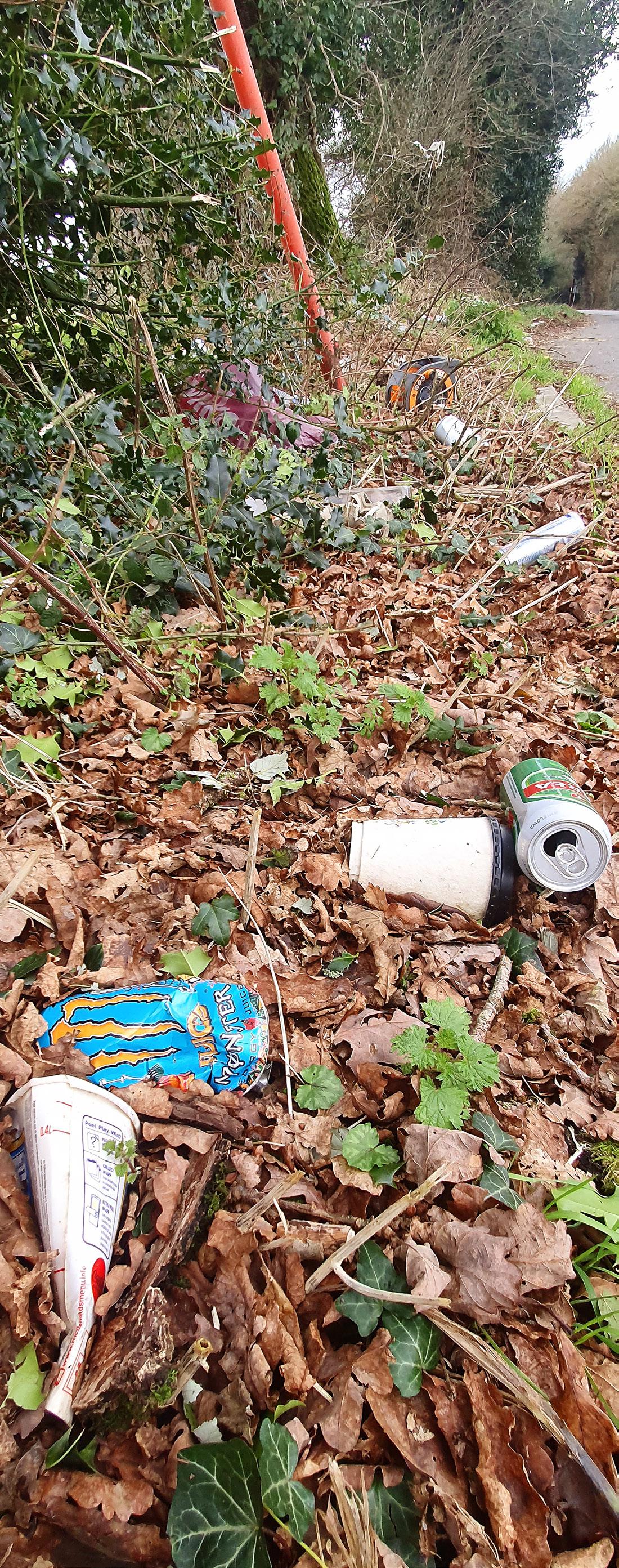
74 The BV magazine, March 2024 NEWS
Litter on A31 at Winterborne Zelston Image: Rupert Hardy
RURAL MATTERS
between Dorset Council and LFD. The verges in Dorset host a wide range of wildlife and need protecting. The campaign promotes the council’s verge management, aimed at encouraging roadside biodiversity, partly by less frequent cutting and also by reducing littering. However, funds are limited in these days of financial cutbacks.
Dorset drivers can also now use dashcam footage to report to the council incidents of rubbish being thrown from cars.
A spokesman from Dorset Council said that every single report received is acted upon. All drivers around Dorset are encouraged to take action against litter thrown from vehicles by reporting incidents using the online form here.
Other litter campaigns
Single-use plastic is a big problem for the environment even before it pollutes our rivers and oceans. Chemicals derived from fossil fuel production are used to make most plastics. Last year it was finally announced that a range of polluting single-use plastics, such as cutlery, would be banned from October 2023. The ban is part of the government’s latest round of policies to cut down on plastic packaging, but it could have gone further.
This year LFD has a Bring Your Own campaign aimed at getting consumers to take their own cutlery, cups and lunch-boxes when visiting cafés and shops. It is going well so far, with 100 Dorset businesses already joining the campaign. One nationally-popular idea has been the awardwinning Refill campaign, which aims to make refilling your water bottle as easy and cheap as possible by introducing refill points on every street. Refill is asking cafés, shops and businesses to welcome anyone to refill their water bottles with


good old tap water – for free! It has been rolled out successfully along the beaches of Bournemouth, Christchurch and Poole, with the introduction of 150 refill points. Meanwhile, LFD its providing portable ashtrays made from seaweed paper in the oddly named Beach Buttholder campaign. Following some terrible heath fires in Dorset in recent years, Litter Free Dorset is working hard to stop the sale of disposable barbecues. It has had considerable success with many major retailers, including Waitrose, permanently removing them from sale.
Deposit return scheme
For 15 years now, CPRE has been campaigning for a deposit return system (DRS), where a small deposit would be applied on any drinks container, which is then refunded when it is returned for recycling. We encouraged Damers First School in Dorchester to write to Michael Gove to back such a return system in 2018, and a group from the school had the opportunity to meet the Minister.
The launch of a plastic bottle DRS in England was finally announced by the government last year, due to start in 2025 – but it will not include glass. That failure, which was a 2019 manifesto promise, is a major missed opportunity.
What can you do?
Gillingham Litter Pickers and Hilltop Litter Pickers (Shaftesbury) are just two of the voluntary groups that organise regular litter picking in North Dorset. Lots of villages organise annual litter picks. At Ansty, it is a great community event to pick up a lorry-load of rubbish, followed by a barbecue lunch. Do join them!
If you want to join or start a litter picking group, or borrow equipment, it is easy. LFD does a lot of work in this area, so see litterfreedorset.co.uk where you will find a range of resource material to get you started. Overall, there have been some wins – but there is still a lot of litter to pick!
75 The BV magazine, March 2024 NEWS
A rare look at Winterborne Zelston
This month Barry Cuff has chosen a couple of postcards of Winterborne Zelston: ‘ I have been collecting since 1974, and I have only ever found four cards of the village – and the other two are unused.’
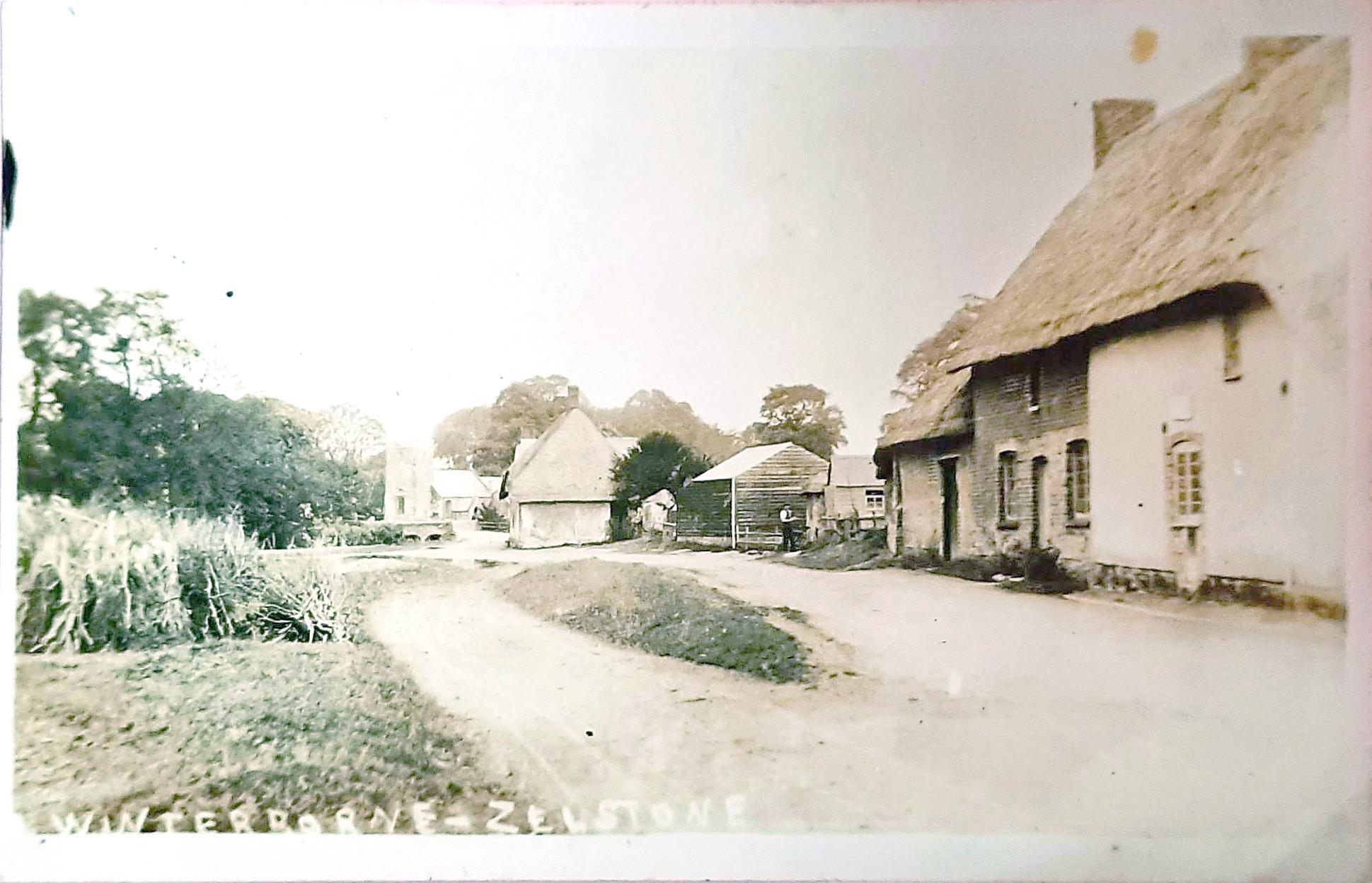
Sent to Miss Reeves at Wilderton House - an Edwardian mansion in Branksome, Poole, which was converted from a single home into seven flats in 1958 and demolished to make way for modern apartments in 2023: ‘Dairy House Dear E. When are you coming or can’t you get away just yet too busy I expect. I was down your home last Sunday I went to see A at Weymouth Saturday. Hope you & A are still on the best of terms. Write and tell me when you can come shall be very pleased to see you both love from Florrie to all

76 The BV magazine, March 2024 POSTCARDS FROM A DORSET COLLECTION

This month’s challenge! This card, sent to Mrs Church in Brixton Hill, London in 1909, has very difficult handwriting to translate. Here’s the editor’s best guess, but we’d love any corrections and suggestions:
‘D L (Top - Kind regards to Muriel and Gladys when you see them)
Thanks for [Beers?]. Hope you are all well & Bob etc. Much put up for [... ]. Where is C’s christening? Fancy all was down for few hrs, only I [... ] We miss Charlies [... ] this week sometime. Told B – have had no reply to her correspondence. Fond all F.

77 The BV magazine, March 2024 POSTCARDS FROM A DORSET COLLECTION
Step back in time with our ‘Then and Now’ feature, where vintage postcards meet modern-day reality. Explore the past and present on the same page, and see the evolution of familiar local places.
Stourpaine
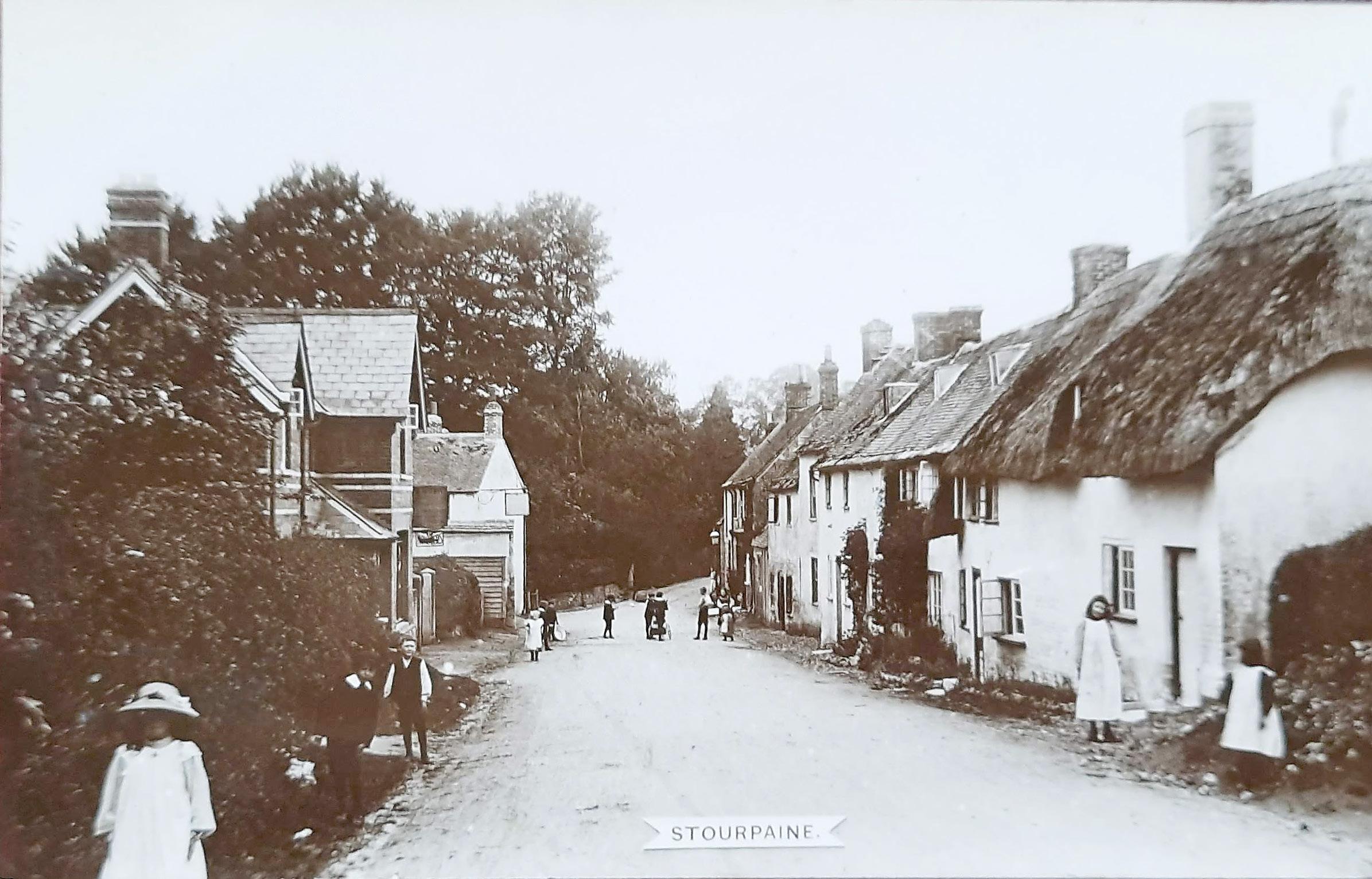
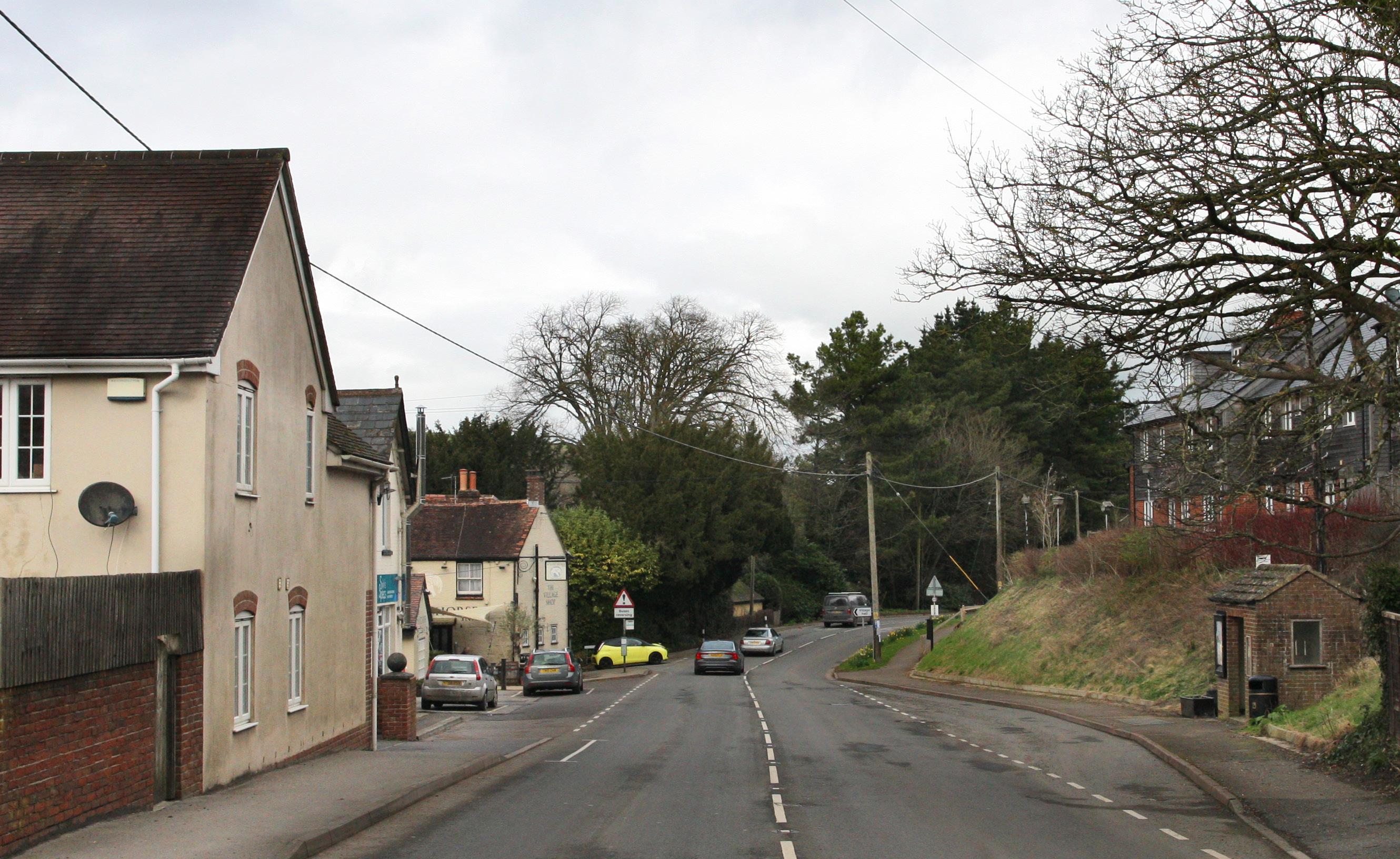
78 The BV magazine, March 2024
THEN AND NOW

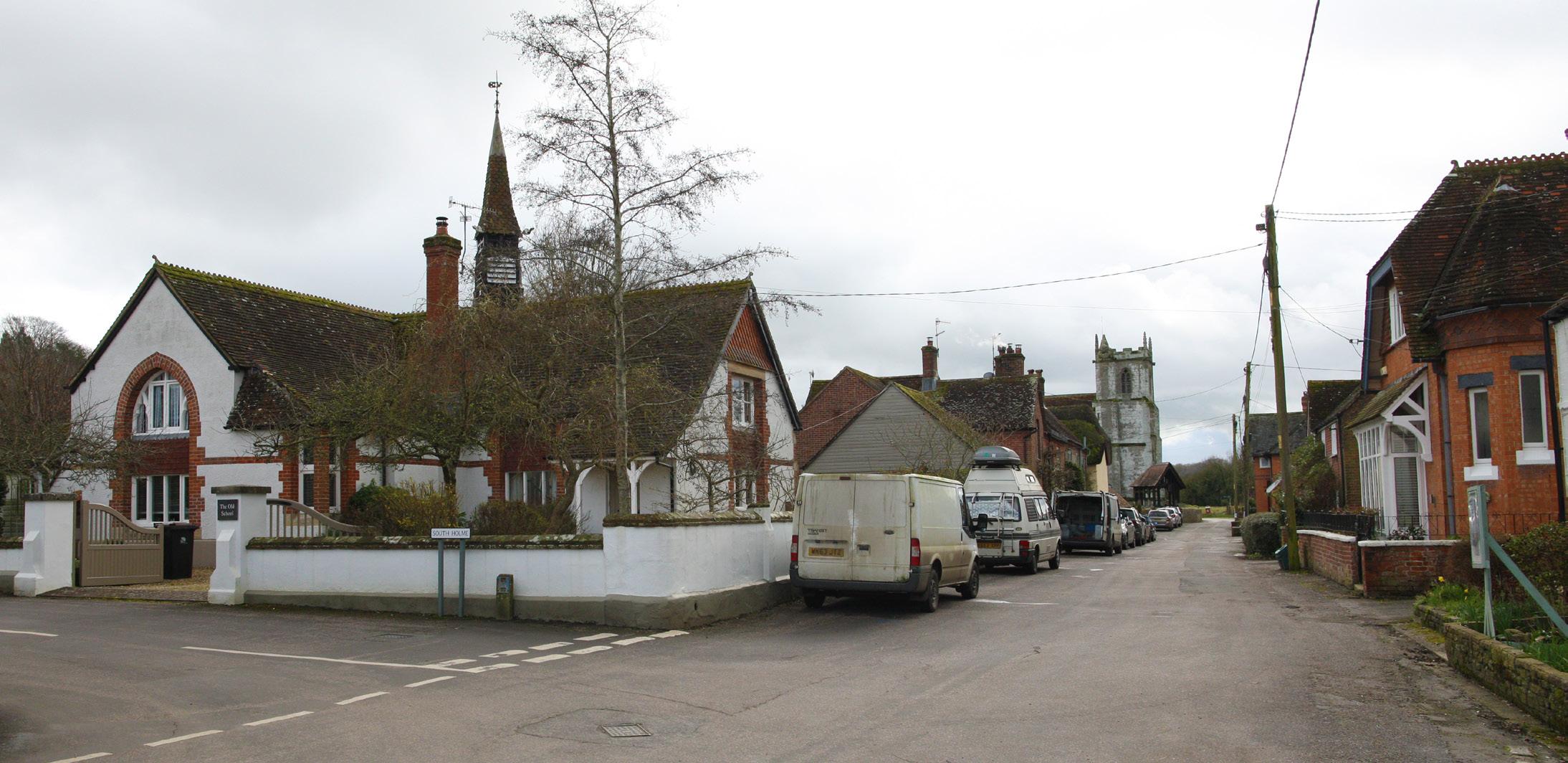
In the 19th century, wages were lower in Stourpaine than in some other parishes and the village became known for its poor living standards, a refuge for those turned away by others. Pimperne’s Rev. Henry Austen reported in 1841 that the behaviour of some women was a problem in Stourpaine, because ‘in that village there are more bastard children than in any other village.’
The village hasn’t noticeably grown in almost two centuries – in 1867 the population of the parish was 658, and in the 2021 census the population was 642.
The White Horse, seen in both images opposite, is still as it was, on the west side of the A350 trunk road, adjacent to what used to be a petrol station, garage, post office and store. The terraced row of thatched farm cottages have long since made way for the widened A350.
The old school house, above top, is a private home now. The bell, porch and large round chimneys are all gone, but the building with its central tower is still recognisable.
79 The BV magazine, March 2024 THEN AND NOW
by Andrew Livingston

Farmers in the Netherlands are protesting against forced shrinking of the livestock industry because of CO2 emissions
Beware the tractors in town
The public perception challenge: how British farmers’ protests could risk alienating the very people whose understanding they need
Despite being borderline Gen Z, I have an admission to make … I have never protested.
It’s not that I lack the passion, or that my art skills don’t convert well onto placards, or even that I don’t want to get glue on my favourite
jeans. I simply never had the reason to cause disruption.
It’s safe to say that the Just Stop Oil protesters have the passion, the art skills and charity shop jeans. What they lack now is the support of the public – frankly,

their actions just annoy everyone who is trying to go about their day. Some of the footage of European farmers that has made it across the channel has been comical. Call me immanure (see?), but spraying slurry onto government buildings is pretty funny. And I tell you now, a police barricade looks great till a Massey Ferguson tractor ploughs through the middle of it!
Poland, Belgium, France and the Netherlands have all experienced tractors rolling in to their capital cities in an attempt to change government policies that are making it ever harder for farmers to make a profit.
On home soil
Farmers here at home have been getting increasingly jealous, wanting to get in on the act and (literally) cause a stink.
This week the Welsh have been the first to openly show their displeasure. The Welsh Parliament
80 The BV magazine, March 2024
FARM TALES
Berlin, Germany December 2023 –tractors at the Brandenburg Gate
has announced that the Sustainable Farming Scheme (SFS) to be introduced next year (to replace EU subsidies) will require farms to have ten per cent of their land planted with trees, and ten per cent of their land treated as wildlife habitat. How any farm could survive with a fifth of its land given up to non-profitable endeavours is beyond me, but it’s the ridiculousness of these controls that have turned fury into action.
There will no longer be a living for those in the Welsh
countryside
‘Digon yw digon’ was written over hundreds of tractors as they, and an estimated 5,000 farmers, descended on Cardiff on Wednesday. The slogan (‘Enough is enough’ for those whose Welsh is a little rusty) encapsulates the Welsh farmers’ feelings that if actions are not taken there will no longer be a way to make a living for those in the Welsh countryside. The convoy of tractors shut down a major road in the city, while the talking was done in front of the Senned, the Welsh Parliamentary building. For two hours farmers stood in the rain listening to speeches calling for change.
I will always back my farming brethren ... but they must be very careful of the thin line that they walk
when protesting. It is all well and good to make a statement and get your voices heard – and if you can annoy the government at the same time, even better. But we British farmers must not overstep the mark and turn the public against us.
Get to work
When you trundle your tractors into the major cities, the vast majority of the people you are disrupting don’t understand how their food really gets to their plates. They think we farmers are standing about in the sunshine throwing corn out of a bucket to a few chickens while we ‘oo-ar’ around a bit of straw. They literally don’t care that the price the farmer gets for a dozen eggs doesn’t even cover the cost of producing them – but they’ll quickly care when you add an hour onto their commute to work.
Every single month I talk about how little positive coverage there is of farmers in the media. During the COVID pandemic, farmers gained an ounce of recognition for their efforts during lockdown. Unfortunately, that is becoming a distant memory. The public already presumes that the British farmer causes all global warming, makes the countryside stink at all times and makes all the food in the supermarket expensive … Let us at least not make them late for their meetings.

81 The BV magazine, March 2024 FARM TALES
The A15 motorway near Paris, where the demonstration by the farmers in their tractors is stopped by the police barricade
Rolling
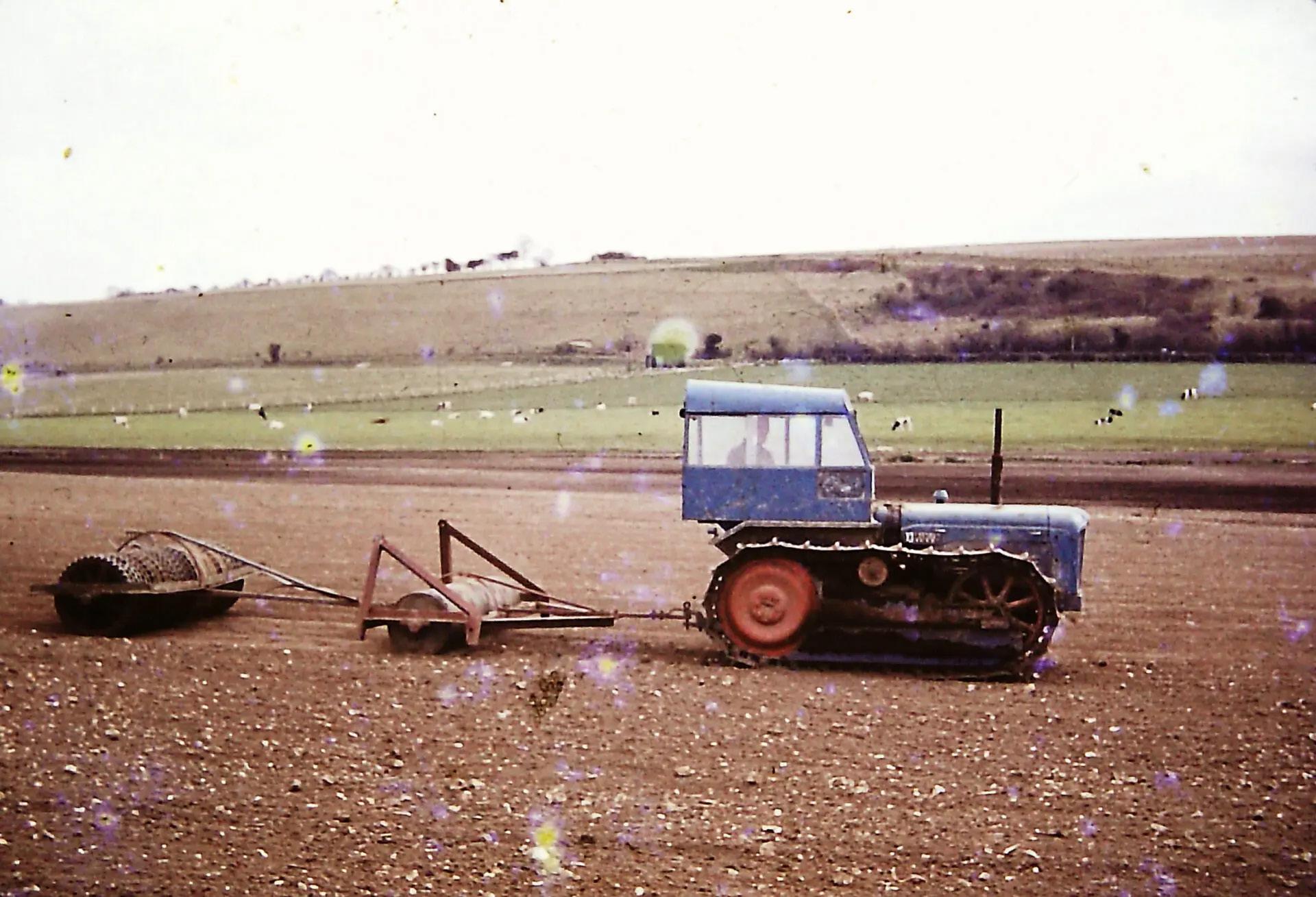
Much ado about many things
Though there’s been TB testing at Rawston this month, James Cossins’ thoughts are fixed firmly on the national picture and finding a way forward
As ever with farming, the weather is having the upper hand here at Rawston Farm. The constant rainfall during February has meant that very little field work has been done – especially compared with last year, when February was one of the driest on record.
We have carried out another TB test this month and we are very nearly clear, with just one animal to retest. Yet again fingers are crossed that in 60 days when the animal is retested, we go clear and can start selling our beef cattle at sensible values.
Lose 20% of your income
It won’t have escaped most people’s attention that the NFU had their annual conference in Birmingham in February. After six years as President, Minette Batters retires from the post to be replaced by Tom Bradshaw. Minette has worked relentlessly during this period representing the farming industry to politicians, government institutions, supermarkets and many more. She has been the face of agriculture to the wider public through the difficulties such as Brexit, the COVID
pandemic and the fight for British farming in the recent trade deals. I would like to extend my thanks to her for all she has done for our industry.

82 The BV magazine, March 2024 FARMING
the fields at Rawston in the late 1960s
James Cossins at home on Rawston Farm
It was interesting that Prime Minister Rishi Sunak attended the conference – the last time a Prime Minster attended (Gordon Brown) it was also an election year. We have had assurances from the Government that they are fully behind us, but it appears that the current financial incentives are the opposite, with encouragement being given to leave productive land empty, to rewild and not to produce food. Maybe on poor and unproductive land this is understandable, but it should not be encouraged on good food-producing land. We only produce about 65 per cent of our nation’s food at the moment. Surely we don’t want to cut production further and rely more heavily on imported food?
Often the imported foods have lower standards of production and come from unsustainable sources such as removed rainforests. With the current insecurity in the world, we shouldn’t rely on imported food.
I have been asked recently why the English farmers are not out protesting with their tractors as farmers are across Europe. In the UK I believe the last thing we want to do is upset our customers by disrupting their daily activities. Across the channel, the European Union is trying to enforce certain measures which would make farming even more difficult than it already is. The EU want to reduce the amount of inputs that farmers can use to grow
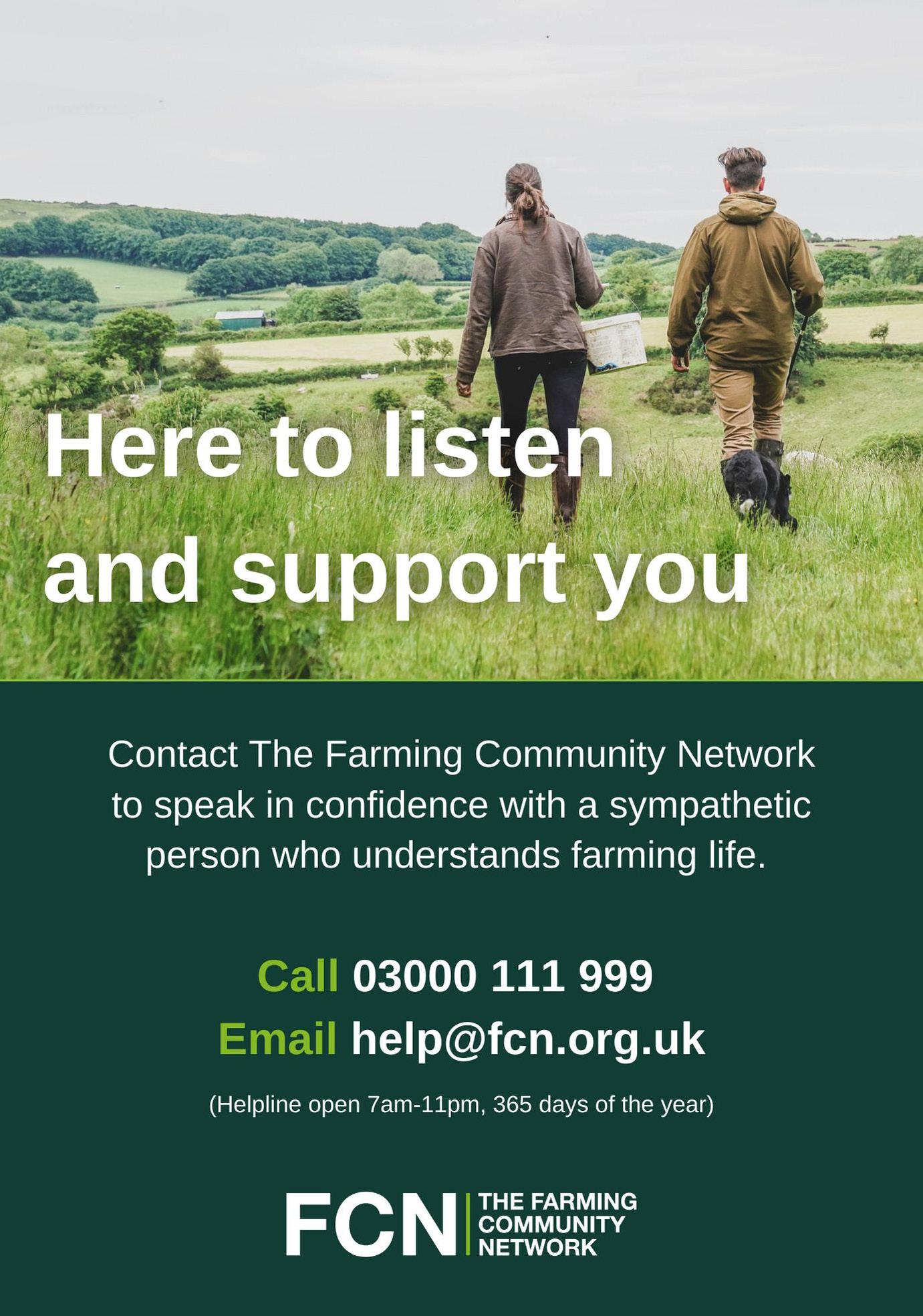
Minette Batters has worked relentlessly for six years, representing the farming industry to politicians, government institutions and supermarkets

crops, meaning that the amount of food they would be able to produce would be dramatically reduced, consequently reducing their income.
Closer to home, in Wales there is a proposal put forward by the Welsh government that ten per cent of farmed land be planted to trees and a further ten per cent be left as set-aside.
Again this would have a dramatic effect on their incomes. The English government has produced a sustainable farming incentive scheme which rewards farmers for carrying out activities that benefit the environment. Farmers can choose from a wide range of options like hedgerow management, not putting fertiliser on grassland, not using insecticides on crops, sowing cover crops and planting unproductive parts of field with wild flowers or food for wild birds. Every farmer has the choice to enter the scheme and consequently be financially rewarded for doing so.
Well done George!
Finally, congratulations to my fellow BV columnist George Hosford, who was announced as the South West regional winner of the Meurig Raymond award at the NFU conference. The prestigious annual award is presented to the member who goes above and beyond as an NFU member. George was specifically recognised for the work he does in educating the public, especially children, on where their food comes from and what farmers are doing for the environment.
The judges said ‘George’s passion for education, the agricultural sector and the environment is second to none. His enthusiasm is infectious. An eternally positive voice, not scared to question and hold to account, he will ask the difficult questions in a constructive manor, holding policy makers to account and working hard to safeguard the future of the farming sector which he so clearly loves.’
83 The BV magazine, March 2024 FARMING
The end of an era: Minette Batters bows out
Passing the torch: as Tom Bradshaw steps into the pivotal role, he faces the daunting task of upholding farming’s future. Andrew Livingston reports
I cannot describe how much I love the NFU Conference. Slightly sad, I know. There just isn’t a year that goes by without something juicy to talk about. Who doesn’t love a politician being made to sweat by a collection of irate British farmers? Birmingham’s NEC is fast becoming the Ally Pally of the farming world. This year was the first time since Gordon Brown’s tenure that an incumbent Prime Minister came to give a speech. Rishi Sunak’s appearance was appreciated by the NFU members – but don’t believe for a second that he has some deep love of doing what is right for the farmers. Rishi came for one thing and one thing only – votes. Gordon tried the same tactic of winning the rural vote back in 2008, but in the 2010 General Election Labour lost power for the first time since Tony Blair won the 1997 General Election. A sign of things to come?
A stormy decade
Despite my love for a bit of political schmoozing, the most interesting thing to discuss is that it was Minette Batters’ final NFU Conference as the organisation’s president, before being replaced by her deputy, Tom Bradshaw.
Minette runs her tenanted family farm in Wiltshire – a 100-cow suckler herd, sheep, arable land and now British flowers. For a decade, she has either been NFU deputy president or president, a position she has held since 2018.
I wouldn’t say that she ran the ship during the most tumultuous of times
Outgoing NFU President Minette Batters

and in agriculture, there will be huge pressure on the new president either to renege on these environmental commitments or to emphasise that farmers must not falter from the Net Zero objectives. Unfortunately, being green isn’t the most financially beneficial way to run a farm. If it were, farmers would have done it for years.
In 2020, the UK officially left the European Union, which had been financially supporting farmers and keeping agricultural businesses afloat. Since then, Minette has battled hard for UK farmers not to be undercut by cheap imports from new trade deals, while also fighting for farm subsidies to be continued responsibly by our own government.
Over to you, Tom Bradshaw. You’ve got a big pair of wellies to fill.
– I would argue the Foot and Mouth crisis of 2001 was possibly a worse time to be president. Nevertheless, the 57-year-old has shepherded British agriculture through huge changes over the last decade.
In 2019, Minette Batters was the face of the NFU’s commitment to be Net Zero (carbon neutral) by 2040. The ambition of being carbon neutral a decade before the British government’s national pledge was a big step, but in an NFU report, Minette explained why: ‘Agriculture is uniquely placed to be part of the solution, as an emissions source and a sink. But we must and can do more.’ With the current financial climate, both nationally
During all of this , there has been the little matter of a global pandemic, the worst ever Avian Influenza outbreak on our shores, about 50 different Prime Ministers and a war in Ukraine that has sent the costs to farming through the roof, making the whole industry unsustainable.
It’s not hyperbole to state that Minette was the most powerful woman in British farming. She was the first woman to be NFU president and she has been front and centre of the NFU throughout her time, fighting for farmers on every issue, no matter how big or small.
Over to you, Tom Bradshaw. You’ve got a big pair of wellies to fill.
84 The BV magazine, March 2024
FARMING

Horse sense from unlikely allies
An equine therapy centre in Blandford is creating transformative connections for those most in need of healing – Sally Cooper reports
Researching a new equestrian piece is always interesting – but coming to understand Horserenity at Kites Farm in Blandford has left me lost for words ... perhaps fantastical fits? Perhaps deeply insightful of the horse/human relationship might begin to cover it?
Sarah Vivian started Horserenity almost by mistake. Her giant 17.2 warmblood Lumber Jack formed an unlikely bond with the young boy next door – Rory is on the autism spectrum, and she saw how he seemed to find a peace with Jack. As the connection grew between the pair, Rory’s behaviour started to relax. The idea that the positive horse and human connection might work as a form of therapy began to take form.
Eclectic therapists
In ten years, the project has grown and there is now a ‘natural herd’ of eclectic horses in Blandford, working with an equally mixed group of adult

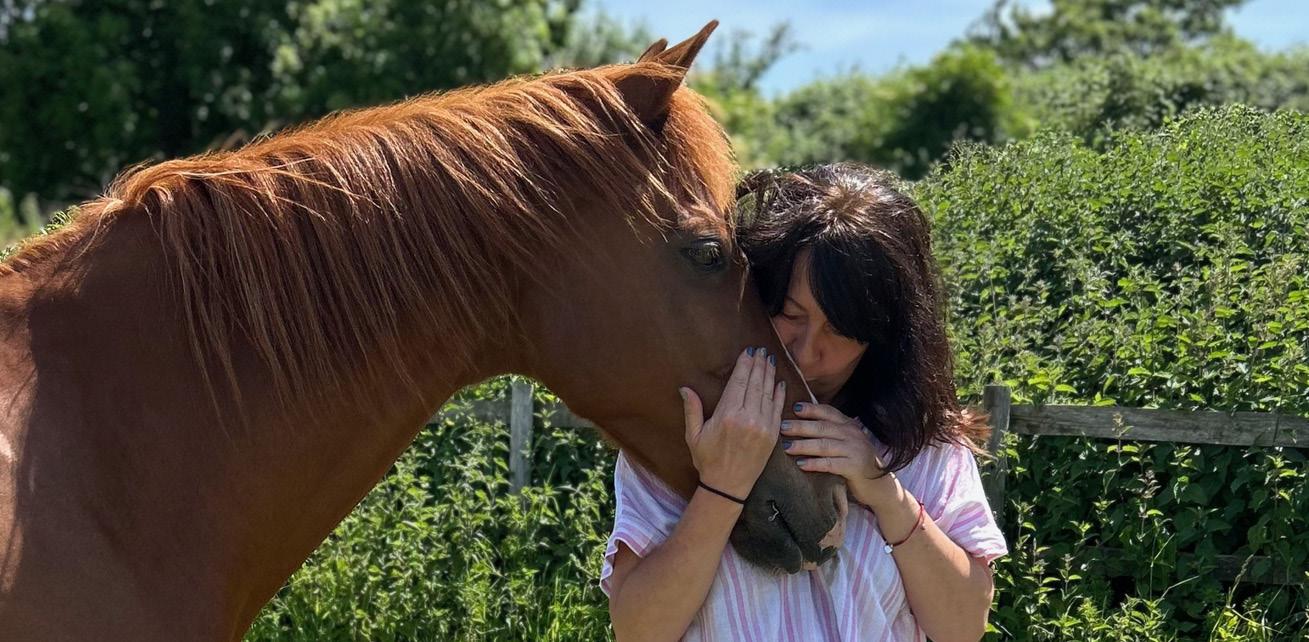
86 The BV magazine, March 2024 EQUESTRIAN
Texas just holding space for his partner
All images: Sarah Vivian
Chico offers a quiet sense of calm togetherness
clients and young learners. The herd includes a dozen animals living a free, natural life within a track system (see panel below), ranging from Peter the Welsh pony – the self-appointed ‘meeter and greeter’ – to John, the sensitive and frightened ex-racer with separation anxiety.
The official aim of the project is simple and yet the effects have been profound for many. Much of the work is aimed at improving outcomes for children with special personal needs, and to register them formally on their Educational Health Care Plan.
Finding the right match
Everything that happens at Kites Farm is about building a natural relationship between an animal and a human. People who find help at Horserenity include those with autism, those suffering from trauma, anxiety and low esteem or those in family crises.
Sessions might include time spent grooming, joining with the herd at liberty, working with energy in the round pen, drawing, reflecting, leading a horse through life’s obstacles or learning about the physiology of the horse.
Members of Sarah’s team are led by the needs of every individual and they will build a tailored programme to help achieve specific goals.
Each day brings the calm and
*The Track System
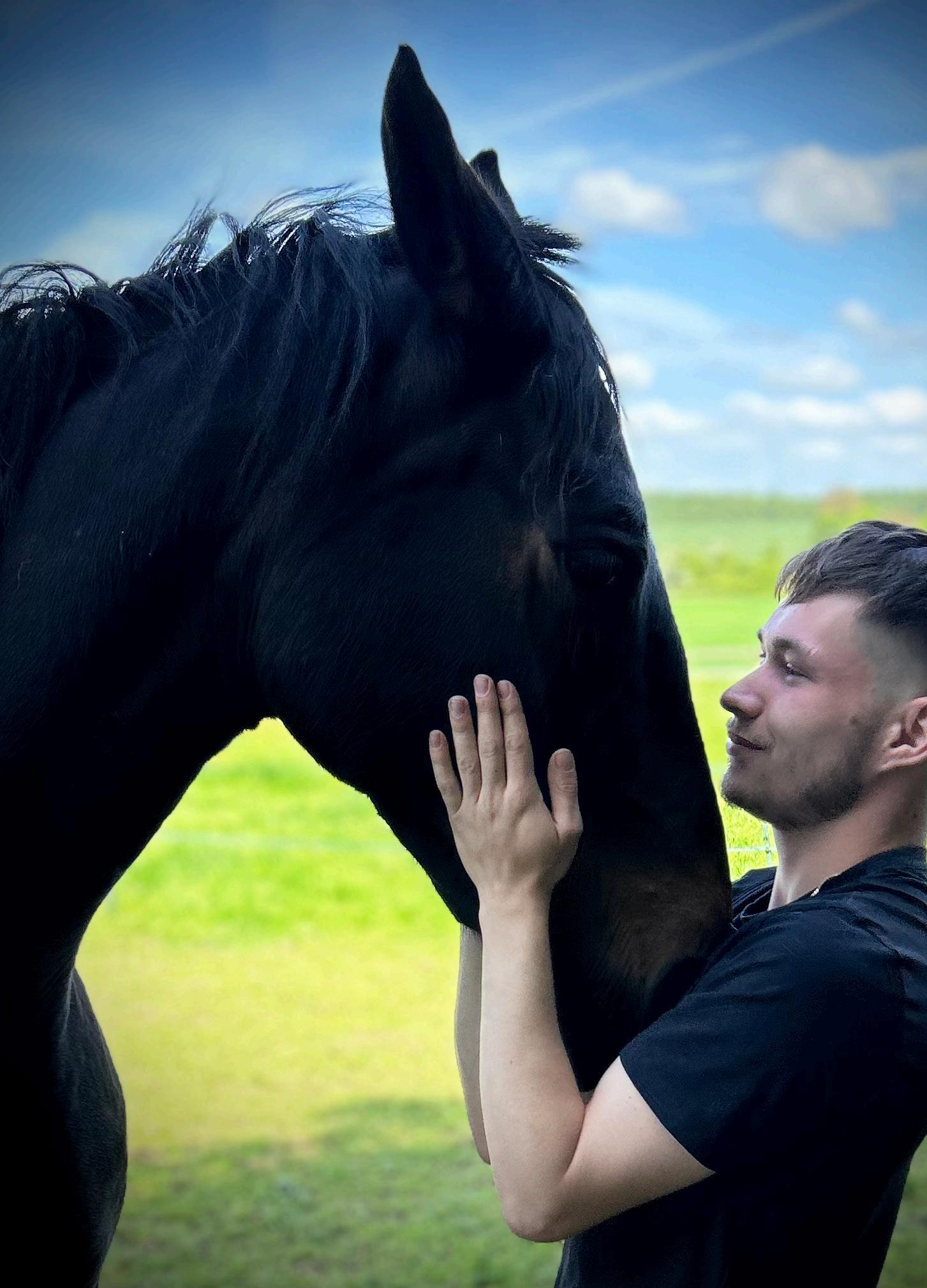
deeply personal process of a physical meeting between human and horse. Sarah is keen to explain that her animals are not
In the wild, horses move along familiar routes or tracks and instinctively walk in single-file formation as they travel long distances in search of food, water and shelter. It is difficult for domestic horses to match the amount of movement that wild horses achieve – up to 18 miles a day. A track system is designed to mimic the movement of wild horse herds and encourage natural behaviours in domestic horses. It is designed on a continuous loop track, created using either permanent or temporary fencing around the outer perimeter of fields. The horses are allowed to go back to their more natural state and just ‘be a horse’. They are encouraged to forage, move, be part of a herd, socialise and to make choices about where they want to be and where they want to rest.
in any way trained to perform. They operate autonomously and often there are unlikely pairings as horse and human choose each other. When the right pair ‘click’ there can be goosebumps or a magical feeling among the team. Next month we will be back at Kites Farm, hearing in more detail about some of the relationships forged there, and the help that the herd has given.
• For more information see horserenity.co.uk.
• Kites Farm will be hosting an Easter Family Fun Day on Saturday 6th April, with a fête and dog show, allowing visitors to see the whole facility. 10am to 3.30pm at Tin Pot Lane, Blandford.
87 The BV magazine, March 2024 EQUESTRIAN
Jammy sharing his space

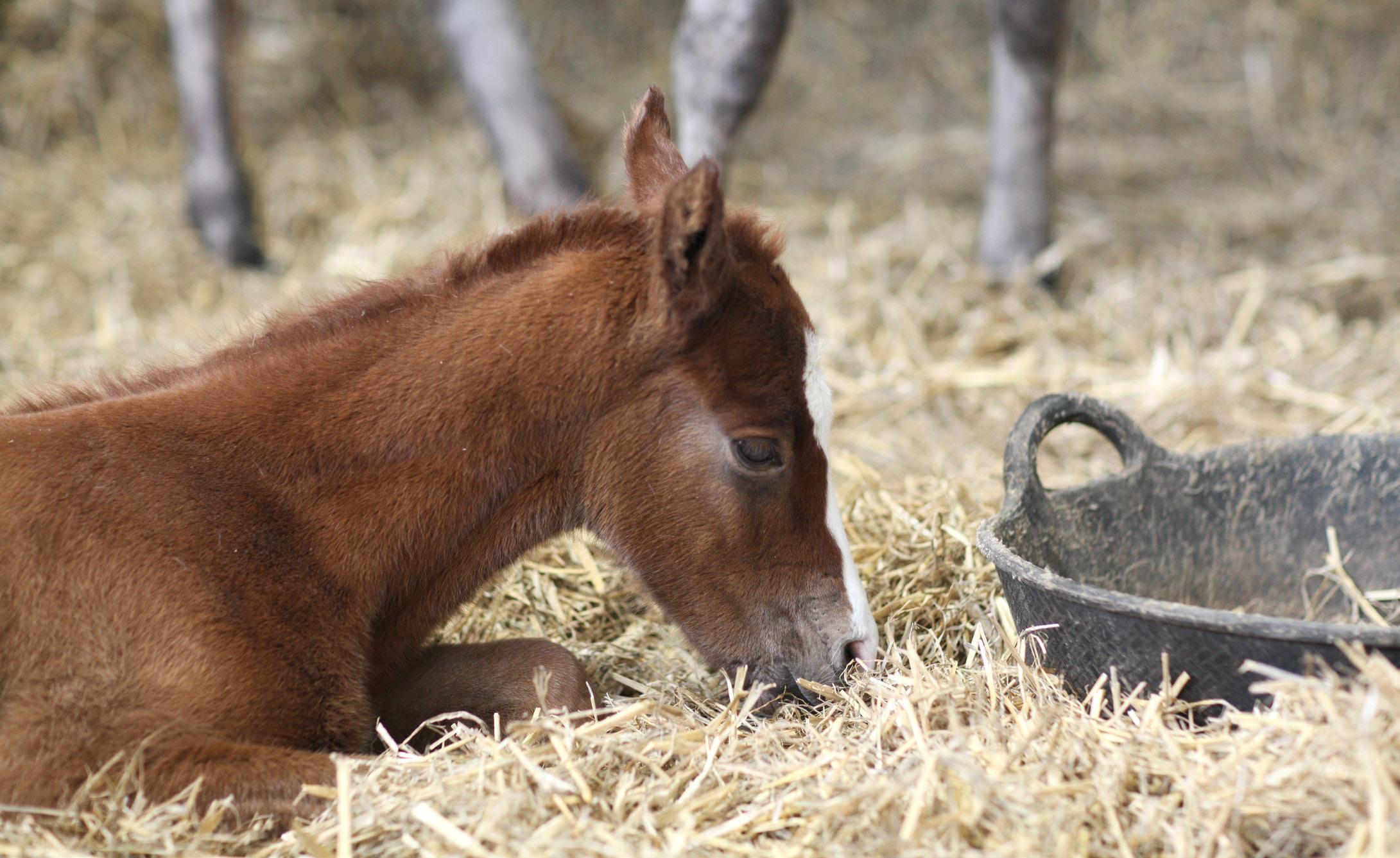
Braced for foaling season
As the due dates passed, everyone at The Glanvilles Stud was on tenterhooks for the delivery of the first foal, says Lucy Procter
January saw us sitting up through the night, watching the cameras for the imminent arrival of our first foals. However, the mares had other ideas. Calculated due dates came and went and although the early mares were bagging up, they remained relaxed, quietly munching hay all night.
On 2nd February, the first foal, a feisty Walzertakt colt, finally made his appearance.
There was no rushing the other mares though – it was almost two weeks before we welcomed another colt. This one was sired by the exciting new stallion Stradivarius and, according to The National Stud where he stands, this was his first-born colt.
The legendary Stradivarius had an exceptional middle-distance flat-race record, winning predominantly over 1m6f to 2m4f. But the Flat racing industry values speed over distances of five furlongs to one mile, and the National Hunt breeding industry values size. Stradivarius was a mere 15.3 hands and, coupled with his middle to staying-distance race record, he would not have been an obvious stallion choice for breeders. Stallions these days usually retire to the breeding shed at two or three years old, as soon as they have proved themselves by winning a big race or two. ‘The Strad’, as he was affectionately known by racing fans, was unusual in that he was kept in training and raced for seven seasons, winning three Gold Cups and four Goodwood Cups.

Doug and Lucy’s youngest has just returned from six months working in Australia and, in his honour, the foal’s stable names this season are all based on Oz place names. This Planteur colt, kicking up his heels, is known as Darwin at home.

88 The BV magazine, March 2024 EQUESTRIAN
This Showcasing filly unable to keep her eyes open is just 12hrs old. All images: Courtenay Hitchcock
This Stradivarius colt, stable name Gawler, really does enjoy being outside very much, thank you ... you can probably tell ...
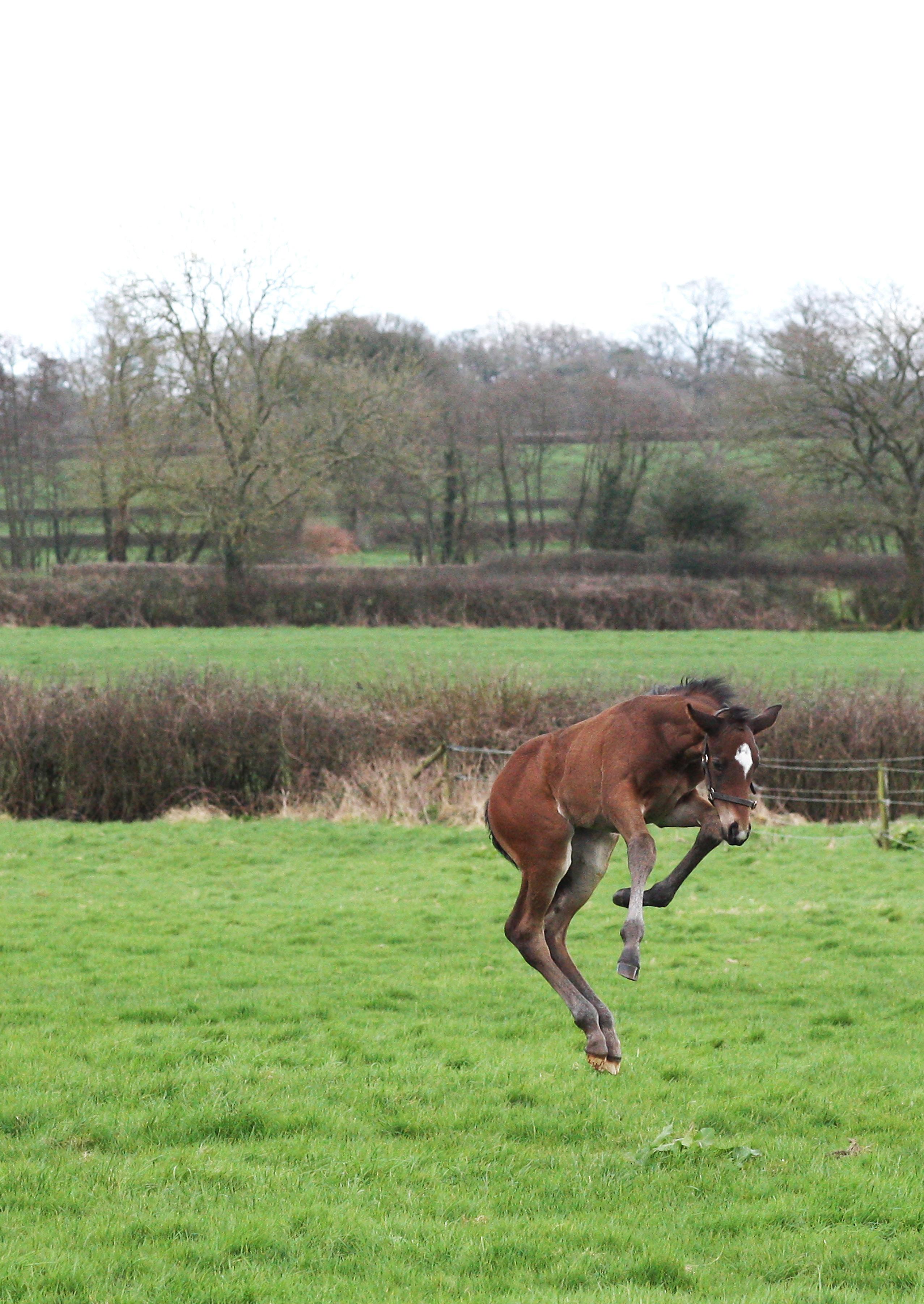
The BV magazine, March 2024 EQUESTRIAN
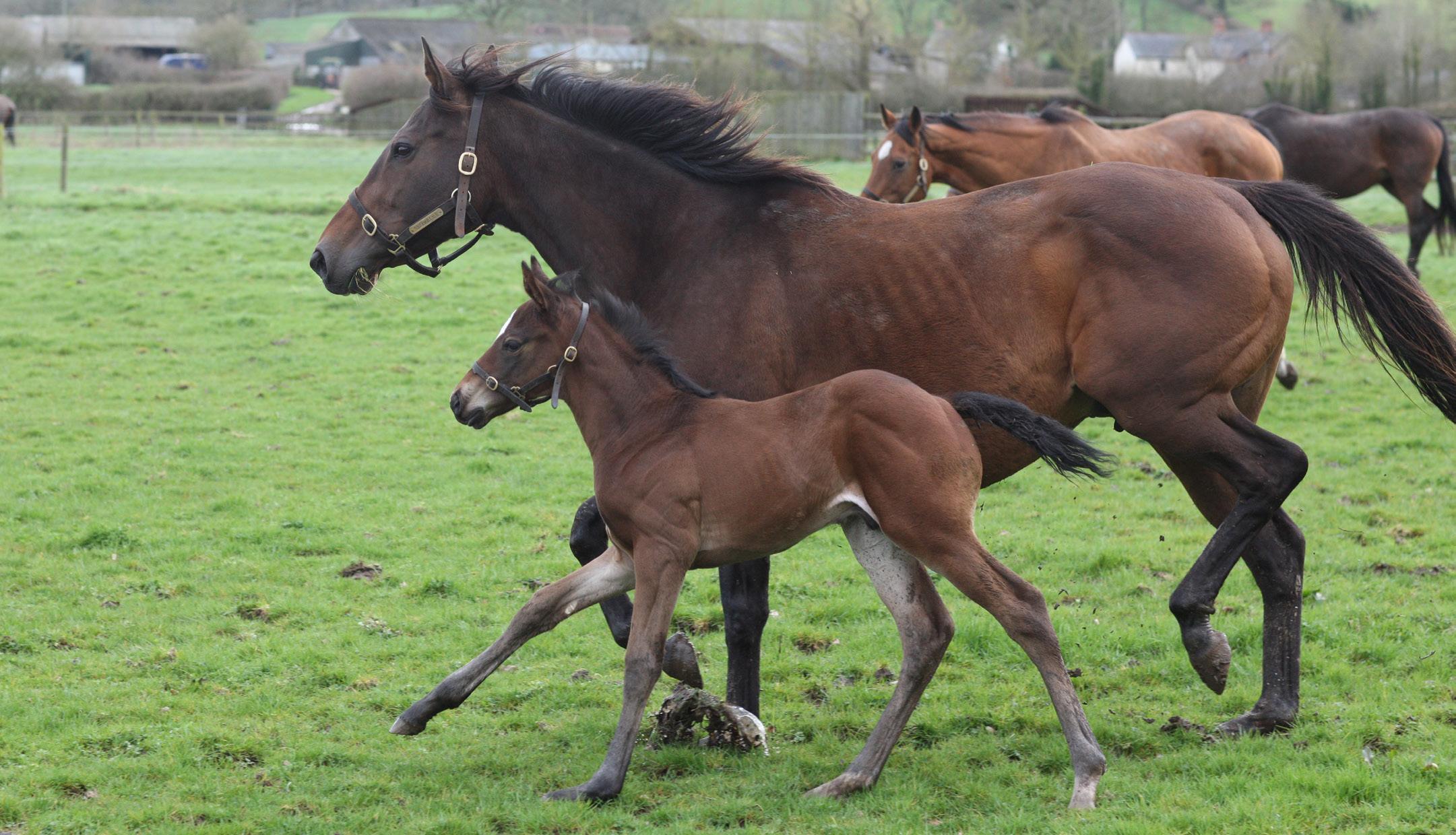
Retiring Stradivarius to stud in 2023, his owner/ breeder knew that he still had an uphill battle to prove himself in the covering shed so, in an attempt to attract the best mares, he offered generous incentives to the breeders of Stradivarius’ first winning foals: £250,000 to the breeder of any Group 1 winner in Britain, Ireland or France, with £100,000 to the breeders of any Group 2 and Group 3 scorers.
Not to be outdone, the third foal arrived just two days later – a long-legged Planteur colt, half brother to the Cheltenham Festival-entered, TGSbred Triple Trade, who is in training with Joe Tizzard
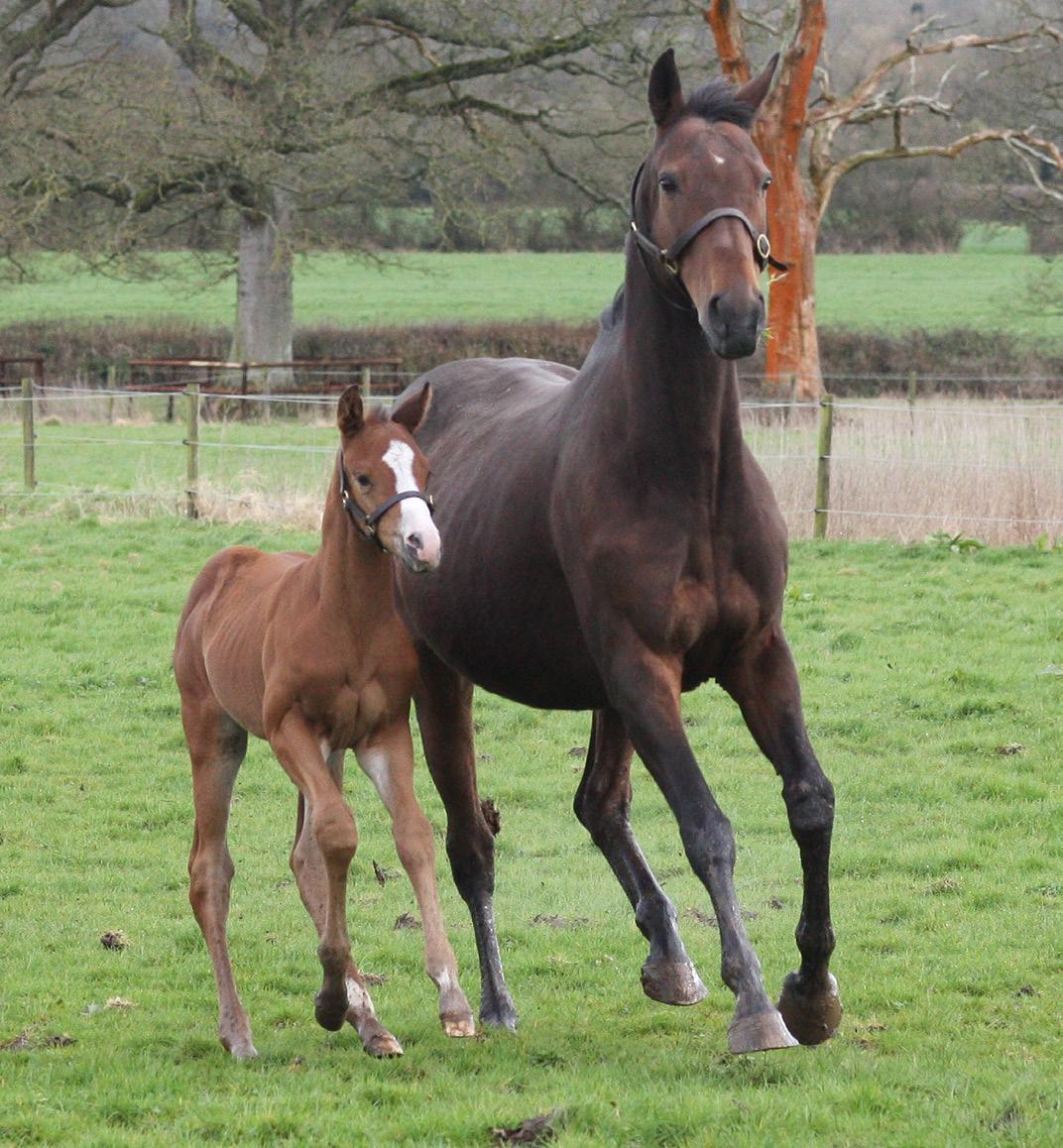
in Milborne Port. Since his first win this season in November, we have enjoyed watching Triple Trade (better known as Trevor at home) race three times, including winning a good handicap chase at Ascot just before Christmas.
Foster needed
A few days later, we were swiftly brought back down to earth with the sad loss of a mare, shortly after she produced a huge Golden Horn colt, due to foaling complications.
For the first 36 hours we fed the ever-hungry-formilk colt from a bottle – every 45 minutes or so, day and night – while we searched for a suitable foster mare. Happily, by the start of the second night, we had successfully introduced our orphan to a mare who had had a late foal in 2023 and who had been very recently weaned, so she was still producing milk. Although the no-longer-an-orphan colt is now happily feeding from his new mother, he still optimistically greets any person who goes into his stable with a ‘so where’s my bottle then?’ nudge!
To add to his fluffy cuteness, the colt (opposite) has huge grey spectacles and a grey nose. With flecks of grey throughout his coat, it is clear that he will gradually, over the coming months, turn from bay to grey like his mother.
This is the first time in four years that we’ve gone into March without our hopes pinned on Honeysuckle’s chances at Cheltenham. However, with plenty more mares to foal, and those that have already foaled needing to be taken to visit this year’s chosen stallion, there will be many more sleepless nights to come through March.
90 The BV magazine, March 2024 EQUESTRIAN
Gawler, the Stradivarius colt, being shown by mum how to stretch his legs in a far more controlled manner
Sydney, our Walzertakt colt, showing off his paces next to mum.
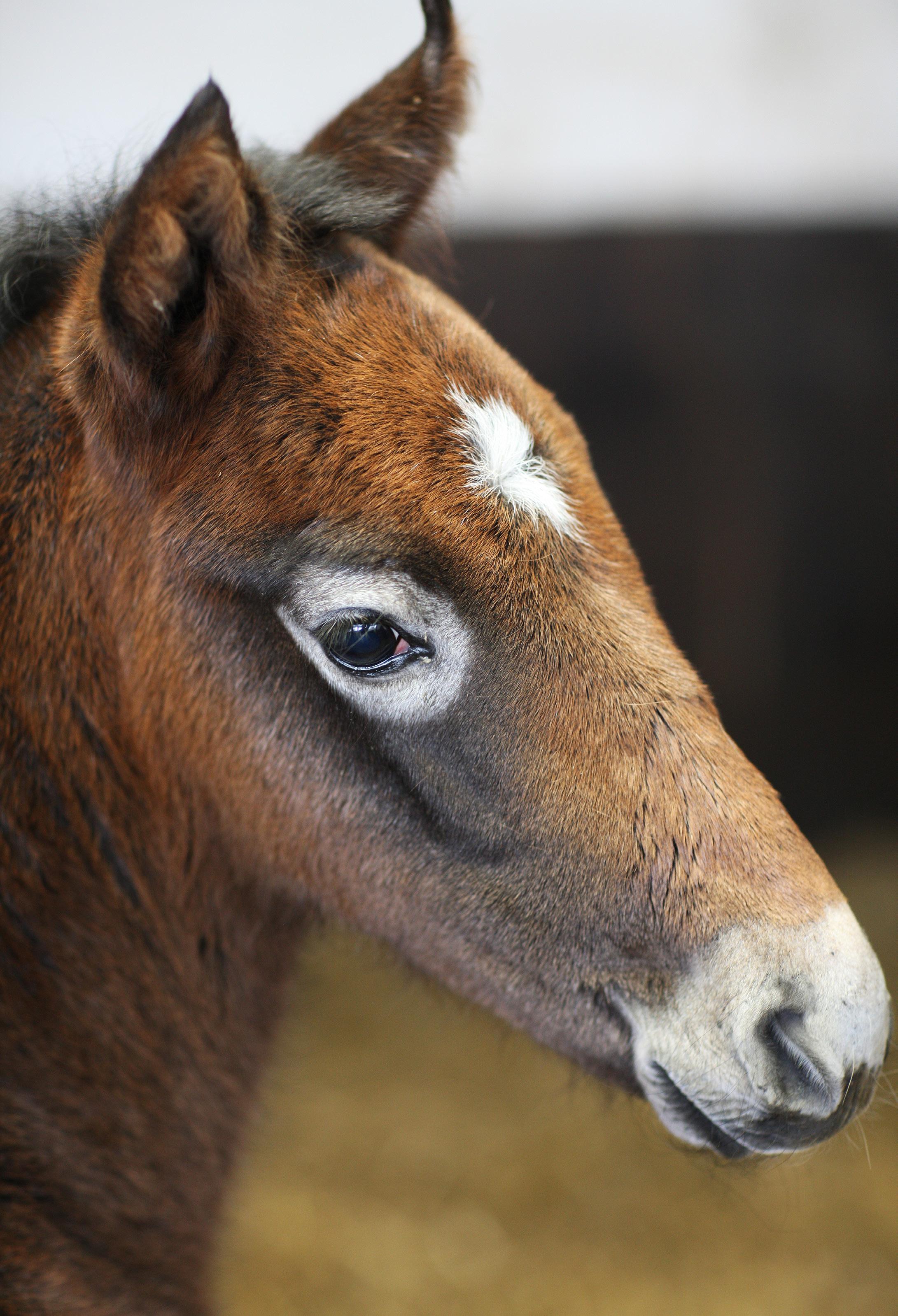
91 The BV magazine, March 2024 EQUESTRIAN
The fluffy, no-longer-an-orphan colt, with his huge grey spectacles and grey nose.

The littlest fox
The commonly found tawny mining bee doesn’t sting, isn’t aggressive, and in a world of wildlife doom is a tiny success story, says wildlife writer Jane Adams
92 The BV magazine, March 2024 WILDLIFE
The female tawny loves gardens, often making her nests in lawns and flowerbeds. Each nest will have several tunnels. Image: Jane Adams
Imagine a tiny fox digging in your lawn ... and when I say tiny, I mean really, really tiny. Imagine it has a thick gingery coat and a sooty-black face and legs. And, as it digs vertically down into your closely cropped grass, it leaves an equally small volcano of soil behind, with a neat hole down the middle. Over the coming days, imagine more and more of these eruptions appearing, until eventually your lawn looks like a miniature assault course.
That’s how my lawn looks each spring – and I couldn’t be happier. Initially, I thought the mini-Vesuviuses were just common worm casts. It wasn’t until a foxy-coloured insect flew past, quartered back, and promptly vanished down one of the holes, that I realised.
Tiny warrens
They don’t sting, they’re not aggressive, and they’re common and widespread
These easily-overlooked insects are tawny mining bees – and they are one of the more then 250 species of wild solitary bees
Despite being the size of a honeybee, they don’t sting and they are not aggressive. They’re also common and widespread – something to celebrate in our seriously nature-depleted world. The female tawny loves gardens, often making her nests in lawns and flowerbeds. Each nest will have several tunnels, with individual chambers where she carefully lays an egg and stocks up with pollen and nectar (for when the egg hatches). Sadly, within a few short weeks, once her work is complete, the adult tawny will die. She will never meet her offspring, who develop slowly and hatch the following spring. If you’re thinking of mowing soon and don’t want to harm your lawn-loving miners, just increase the cutting depth of your mower for a week or two. Even better, make yourself a cuppa and watch as these bees collect pollen on their legs and deposit it in their nests
If you’re thinking of mowing soon and don’t want to harm your lawn-loving miners, just increase the cutting depth of your mower
Tawny mining bee facts
• Latin name: Andrena fulva. Fulva comes from the Latin for tawny, the colour of their foxy coat.
• Females might be spotted in the morning, sunbathing next to their nests as they warm up before flying to collect pollen and nectar.
• Most likely to be seen from mid to late March through to June.
• Unlike bumblebees and honeybees, solitary bees mostly nest alone.
• They play an important role as pollinators of fruit trees such as apples and pears, but can also be found on hawthorn, garden plants, blackthorn, dandelion, buttercups and willows.
• More information: bumblebeeconservation. org/tawnyminingbee/
neighbour asks what you’re doing on your hands and knees peering into the grass, just smile and tell them you’re watching foxes. The tiny, tiny precious foxes living under your lawn.
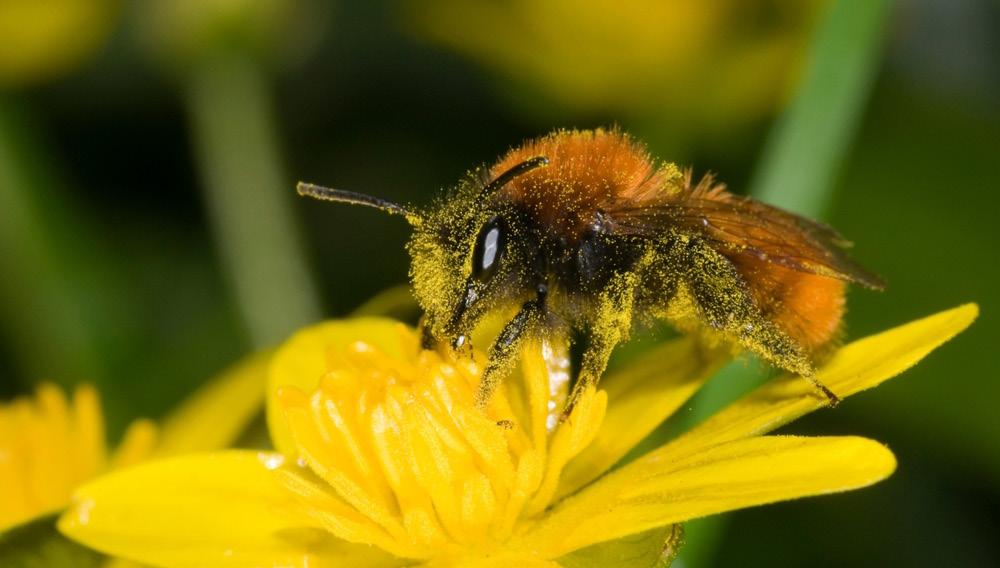
The BV magazine, March 2024
WILDLIFE
One of the most celebrated birds in literature, poetry and music, the rather nondescript skylark (Alauda arvensis)
Image: Vaughn Matthews

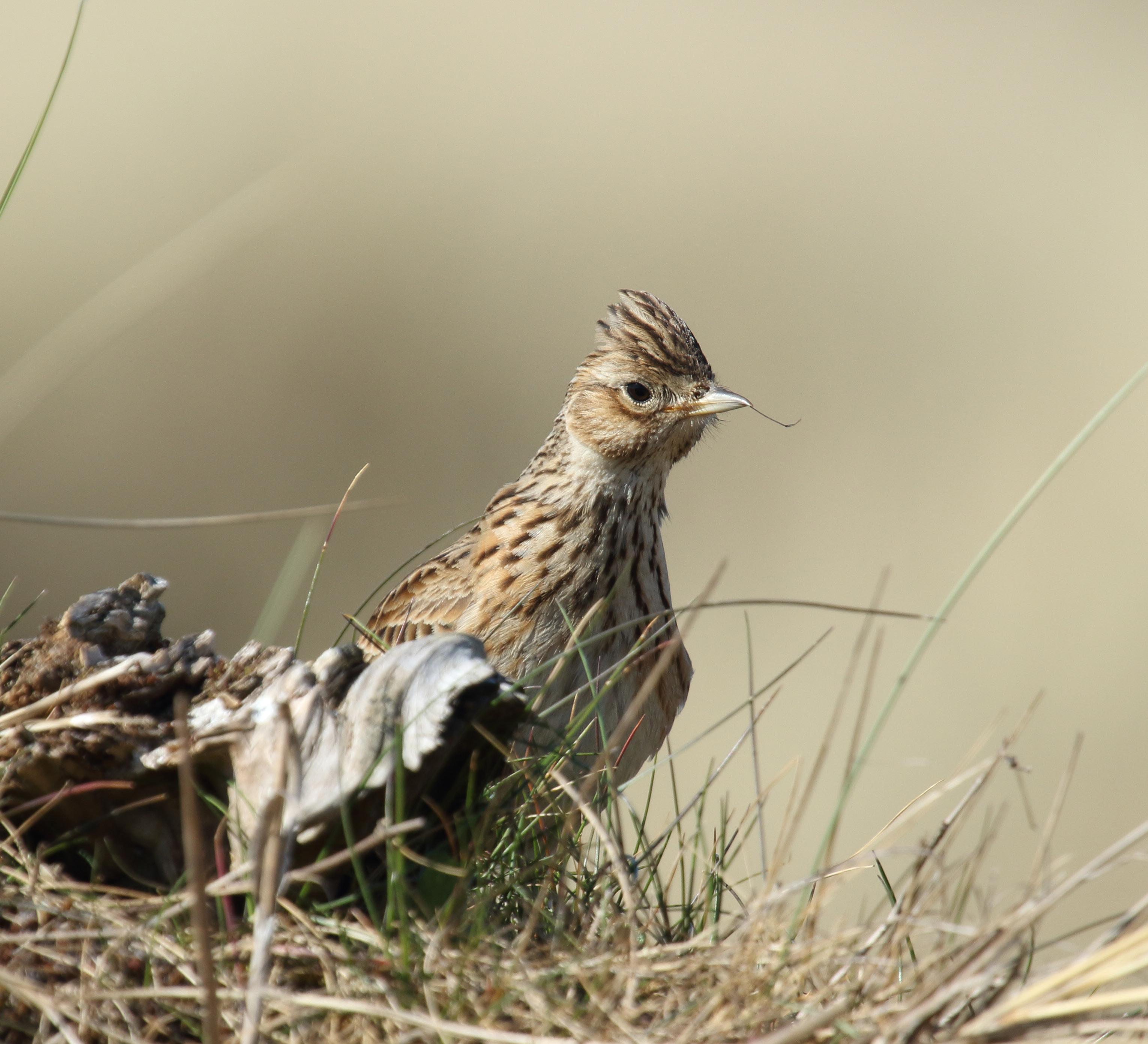
Skylarks of Fontmell Down
It’s not hard to give the wildlife in your garden an extra helping hand at this time of year, says Mitch Perkins, DWT’s wilder communities assistant
Our nature reserves offer a haven for wildlife and a place for people to connect with nature, and Fontmell Down is no exception.
Boasting vibrant displays of chalk downland flowers and butterflies, an abundance of birds and mammals and stunning views over the Blackmore Vale, it is easy to see why it attracts nature lovers all year round. And quite often, these visitors are joined by their beloved four-legged friends.
Walking your dog is a great form of exercise and can help achieve that important dose of nature therapy that we so often neglect.
However, a dog’s naturally inquisitive nature can be extremely harmful to wildlife, particularly our ground-nesting birds.
Many ground-nesting birds, such as nightjar and woodlark, are associated with heathland habitat.
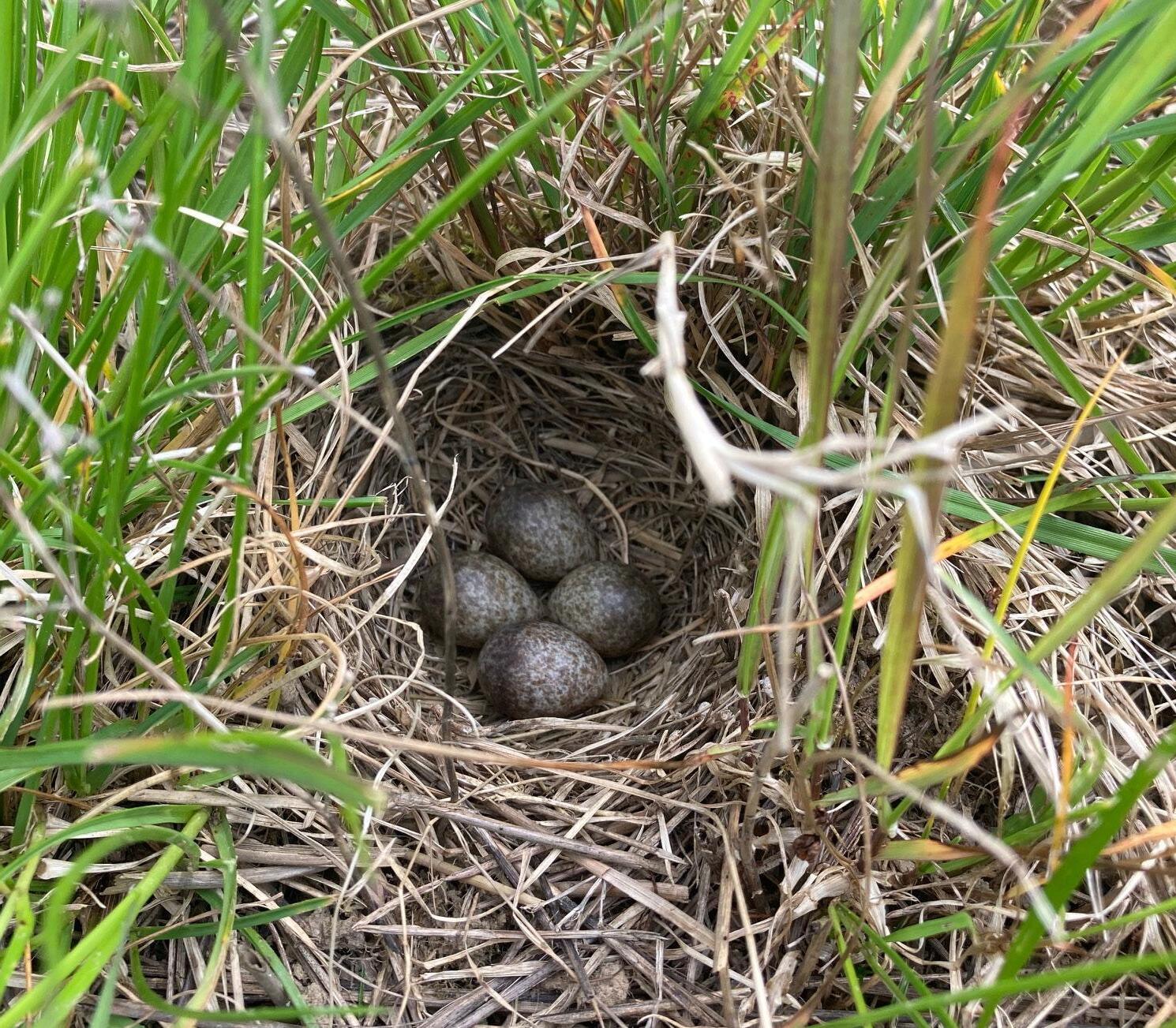
94 The BV magazine, March 2024
WILDLIFE
Skylarks build their small, grassy, cup-shaped nests on the ground Image: Seb Haggett
However, one particular species takes advantage of the patchwork of grassland and scrub at Fontmell Down: the skylark.
One of the most celebrated birds in literature, poetry and music, the skylark (Alauda arvensis) is a small, streaky brown bird with a crest and long tail. Although its appearance can be described as rather nondescript, the same cannot be said for its unmistakable song-flight. Male skylarks will rise almost vertically from the ground, effortlessly hovering at a great height while singing. These long and complicated song-flights can last for up to an hour, and the birds can reach 300 metres before descending. In contrast with their impressive aerial displays, skylarks build their small, grassy, cup-shaped nests on the ground. Around three to four eggs are laid, and parents can have up to four broods in a breeding season (between April and August). Building their nests on the ground means that
they are at risk of disturbance from trampling feet and excited dogs. When the parents are scared off their nests, the precious eggs and chicks become vulnerable to predators.
The long and complicated song-flights can last for up to an hour, and the bird can reach 300m high in the air
And it’s not just skylark nests that can become compromised by walkers and their dogs on Fontmell Down. Meadow pipits, stonechats, corn bunting and yellowhammers all nest on, or close to, the ground. The law states you must keep your dog on a lead no longer than two metres between 1st March and 31st July when on any open access land, in order to protect groundnesting birds. But Dorset Wildlife Trust urges all visitors to keep their dogs on a short lead and stick to the pathways on the nature reserves all year round to protect wildlife and livestock.
• Visit dorsetwildlifetrust.org.uk to plan your own trip to Fontmell Down and find information on our other nature reserves
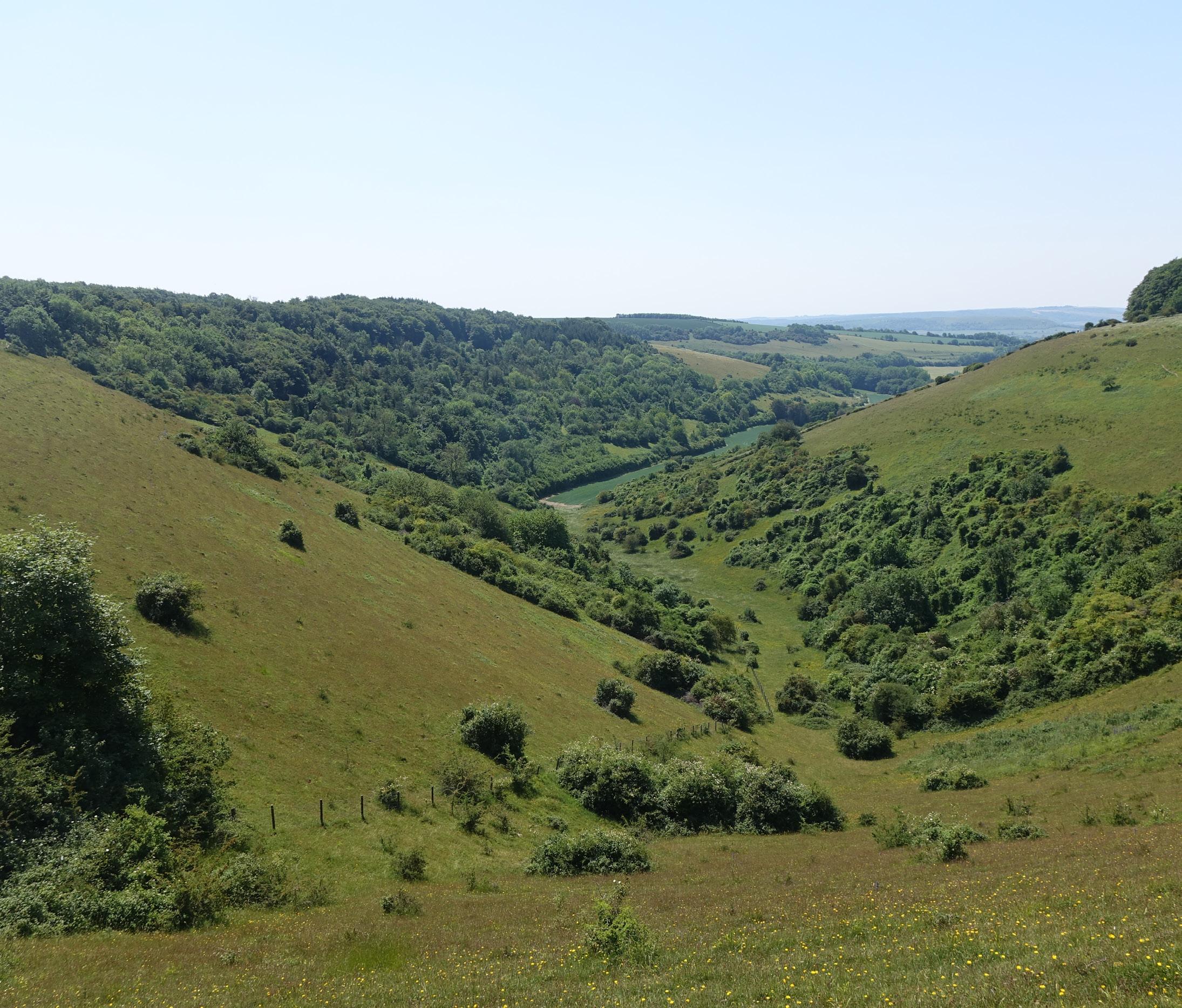
95 The BV magazine, March 2024 WILDLIFE
Fontmell Down in summer
Image: Jack Clarke
by Fanny Charles
In the studio with Toby Wiggins
The award-winning artist is continuing a century-old tradition at Dunshay Manor, the Purbeck home of the sculptor Mary Spencer-Watson
Dorset painter Toby Wiggins was born just a few miles from the home and studio of the late sculptor, Mary Spencer Watson. The ancient landscape, with its quarries and Saxon farmsteads, eventually drew him back to Purbeck where he now has his studio in one of Spencer Watson’s old buildings. His earliest memories were formed by traditional farmwork, the sounds of the stonemasons, the wildlife, the cries of seabirds and an unusual relationship between the local landowner and the tenants.
Toby won the prestigious 2023 Ondaatje Prize for Portraiture for a powerful and deeply moving study of a local master hedge-layer, Russell Woodham. When you visit Toby’s studio on Purbeck, the portrait dominates the large space. It draws you in. You are instantly attracted to the warmth, intelligence and wry humour on Russell’s face, to his obvious love for his cocker spaniel, Conker, who stands close to him, to the timeless beauty of a traditionally laid Dorset hedge.
Elsewhere in the studio there are sketches and studies, a fulllength portrait of Mary Spencer Watson (right), whose studio was once here, and a rather sombre study of a man in a suit, with a mountain behind him. This is a commissioned portrait for a board-room, and it is as different from the paintings of Russell and Mary as it is possible to imagine from the same artist’s brushes. These three paintings, set in the studio in old farm buildings at Dunshay Manor, between Harman’s Cross and Langton Matravers, give even the most

casual visitor an insight into both the portrait painter’s skill and the nature or character of the sitter. The businessman gives nothing away, but his upright posture, with a snow-covered mountain in the background, suggests power and perhaps a rather uncompromising attitude. There are no objects or clues to hint at his interior life.
Mary Spencer Watson (1913-
2006) is also uncompromising – this was a woman whose sculpture was inspired by the geology around her family home at Dunshay, and by watching the masons cutting Purbeck stone in quarries where she would select stone for her carvings.
Mary’s sculptures include the Four Evangelists, who stand outside the Chapter House at Wells Cathedral.
96 The BV magazine, March 2024
ART
Toby Wiggins’ portrait of the late Mary Spencer Watson
Mary was born in London but in 1923 her family – her father was the artist George Spencer Watson and her mother, Hilda, was a dancer and mime artist – moved to the late 16th century Dunshay Manor. This was her home for the rest of her life. The family decorated the Manor in the Arts and Crafts style and used its outbuildings as studios and for dance and theatre productions. In Toby’s portrait, Mary looks strong and deeply intelligent. You can imagine from the physical solidity of her pose, the uncluttered background and her monochrome clothes that she was as “hefted” to Purbeck as the Herdwick sheep are to their native Lake District. Russell Woodham is similarly at one with the setting, resting for a few minutes beside the hazel hedge he is laying in the Dorset style, on an unidentified hillside in West Dorset. It is winter, because that is when you lay hedges. It is hard, physical work, and Russell has been doing it for decades (see the profile on Russell in The BV, Oct 21 here)
Finding his art
Toby grew up in a tiny tenanted cottage on Afflington Farm, one of several ancient farmsteads around Dunshay. As a child, he saw hedge-laying and quarrying, and observed the unusual way that Mary Spencer-Watson managed her tenants – they were not charged rent, but instead did whatever jobs were needed around the property. He showed an early aptitude for painting and drawing, which was encouraged by teachers at school and at Bournemouth College of Art. Toby went on to study at Falmouth College, followed by three years postgraduate study at the Royal Academy Schools. He worked in London for some years, but was pulled back to Dorset in the early 2000s. He has always kept in mind advice that Mary was given by
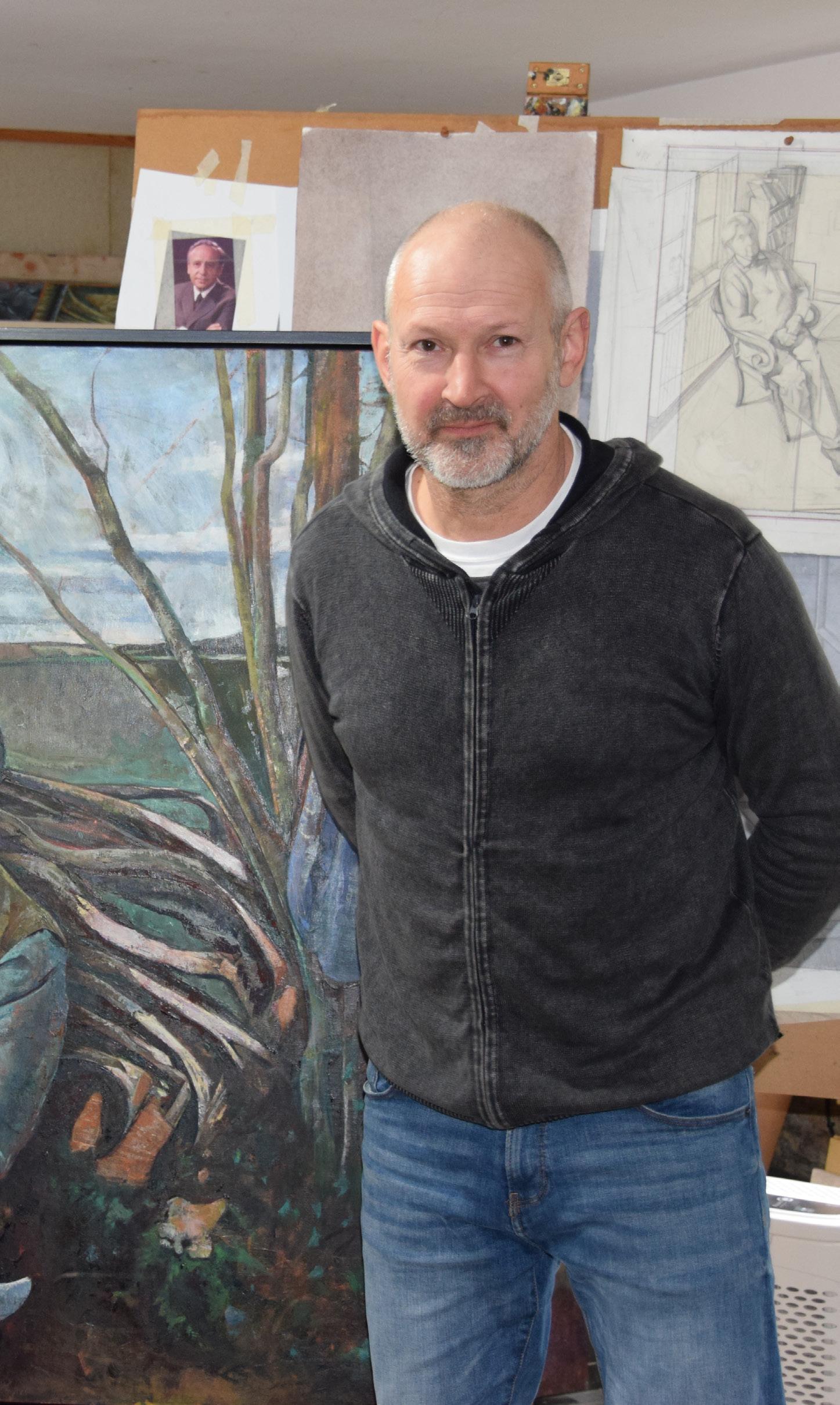
her father: ‘It’s a privilege to do this [make art]. Take it seriously. Work hard.’
Toby is self-deprecating – he says there are many people who have more natural talent than him, but are perhaps not prepared to put in the long hours of work, false starts and failed attempts that go with completing a satisfactory portrait. He worked hard at art college and received a rigorous training at the Royal
Academy Schools, where the skills of drawing, sculpture and the various disciplines of painting were all taught.
From the promise of Toby’s early artistic endeavours, Mary Spencer Watson had taken an interest in the talented youngster. Back in Dorset as a professional artist, Toby asked if he could paint her portrait, and in 2004, after the work was finished, she allowed him to use

97 The BV magazine, March 2024 ART
In the studio: Toby Wiggins in front of his award-winning portrait of the Dorset Hedgelayer, Russell Woodham
her studio: ‘She wanted someone to continue artistic practice at Dunshay. And of course I did some jobs for her!’
Following her death in 2006, there was a lengthy legal battle over the future of Dunshay, but eventually the Landmark Trust (to which Mary had bequeathed the house) gained ownership and began the lengthy project of repairing and restoring the ancient manor ready for Landmark guests. At this point, Toby moved into a second studio, where he continues to work. The Trust opened Dunshay Manor for groups to stay in 2019.
Seeing things differently
In 2006, Toby won the BP Travel
Award, a competition run in conjunction with the National Portrait Gallery, which is aimed at encouraging artists to focus on and develop the theme of portraiture in their work. As someone who had done occasional farm work ‘to pay the rent,’ Toby’s proposal was to travel around Wessex and paint people working on farms and in the landscape.
‘I was interested in the farmed landscape,’ he says. ‘When you have worked on a farm you see things differently. I wanted to include people who made their living from traditional crafts such as blacksmithing, thatching, hedge-laying, coppicing, hurdle making, charcoal burning and


hunting. I wanted to discover what was left of a working countryside that Thomas Hardy might recognise. I found it – a trace of it.’
The range of people he painted for the project is wide and fascinating – from the nearlegendary Dionis McNair, one of the few women Verderers of the New Forest, to hurdle-maker Alan Brown of Wool and shepherd Larry Skeats, who effectively saved the ancient shepherds’ huts (now a mainstay of rural glamping), and for years was the much-loved landlord of The Trooper Inn at Stourton Candle. The BP Travel Award series was shown at the National Portrait Gallery in London and, with some additional studies, including a Purbeck quarryman, at Dorset County Museum in 2008.
In the Dorset style
‘But I didn’t get a hedgelayer,’ says Toby. Later, he noticed a sign saying “Dorset Hedgelayer” in a newly-laid hedge near Dunshay.
‘I messaged him on Instagram, and Russell said to come on over and meet him.’
They met on a sunken track leading to a derelict farmstead near Rampisham. The hazel hedge was ‘quite overstood’ – tall, leggy and losing the density of scrub at the base, affecting its value for wildlife as well as its ability to provide a good stockproof barrier. Russell was laying it in the Dorset style.
The process of painting his
98 The BV magazine, March 2024 ART
Toby’s portrait of renowned Dorset shepherd Larry Skeats, who for years was the muchloved landlord of The Trooper Inn at Stourton Candle
Dionis McNair - New Forest Verderer oil on gesso

portrait was a lengthy one, spread over more than a year, says Toby. He made drawings and sketches, and in the summer Russell came to the studio to sit for him.
It was important that the painting should include Conker, Russell’s constant companion. There are so many details to discover in the finished portrait – the more you look into it, the more you find. There is the ageold skill of the hedgelayer in the way the hazel is cut and bent to reshape the old hedge, there is the jacket hanging from a hazel spar like a coat-hook – ‘It’s quite a nice office,’ says Russell – and the tools, from the traditional billhook to the necessary 21st century chainsaw. The eye is drawn in different directions by the arcs of hazel branches, the shape of the hazel woven into
the hedge, the swing of the axe, the rounded lines of the helmet and visor, and the relaxed position of the hedgelayer, leaning back against a halffinished section. Most of all, you come back to Russell’s face – weather-beaten, serious, intelligent, with a quizzical lift of the eyebrow and just the faintest hint of a smile.
It is a man enjoying a brief rest from hard physical work that is utterly timeless.
The portrait, which is called Winter’s Work; Russell Woodham at rest while laying a hazel hedge in the Dorset Style. The painting has gone to the National Portrait Gallery for the second round of judging for the Herbert Smith Freehills Portrait Award.


99 The BV magazine, March 2024 ART
Winter’s Work; Russell Woodham at rest while laying a hazel hedge in the Dorset Style
‘Where the work happens’ – inside Toby Wiggins studio at Dunshay
Artistic conversations
Toby was elected a member of the Royal Society of Portrait Painters in 2006. He won the Prince of Wales Drawing Award in 2005 and 2013, the Changing Faces Prize in 2006 and the Lynn Painter-Stainers Prize for figurative painting in 2009. He has exhibited widely, including at the Royal Academy of Arts, Royal West of England Academy in Bristol, the National Portrait Gallery, the Holburne Museum in Bath and the Jerwood Space. For more than ten years he taught at Arts University Bournemouth, but now fully focuses on his work as a painter – though he still teaches occasional local classes. Primarily a portraitist, he also draws and paints landscapes and still lifes.
His next exhibition is with fellow portrait painters Anthony Connolly, who has his studio at Semley, and Kent-based Andrew James. Their work will be shown at the Highgate Gallery in London from 12th to 25th April. The Heart Has Its Reasons: Three painters in Conversation brings the artists together ‘in the spirit of artistic conversations which lead to the works and connections that emerge via three distinctive visual languages,’ says Toby.
While his portrait of Russell may finally live in London, the painting of Mary Spencer Watson will move just a few yards to its new permanent home. Originally bought by the revered Dorset Museum curator Roger Peers, who died in 2023, it was bought at the posthumous auction of Peers’ art works by the Landmark Trust and will soon be on display in Dunshay Manor. ‘We ought to have it here, for Mary’s sake,’ says Anna Keay, the architectural historian and director of the Landmark Trust. tobywiggins.co.uk
• dorset-hedgelayer.co.uk


100 The BV magazine, March 2024
Details of a work in the forthcoming show at Highgate Gallery
ART
‘Gilded Sleep’ oil on gesso panel. Part of The Heart Has Its Reasons Three Painters In Conversation from 12th to 25th April at Highgate Literary and Scientific Institute

Good is good, great is better
How a small business in North Dorset took over the food world. As the 2024 Great Taste judging starts, Fanny Charles hears the story
Thirty years ago, publisher, author and cheese expert Bob Farrand was asked to put on a special feature at a wholesale food exhibition at Wembley. He decided on an event to recognise and reward outstanding food and drink products.
There were about 200 entries, from the UK only, for that first event which would go on to become the Great Taste Awards. This year there are more than 13,500 entries, from across the world – from Australia to Yemen, from tiny countries that are barely a pin-track on the globe,
such as the African island of Sao Tome, to some of the biggest –China and the USA. The respect in which the awards are now held is reflected in the diversity of products, from some of the world’s best loved cuisines to exciting new ingredients, from Korea to Panama, from Papua New Guinea to Fiji.
The Great Taste Awards are now the world’s leading food accreditation scheme. They are run by the Guild of Fine Food, and based on a small industrial estate at Gillingham.
The Guild, which also runs the

World Cheese Awards, was founded by Bob Farrand and his wife Linda.
It is still very much a family affair – Bob is now the chairman, his son, John, is managing director, and John’s wife Tortie is the special projects director. Tortie is head of Great Taste judge recruitment, as well as running the Dorset judging venue at Guild HQ (there is also a London judging venue at the Guild’s base in Southwark).
Great is better
Back in the mid-1990s, Bob was becoming seriously concerned at the impact that supermarkets’ own brands – particularly those claiming to be the “best” or the “finest” – would have on small and artisan producers in the UK and abroad, whose products were genuinely outstanding but who could not compete on price with the supermarkets: ‘They were persuading people that this was the finest food available –and I felt this was prejudicing people against the makers of fine food, which was more expensive.’ He talked to a friend, the legendary New Zealand-born chef, broadcaster and food writer

101 The BV magazine, March 2024
LOCAL FLAVOURS
2023 judges Julius Roberts and Philli Armitage-Mattin © Guild of Fine Food (Sam Pelly)
From left: Roland Barthelemy, Bob and Linda Farrand
Glynn Christian. ‘I said, I’m going to start this awards scheme – the Good Taste Awards. Glynn said: “Good is good. Great is better.”’ The name was, of course, perfect.
Two years later, the new awards were run alongside the World Cheese Awards, which had started a few years earlier in 1987. That year there were about 400-500 Great Taste entries.
All the entries were judged in a day, and that continued to be the pattern until entries hit more than 1,000 in 1999.
It became clear that it was getting too big for a single day’s judging. Venues changed over these early years, including various locations of the Fine Food Fair, and at the Business Design Centre at Islington. Awareness of the new scheme increased with the occasional celebrity judge, including chef Antonio Carluccio and broadcasters Gregg Wallace and Anneka Rice.
But nobody could have guessed how this project would grow.
‘You don’t even contemplate how big it can be,’ Bob recalls. ‘We didn’t have any idea it would become as big as it has.’
One significant step into the
international food scene came with the involvement of Ireland’s Bord Bia, the state agency also founded in 1994, to promote sales of Irish food and horticulture. The country’s excellent dairy and meat, particularly, are still regular top Great Taste Award-winners.
Around the year 2000, Bob and Linda moved to Gillingham, and a few years later they began to run the awards from a two-storey building near the old milk factory in Wincanton. For the first time they had an on-site kitchen, although storage continued to be a problem until 2015 when they moved to the current site on the Kingsmead business park, on the Shaftesbury side of Gillingham. Here the Guild has plenty of room for its offices, for the Great Taste judging sessions and for training (food and cheese training programmes are a big part of the Guild’s work). It also provides a warehouse with good access for food deliveries.
Open for entries
‘I’m going to start this awards scheme – the Good Taste Awards.’
Glynn said: ‘Good is good. Great is better.’
Entries open early in the year. By mid-February this year there were more than 13,500, from most European countries and from dozens of places around the world. Judging starts in early March and runs, with breaks for Easter and bank holiday weeks, until June. The various awards (one, two and three stars) are reported in the summer, and the final category, regional and international winners are announced at the Golden Forks evening in September. Judging takes place in Gillingham and Southwark, with some judging, such as tea or espresso coffee, at specialist venues. On judging day there are usually six or seven tables, with three or four judges at each, one of whom has a laptop to record comments and any award. A number of ambient temperature products will be laid out on the table – bread, cheese, honeys, chutneys, jams,
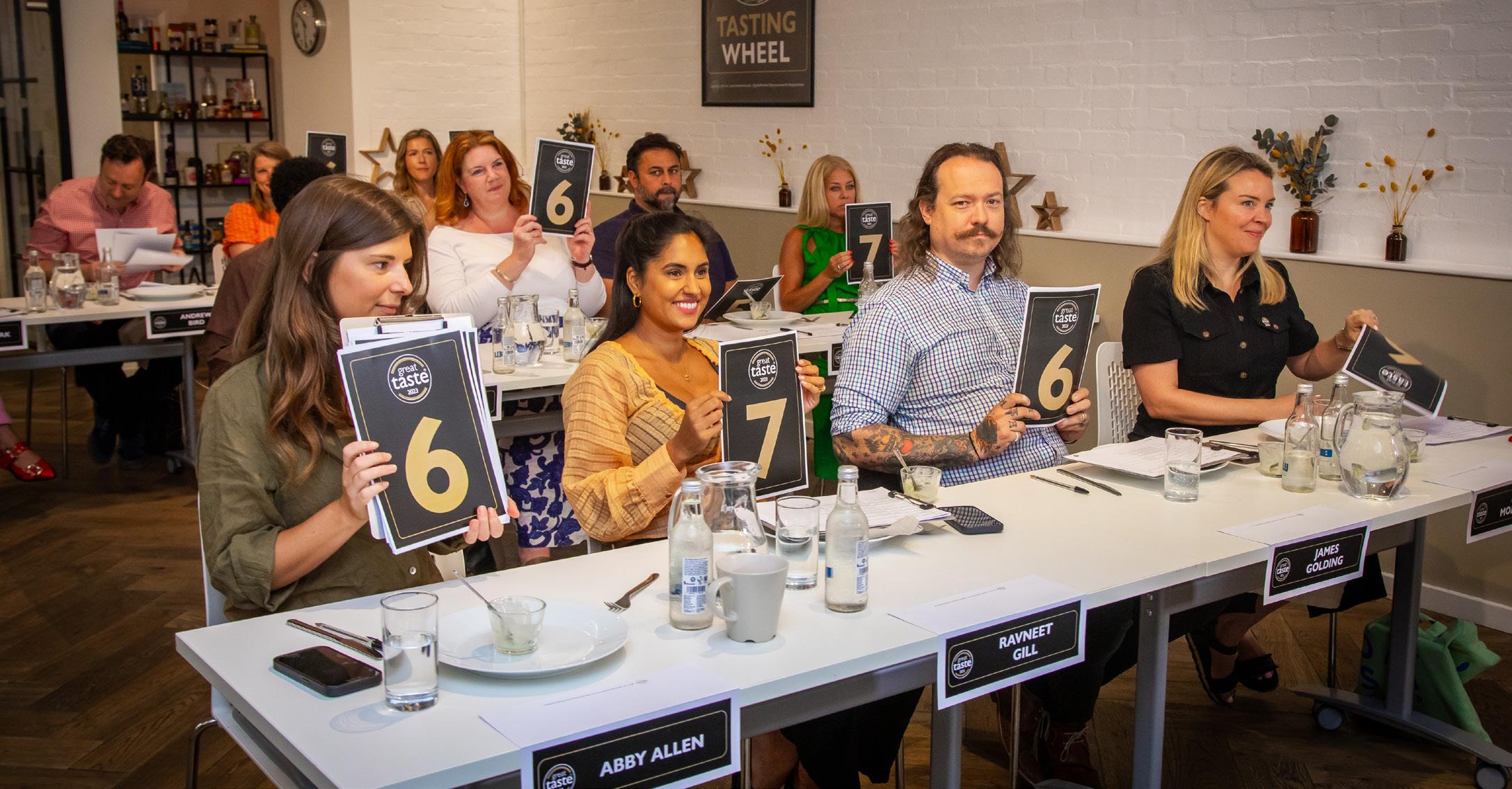
102 The BV magazine, March 2024
2023 judges from left: Abby Allen, Ravneet Gill, James Golding © Guild of Fine Food (Sam Pelly)
LOCAL FLAVOURS
preserves, oils, vinegars, nibbles and sweets. Other products –hot from the oven (meat, pies, ready meals, soups), or frozen (including ice creams and gelati) – come out during the course of the judging day.
Each product goes to at least two tables and to more if it is either suggested for two or three stars, or if there is a disagreement between tables. There are always experts in different foods in the room – on any given day, there will be one or more experienced cheese or honey or chilli judges, preserve makers, bakers, taste and spice experts and others. For a product to achieve three stars the judges in the room have to be virtually unanimous. It has to be outstanding – it’s not easy to quantify or define a three-star, but you know it when you taste it, and ‘Wow!’ does tend to be the common word.
Of course, the report on the product has to include some proper description and explanation – what is it that
makes this product special? Why does it taste so much better than another similar one? What is so good about it?
A food producer’s view
One of the unique features of the Great Taste Awards is that all products are judged blind –judges do not see any branding or packaging, or any names that might identify the producer. Country or place of origin may be included in the description, and is often helpful for judges in understanding territorial or regional distinctiveness.
The value of the Great Taste Awards to producers is summed up by Amanda Streatfeild, who with her husband George ran Denhay, producing awardwinning farmhouse cheese and bacon for many years. They were one of the producers to take part in the first ever Great Taste Awards.
An experienced cheese judge herself, Amanda says: ‘The judging at the Great Taste Awards

is the most rigorous I have ever come across, so achieving any kind of star gives a real boost to you and your team. Over the years, the awareness of those stars on products is increasing, and we are always proud to put ours on our bacon packs. It is a brand that supports small upcoming producers alongside established brands.’
Capreolus Fine Foods Ltd, the charcuterie business founded by David and Karen Richards at Rampisham, near Evershot, won many Great Taste stars, single, two and three, and top awards including, in 2019, the Charcuterie Product of the Year for guanciale, and last year their coppa was in the final 16 for the Great Taste Golden Forks supreme championship.
David says: ‘Great Taste is the single most important competition for food producers in the world. It allows you to calibrate your product against others, and to see just how good you are. It gives you really good feedback, about what is good and what is not so good. If you take it on board, it gives you the opportunity to come back next year and maybe do better. It is vitally important for small producers – comparable consultation and feedback would cost thousands of pounds.’
Great Taste is important, he says, not only for food producers but for consumers. Even bus travellers in London can discover Great Taste with the distinctive gold stars and black labels on posters advertising food and drink products in the capital’s bus shelters.
The view from the room
The role of a food and drink judge may sound rather romantic, but it is a serious and responsible task, says managing director John Farrand: ‘Every judging team and judging room is put together to give a balance of expertise and discipline within

103 The BV magazine, March 2024 LOCAL FLAVOURS
Tortie and John Farrand
food and drink, and we attempt to balance age and gender too. All the products are blindtasted with each entry going on a journey around the room to achieve an aggregated rating – no award, one-, two- or three-star. A minimum of six and a maximum of 24 judges will assess a product depending upon that journey.’
The co-ordinators, who report the feedback and awards (if any), include top food writers, broadcasters, journalists, people with specific expertise and some representing the influential body of social media food campaigners and commentators.
One of the long-standing and most experienced co-ordinators is Sarah Newitt, a copywriter by profession, who has been a member of the judging team since the early 2000s. She recalls how she got involved at the White Lion Inn in her home village of Bourton: ‘A gang trooped past post-lunch, Great Taste Award badges pinned to their chests... The temptation to accost was irresistible. Talk of venison, pickles, bread, local cheese, the quality of the pub’s fish and chips, details of the lunch they’d just enjoyed and the fact they were down a judge the following week launched my “career” as a co-ordinator. Nearly 20 years on, I’m still coordinating and still loving every minute of it.
‘Back then, many of the judges were local WI members. What they didn’t know about the set of a jam or the fluffiness of a Victoria sponge wasn’t worth knowing. Now, judges are drawn from a broader church... the breadth of knowledge is astonishing and the generosity of spirit of those who happily give their time to judge the number of products that cross the accumulated palates of the GFF team is equally astonishing.
‘I’m there to taste, judge, listen and distill the opinions of all the judges on my table, turning them

into constructive feedback for the producer. There is no right or wrong. If we’re flummoxed by a product, there is expert help somewhere in the room, but we are constantly reminded that these are the Great Taste Awards and must be judged as such. Every entry goes through the same process; sighs of delight (or sometimes not!), a flurry of chat, I write, read back the words and amend if necessary, then I press send and it’s on to the next product. Usually 40 or 50 a day… ‘What do I get out of it? The privilege of helping artisan producers improve their offerings; the camaraderie and joy of spending time with fellow foodies; the friendships that have evolved over the years and the sheer fun of the day.’
Food roots and routes
Judging the Great Taste Awards is an eye-opener – even if you are experienced in other aspects of the food industry. It gives you an insight into where some of our most-loved and commonly used foods come from, and the food routes that bring great tastes – and Great Taste Awards – to our larders and tables. It also introduces you to ingredients you may have never previously encountered – wakame (Pacific kelp), kokum (a wild mangosteen, a tropical tree-fruit from south east Asia), timmur (a Nepalese pepper), camu camu (a rainforest berry that is rich in Vitamin C). Then there are the specialist terms that you learn along the way – syneresis, which is liquid oozing out of foods (as can
104 The BV magazine, March 2024
LOCAL FLAVOURS
2023 judge and Masterchef winner Eddie Scott © Guild of Fine Food (Sam Pelly)
happen with some soft or cream cheeses, jams or jellies), brusted or brusting, which means pulled (as in pork) or lyophilisation, a scientific term for freeze-drying. My personal favourite new word so far this year is merroir – like terroir, but from the sea.
The sheer geographic scale of the entries is amazing – products come from nearly 110 countries, crossing land, language, cultural and economic barriers (not to mention the challenge of import regulations).
Future trends
Desert honeys from the Yemen, mountain forest honeys from Greece, chilli from Fiji and sesame seeds from Sudan’
Exciting products this year on the judges’ table may include desert honeys from Saudi Arabia and the Yemen, mountain forest honeys from Greece or Romania, vanilla from Sao Tome and French Polynesia, chilli from China, Fiji or the Philippines and black peppercorns from Panama. In previous years, judges have been wowed by three-star Kampot peppers from Cambodia and a soy sauce from Taiwan that won the Golden Fork Best of the Rest of the World award.
Hungary produces some of the world’s finest paprikas, from sweet to mouth-tinglingly hot, the Czech Republic’s preserve makers create jams with unusual, flavourful plums, sesame seeds come from Sudan, the Lebanon contributes tahini and za’atar, and entries from the USA, home now to some first-class artisan cheeses, include a cheese that is washed in Atlantic sea-water. Nearer to home, there are farmhouse Cheddars and other fine examples of the dairy culture of the South West, jams and preserves from country kitchens on the Cotswolds and the beef, lamb, pork, bacon, venison and charcuterie the West Country is known for.
The Great Taste judges learn to spot trends in the food industry. Over the years there has been a marked growth of vegetarian products, and now in the number of vegan foodsan estimated 12 percent increase in 2022 alone. Korea has firmly stamped its spicy, tasty cuisine on our palates, and ingredients or sauces such as gochujang, kimchi or kombucha are now regularly entered, often by English producers. Fermented products are big news, both for their lively taste and their benefits for our dietary health.
Raw food is making some waves, as are raw spices rather than spice mixes, natural sea salts from around the world, and new or familiar ingredients used in innovative ways – chipotle
peanut butter, chilli and yuzu marmalade – are all bringing excitement to the table.
John Farrand sums up what Great Taste means in its 31st year: ‘Great Taste has contributed not only to the growth and recognition of thousands of small to medium-sized food and drink producers, but has also contributed to the growth of grocers, delicatessens and farm shops over the last 20 years.
‘This is not “fine food” in terms of caviar and smoked salmon. Great Taste celebrates a good sausage roll, a well-brewed bottled beer and an excellent jam – worthy, well-made food and drink with simple ingredients that, obviously, taste great.’
Wherever you travel across Britain and wherever you shop, from city supermarkets to farm shops in Dorset or Dumfriesshire, you can be sure to see that distinctive round black label with the gold lettering and stars – a promise of Great Taste.
• gff.co.uk

105 The BV magazine, March 2024 LOCAL FLAVOURS
The Great Taste Awards team at the Golden Forks
Heather’s amazing pulled pork

Ingredients
Pork:
• 1.8kg to 2.5kg pork shoulder joint
• ½ cup dark soy sauce
• ½ cup honey
• ½ cup sesame oil
This meal is the one my eldest son requests when he comes home from Uni – thankfully it is ridiculously easy to make!
It’s a slow cooker fave (if you don’t have one, a normal oven works too) and it is so full of flavour.
I’ve also included my own homemade coleslaw recipe –and if you really want to play in the kitchen, then make your own brioche rolls too, using my foolproof recipe that featured in September 21’s BV here.
Coleslaw:
• ½ green cabbage
• 3 large carrots
• ½ cup mayonnaise
• ½ Greek style yoghurt
• 1tsp soy sauce
• 1tsp honey
Method
1. Into a slow cooker add the wet ingredients and mix together.
2. Remove the pork shoulder from any wrapping or string. Pop into the slow cooker and turn it around in the sauce until covered.*
3. Cook on low for eight hours. I usually start ‘skin side up’ and then turn the joint every couple of hours so that it all gets soaked in the tasty liquid.
4. The meat is done when its falls apart with a fork.
5. To make the coleslaw, finely shred the cabbage into a large bowl. Peel and grate the carrot into the cabbage and mix together.
6. Stir in all the wet ingredients until everything is coated well. You can also season with black pepper if you wish.
7. Serve the pulled pork in brioche rolls with some shredded iceberg lettuce for some extra crunch. We have also served this with Bao Buns or toasted bagels (see last month’s recipe to make your own here!), the latter liberally laden with butter of course.
* If you don’t have a slow cooker, then you can make this in the oven. Just place the meat and the sauces into a large oven proof dish and cook in a low oven (gas 2 - 140º fan) for 6-8 hours, still checking and turning the joint periodically.
106 The BV magazine, March 2024
serves 6 to 10
FOOD AND DRINK
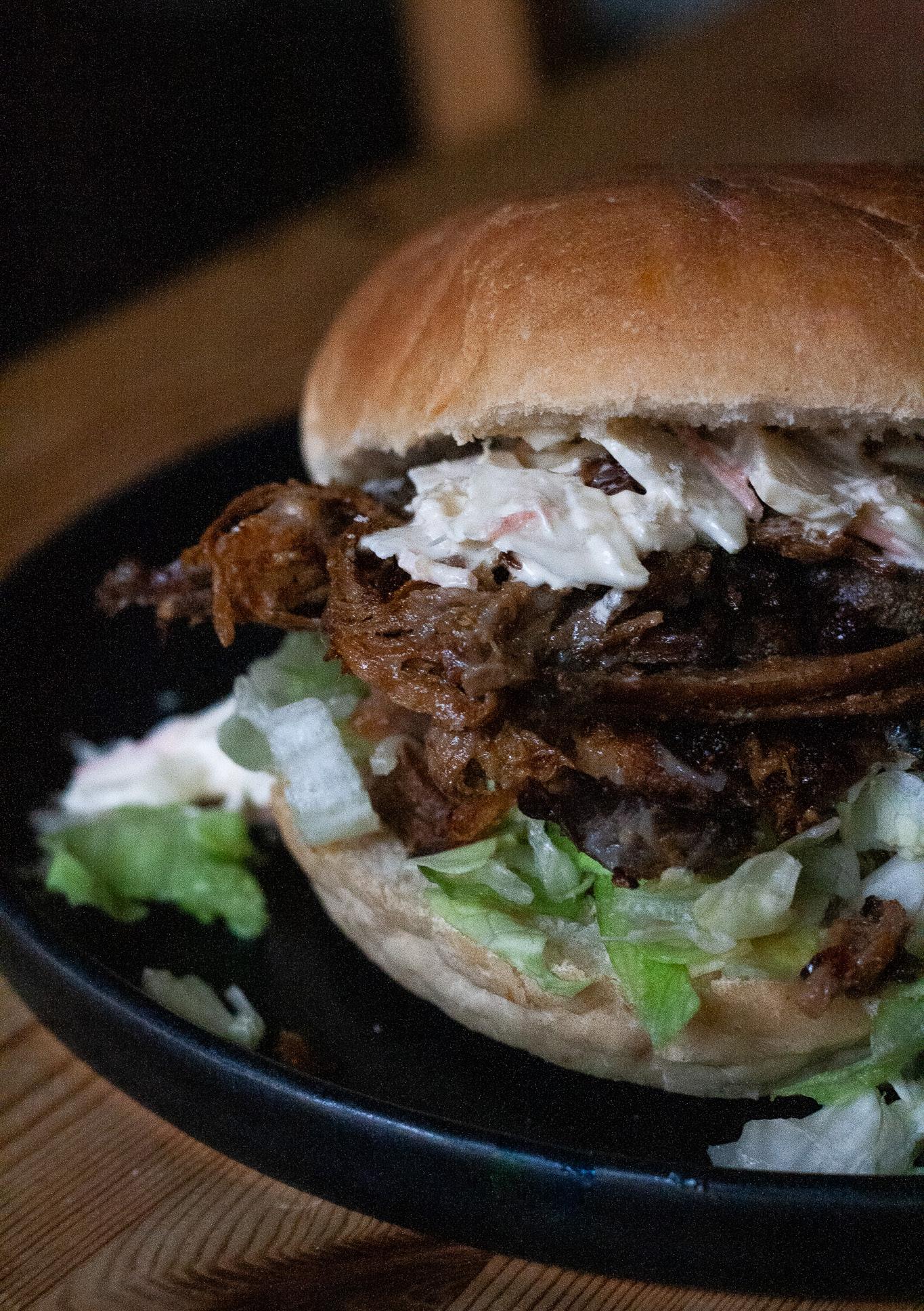
Heather Brown is a special officer for the Guild of Food Writers, and has worked in the food industry for 20 years. She is a food writer and photographer, offering one-to-one help to local businesses for content and websites.
All images © Heather Brown
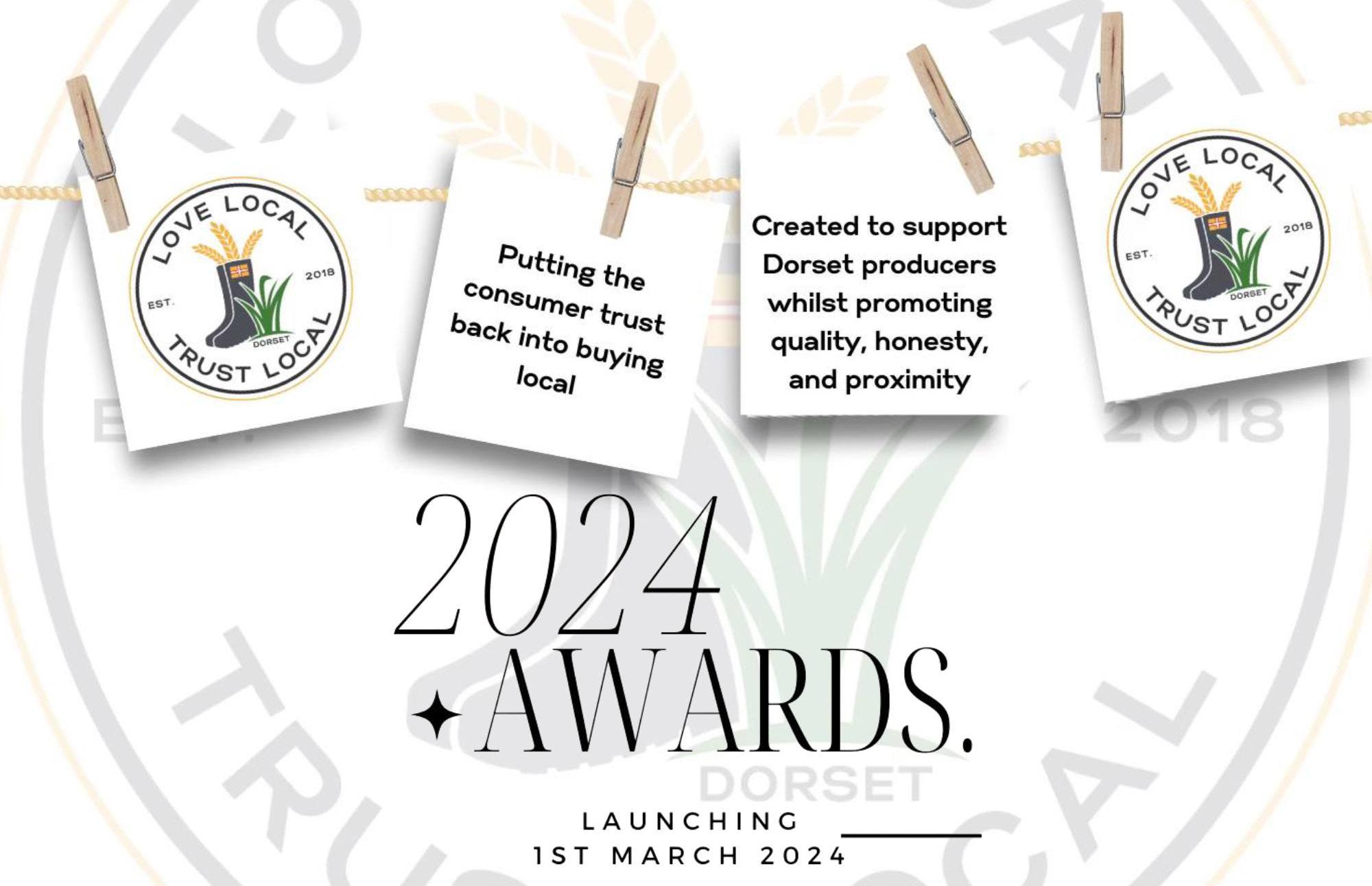
Celebrating Dorset sustainability: the Love Local Trust Local Awards are open to all Dorset farmers, fishermen and food producers
This is a significant year for Love Local Trust Local, building upon the momentum gained in 2023.
As we have approached the 2024 Awards launch day, anticipation grows for the launch of our new website. Designed to offer enhanced functionality and easier navigation, it will serve as a central hub for all Love Local Trust Local updates and information.
Today, 1st March, the 2024 Love Local Trust Local awards are open for entries. With 16 categories this year, including new ones recognising individual and business stories, we anticipate an exciting response. Entries will be open until early May, followed by judging – and tasting – through to June. The highlight of our calendar is always the awards ceremony, which will be on 3rd September and
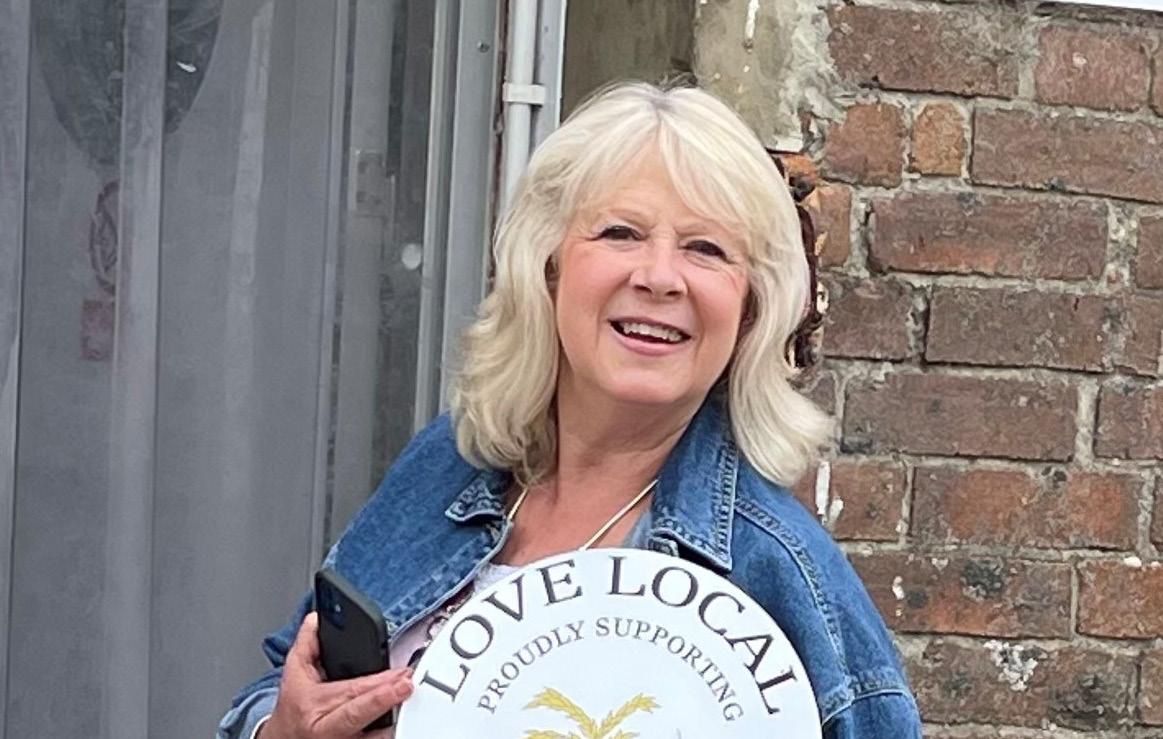 Barbara Cossins, founder of Love Local Trust Local
Barbara Cossins, founder of Love Local Trust Local
we’re excited it will be taking place in the Members Pavilion at the Dorset County Show, just outside Dorchester. The ceremony is being held during the build up to the County Show, and promises to amplify our message as well as celebrating our 2024 winners.
We are also thrilled to be participating in the Dorset Spring Show on 27th and 28th April – stay tuned for more details on our involvement.
Exciting plans
Looking ahead, we plan to launch a new directory for both sponsors and members, online and in print. Our goal is to facilitate connections and collaborations among individuals and businesses. We also aim to host workshops, fostering support and advice among our members and sponsors. We’ve also revamped our sponsor and membership packages to cater to businesses of all sizes. Detailed information is available on our website, where an easy online application process awaits. As a self-funded not-for-profit organisation, we deeply appreciate the support of our members and sponsors.
• For further enquiries, to join us or simply to connect, visit lovelocaltrustlocal.co.uk or email us at info@lovelocaltrustlocal.co.uk or find us on Facebook here.
108 The BV magazine, March 2024 FOOD & DRINK

Get your seeds on
Begin 2024’s gardening journey in March sowing seeds – a magical job that lays the foundation for a season of colour, says Charlotte Tombs
In March, as winter loosens its grip on the South of England and signs of spring really get going, the anticipation of seed sowing fills me with excitement. There’s an undeniable thrill that comes from witnessing the first seed germinate, a promise of new life and vibrant growth. With approximately eight weeks until the last frost, now’s the perfect time to kickstart the gardening season. If you haven’t grown from seed before, you really should give it a go; it’s so rewarding and so much cheaper than buying your plants ready-grown! One of the techniques I use for seed starting is a soil blocker. This ingenious tool creates tiny soil blocks, providing the perfect environment for seedlings to establish themselves. I love how efficient it is; 40 soil blocks neatly fit into a takeaway tub, and when covered with the tub lid, it transforms into a mini greenhouse, creating a warm and moist environment ideal for germination. Plus, you don’t waste seed or compost, or waste time pricking out.
What to pick?
As I prepare to sow my seeds, I carefully select from an array of varieties suited for early spring planting. Calendula, with its cheerful orange and yellow blooms, is a must-have for adding a pop of colour to the garden. Cornflowers, in shades of blue, evoke a nostalgic charm reminiscent of English cottage gardens. Malope, with its delicate petals in a deep Vulcan red and white, adds a touch of whimsy to any flower bed. These all make great cut flowers – in all honesty I don’t grow anything
that doesn’t make a good cut flower or smell amazing... preferably both! Sweet peas are another favourite of mine, with their intoxicating fragrance and delicate tendrils that climb effortlessly up trellises and fences. Annual phlox, with its clusters of vibrant blooms to attract pollinators, adds a burst of colour to the garden. Quaking grass, with its graceful seed heads that sway in the breeze, adds movement and texture to floral arrangements, and statice, with its papery blooms in shades of purple, blue and white, is perfect for drying and preserving.
A little bit of magic
As I sow each seed into its designated soil block, I can’t help that buzz of excitement, knowing that in just a few weeks, these tiny seeds will burst forth with life, transforming into robust seedlings ready to be transplanted into the garden. I water each takeaway tub, ensuring that the seeds are evenly moistened, and then cover the tub with its lid, creating a cosy haven for germination to take place. Some seeds require dark for germination, some light, so do read the seed packet. Seed sowing in March is more than just a job on your list; it’s a celebration of nature’s resilience and the promise of new beginnings.
As I look forward to the blooms and abundance that lies ahead, I’m reminded of the joy that comes from working with Mother Nature through the seasons of the year. And as I witness the first seed germinate, I’m always filled with a sense of wonder and gratitude.
109 The BV magazine, March 2024 OUT OF DOORS Charlotte offers workshops throughout the year - please see northcombe.co.uk for further details.
An English garden filled with flowers you can grow cheaply from seed in old takeaway tubs


The Voice of the Allotment

All images: Barry Cuff
Allotment update: February was soggy
The greenhouse is an oasis amid the continuing deluge, says Barry Cuff – but the jobs, like the veg, just keep coming
It is raining again as I write this – February has been a wet month so far, with more than four inches of rain, bringing the total to nearly eight inches for the year.
On the allotment
There have been very few days this month when work could be carried out. Soil structure can be damaged by moving around on saturated ground, and most work was done from the paths. All four plots were edged, a total of about 380 feet.
It has also been too wet and windy to burn the fruit bush prunings and the hazel trimmings; we can only have a fire on a still day as we are surrounded by houses and commercial buildings.
In the greenhouse
It’s always nice to work in the greenhouse when outside jobs are not possible. All the staging and glass was cleaned and the soil from last year’s pots emptied out. The pots were then all washed in soapy water and made ready for this year. Most of our vegetables are sown in trays and
OUT OF DOORS
Celeriac is still being harvested from the allotment in February

plug trays, to be planted out when large enough. During the month we have sown Red Drumhead cabbage, a second lot of sweet peas and nine half-trays of broad beans – three varieties this year: Masterpiece Green Longpod, Witkiem Manita and Bunyards Exhibition. Inside the house, the sweet peppers on our bedroom windowsill that were sown in January have been pricked out into individual small pots. They are at the cotyledon/first true leaf stage.
We have also had a bit of a mouse problem, so have set a few traps.
Salads
Our Oriental Leaves have finished, but we are still harvesting Red and Blue Moon radishes from the plot, together with celeriac and the odd spring onion.
We have this month sown a tray of agricultural peas in the greenhouse for a ‘cut and come again’ addition to our salads. We have also sown a tray of mixed spicy leaves for the same purpose.
The chicons are doing well – a fourth cut was made on the 20th.

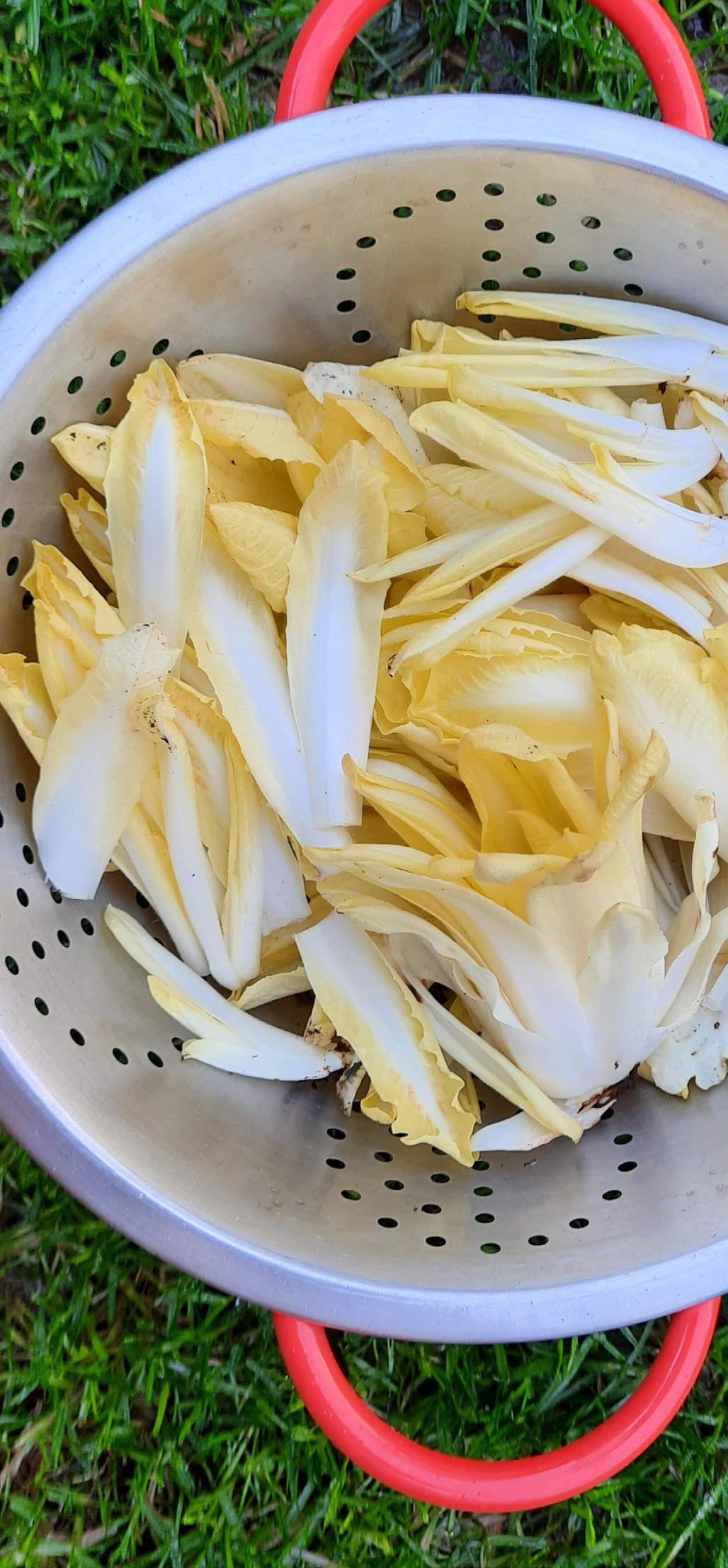
The chicons make a reliable and tasty winter salad
Vegetables
Fresh from the plot, we have harvested carrots, parsnips, leeks, cauliflower, purple sprouting broccoli, sprouts, romanesco and celeriac. From our store we have eaten potatoes, onions, butternut squash and hazelnuts (shelled and stored in Kilner jars). From the freezer we’ve enjoyed our own peas, sweetcorn and broad beans.
Potatoes
Our new seed potatoes are chitting well in trays in the garage. We planted one Jazzy in a potato pot in the greenhouse on the 19th. Hopefully March will be a drier month.

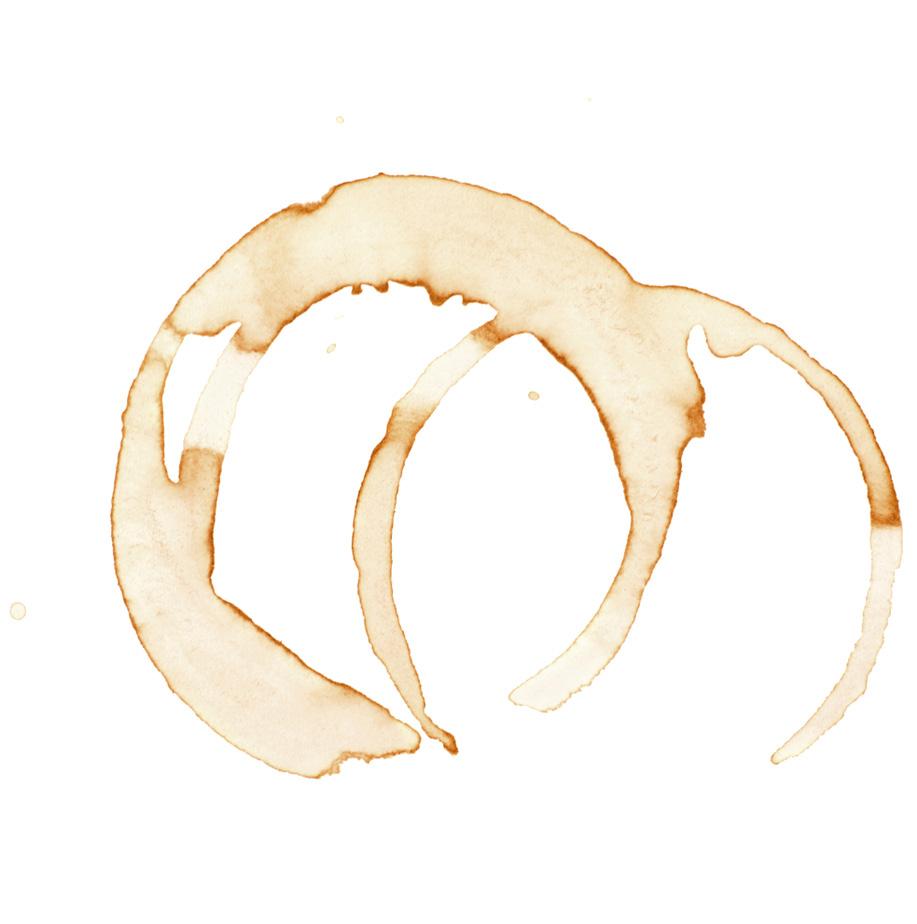
The BV magazine, March 2024 NEWS

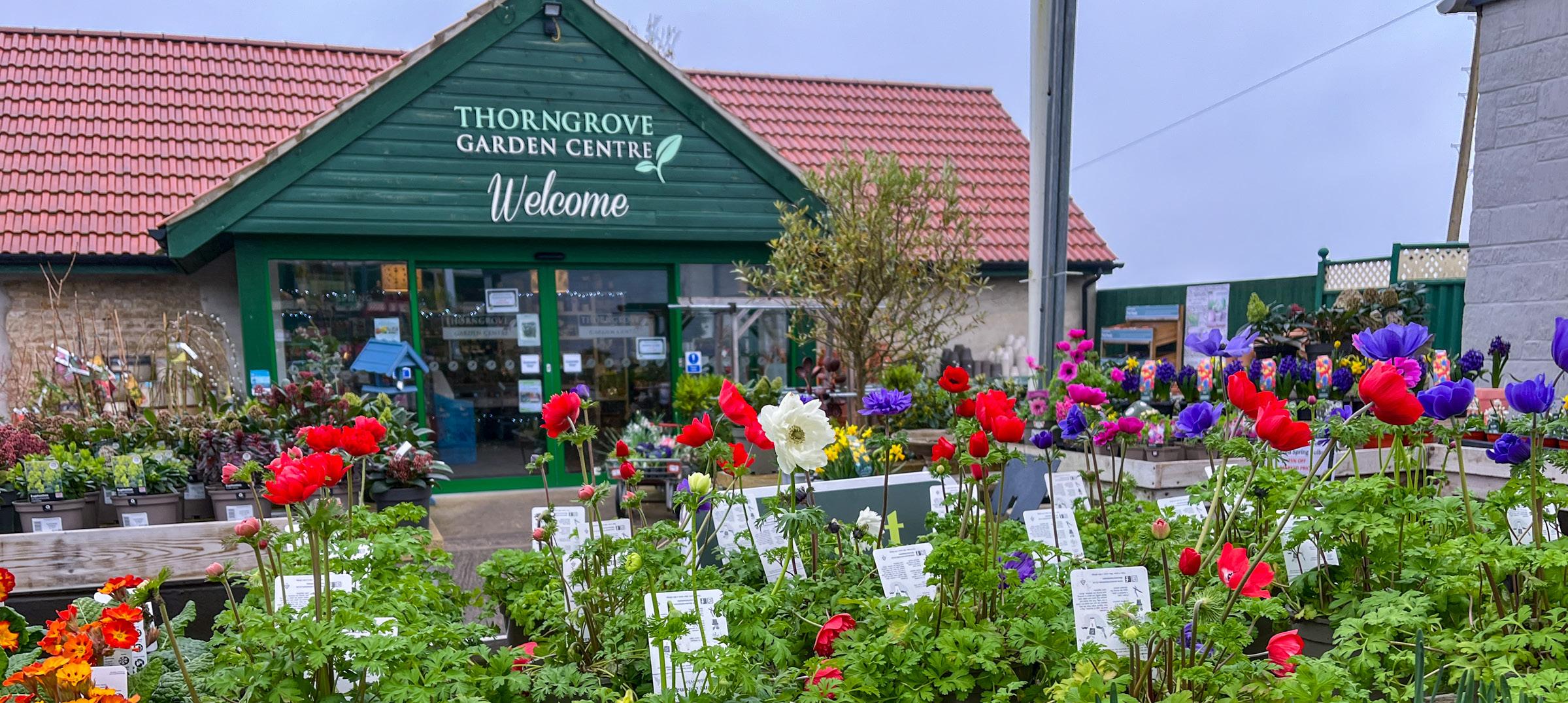
Planting season is upon us!
There is an air of new season excitement at Thorngrove this month. You can’t keep a good gardener down, no matter how much rain comes their way Hello, spring… are you here yet?!
Despite the vibrance that’s been on display here at Thorngrove in February (daffodils, hyacinth, anemones and more), a few extended bouts of rain have made it feel like the winter has dragged on a little bit longer than we’d like.
Hopefully you’ve still got some garden goals planned for this year – don’t let the rain hinder your progress! The new season is arriving and we’re on hand to help you make the most of your garden. Take some time in March to tick something off your list, even if it’s something small – like finally getting the lawn mowed and tidied, or picking out your summer bulbs (planting season is upon us!). Or maybe you’re taking a bigger step and setting about filling a space with new shrubs. Not only does ticking something off that list feel good (this is actual science!), any small task is another step towards hitting those gardening goals and making your home feel more YOU – plus it’ll give you something to show off to friends and family the next time they visit!

Speaking of family – Mother’s Day is almost here! Sunday 10th March. The Secret Garden Café is almost full for our Mother’s Day menu, but if you’re looking for that special gift, we’ve got you covered. Cristi in the shop put the finishing touches to our Mother’s Day display last week, and the range is beautiful. Whether you’re looking to fill a hamper or just pick-up a small token of appreciation, we’d love to know that we played a small part in treating mum right this year, so do come in and have a browse at the gifts.
More BIG news for us this month, March is the launch of our brand new loyalty scheme! FREE to sign up for, giving you a new loyalty card, allowing you to earn points across all purchases made in the garden centre and the Secret Garden Café, not only here at Thorngrove in Gillingham, but also at our sister site in Moreton, The Walled Garden and the Dovecote Café. Pop in and speak to staff to find out more! As we always say, our connection with the local community is something we continue to make stronger, and we’d love for you to continue to visit us and sign up! (again, it’s FREE!)
Looking ahead to Easter, crafts for children will return with tickets going on sale very soon. Plus Nina from Green Spiral willow is back for another workshop, this time guiding you to the creation of a trio of bird-feeders. Not to be missed! Booking details on our website.
Last but not least, our OPEN DAYS for Employ My Ability are in April (16th and 17th). Find out more about the opportunities we offer young people with SEND. Guided tours of the learning environments available – full details at employmyability.org.uk
• For all the latest news and updates, offers and more see thorngrovegardencentre.co.uk
112
OUT OF DOORS ADVERTORIAL

It’s time to get moving
At last, there are jobs waiting on your list this month – Pete Harcom suggests a good start now will prevent things getting out of hand later
At last, spring is in the air – but be careful, don’t get too excited and start buying bedding plants too early. It may be best to wait until late March before you purchase too many tender plants such as fuchsias and pelargoniums, unless you have some good frost protection like cloches or a cold greenhouse. It can be late April or even May before night-time frosts are actually over.
Jobs for March
• Annual flowers can be sown from this month onwards – just rake the soil to a fine tilth on a dry day before you sow them. Watch the weather forecasts for frosty nights and protect if necessary with cloches or horticultural fleece – even old net curtain works!
• Using a hoe may be all that is needed to keep weeds down before they get a hold in your borders. If it’s done in early March, when weeds in the borders are small, it will save a lot of work in the future. After the weeding is done, and if the soil is moist, it is a good idea to cover with a thick layer of mulch or garden compost.
• March is the last chance to plant bare-rooted trees and shrubs. Now the soil is warming up, shrubs will soon begin to grow.
• Fuchsias that were potted up in a cold greenhouse should start budding soon – start watering, sparingly at first, and prune away unwanted old growth.
• Try and warm up your potting soils by storing them in the greenhouse or shed before starting off seeds.
• Top up any potted plants with an inch or so of fresh soil.

Pest control
Even a tiny garden pond will encourage frogs, birds, slowworms and beetles, and all these help to keep those slug and snail populations down without resorting to pellets
Slug pellets are a problem for hedgehogs and frogs as they eat the snails and slugs that have been killed by the slug pellets and are then poisoned themselves. To reduce your reliance on slug pellets try creating even a small wildlife pond – they encourage wildlife in general, of course, but particularly frogs, birds, slow worms and beetles... and all these help to keep slug and snail populations down. Remember to clean up the inside of any bird nest boxes before the garden birds start exploring!
Pruning
Prune Group 1 winter or early spring flowering clematis after they have flowered. Large
flowered clematis (Group 2) can be pruned slightly, as they flower on the current year’s growth. The late summer flowering clematis (Group 3) should be cut now to around 30cm (1ft) above ground level, as they flower on this year’s growth. If you don’t prune these early, they may produce flowers too high on the plants for you to enjoy!
Prune bush and shrub roses hard. Cut back any Cornus (dogwood) in the garden now for more colourful stems next year, and also prune your winter-flowering jasmine (Jasminum nudiflorum) when it finishes flowering, to similarly encourage new growth for next year’s blooms.
And don’t forget – the clocks will go forward on 31st March …
113 The BV magazine, March 2024 OUT OF DOORS
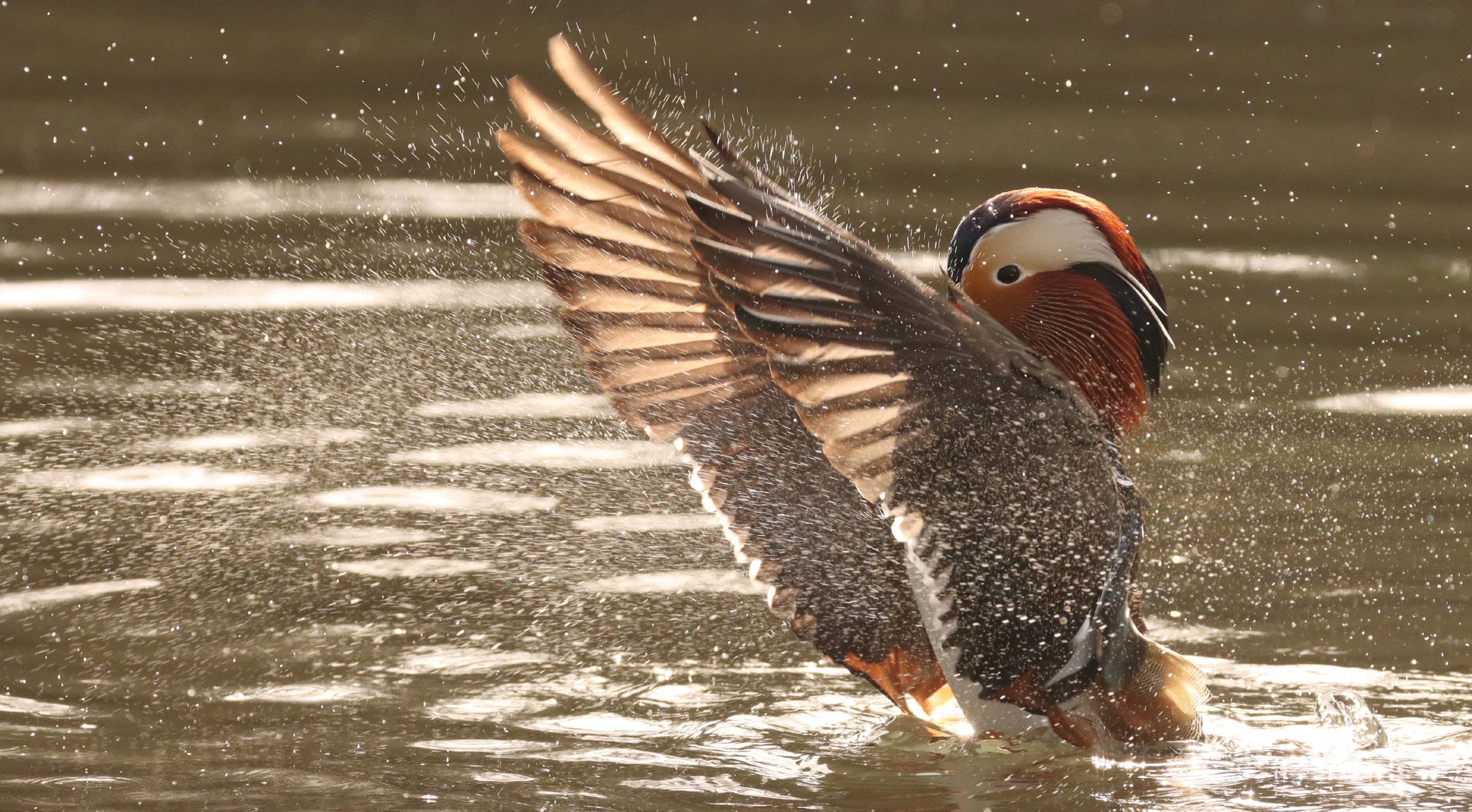
 The gates of Valhalla Adie Ray
The gates of Valhalla Adie Ray
READER’S PHOTOGRAPHY
Mandarin conductor making a splash Becki Cooke

115 The BV magazine, March 2024 NEWS
READER’S PHOTOGRAPHY
Low level turn Ian Nelson

Peach Cobb-ler Charlotte Baker
We welcome photography submissions from readers - the only rule is that they must have been taken locally in the last month. Our cover shot is always selected from our submissions pile. If you’d like to join in, please share it in The BV community Facebook Group or simply email it to us on photos@bvmagazine.co.uk
Angry Cob Meyrick Griffith Jones

READER’S PHOTOGRAPHY

Sturminster Newton Mill
David Gorman
 Skeleton reflections
Skeleton reflections
READER’S PHOTOGRAPHY
Helen Moore

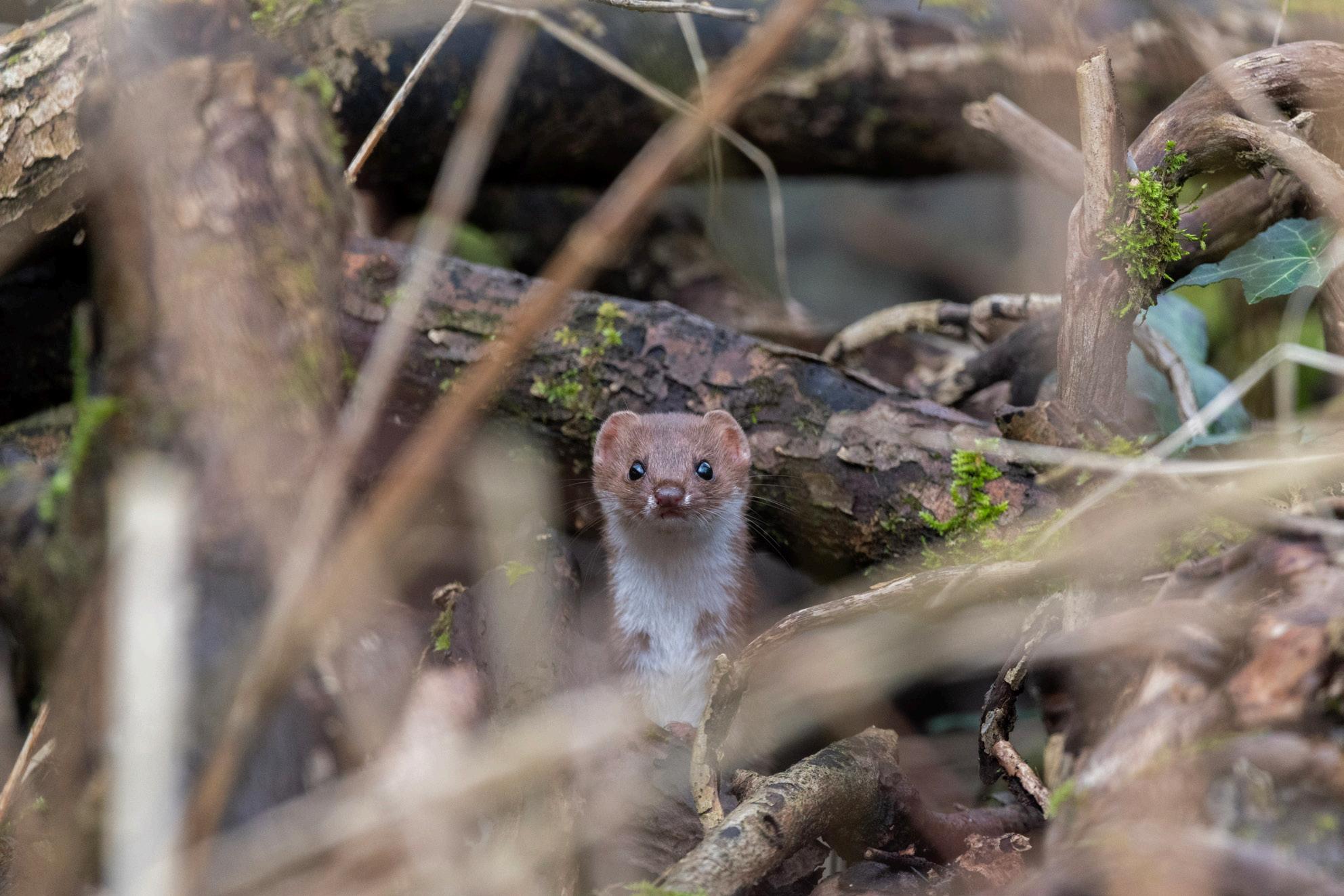 Spotted!
Spotted!
READER’S PHOTOGRAPHY
Natalie Dunn
Grey wagtail
Mike Howson


READER’S PHOTOGRAPHY
Maksymilian Michalczewski To Brownsea
Ships in the night Ray Sexton
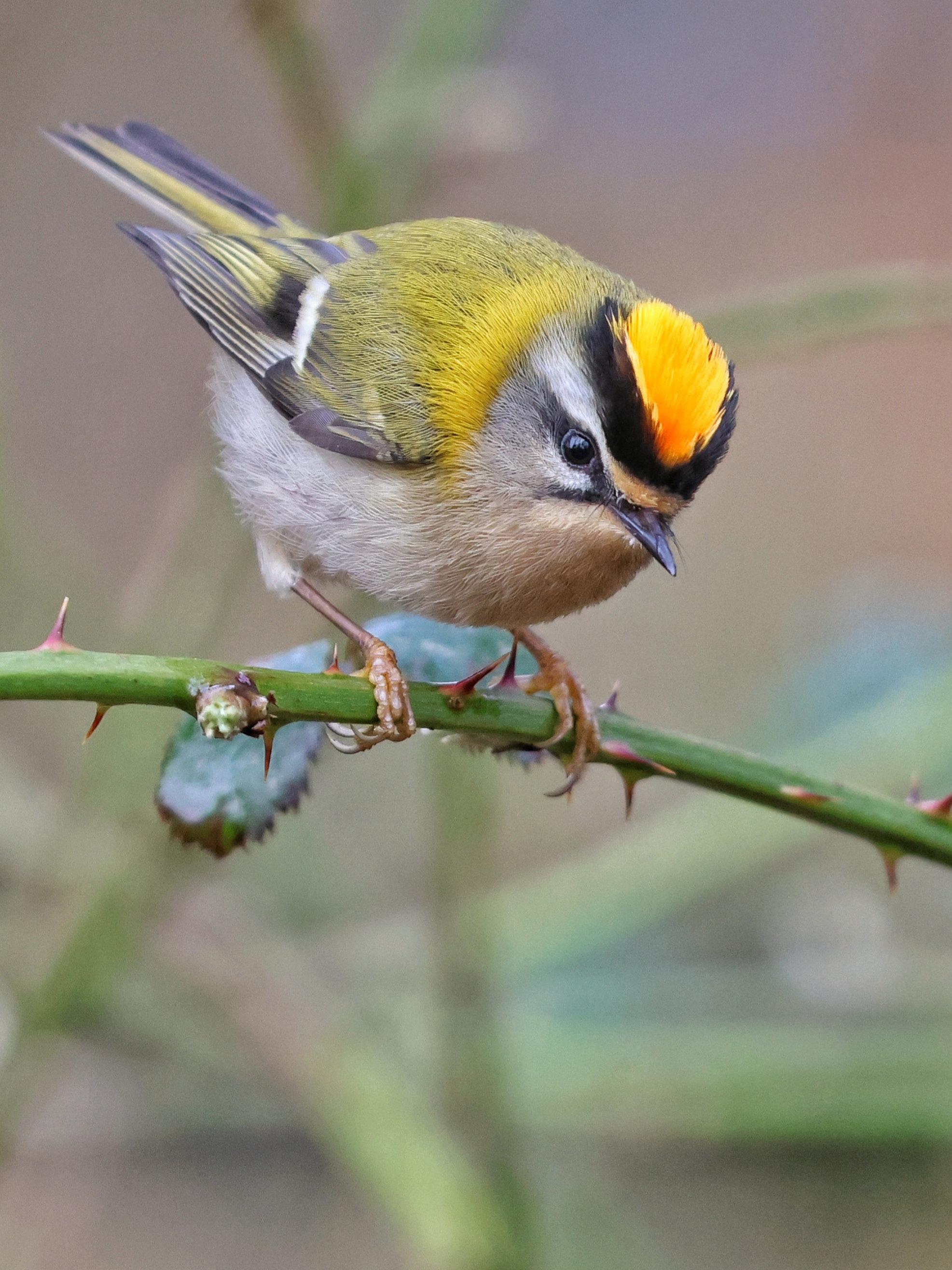
Firecrest Sharon Towning
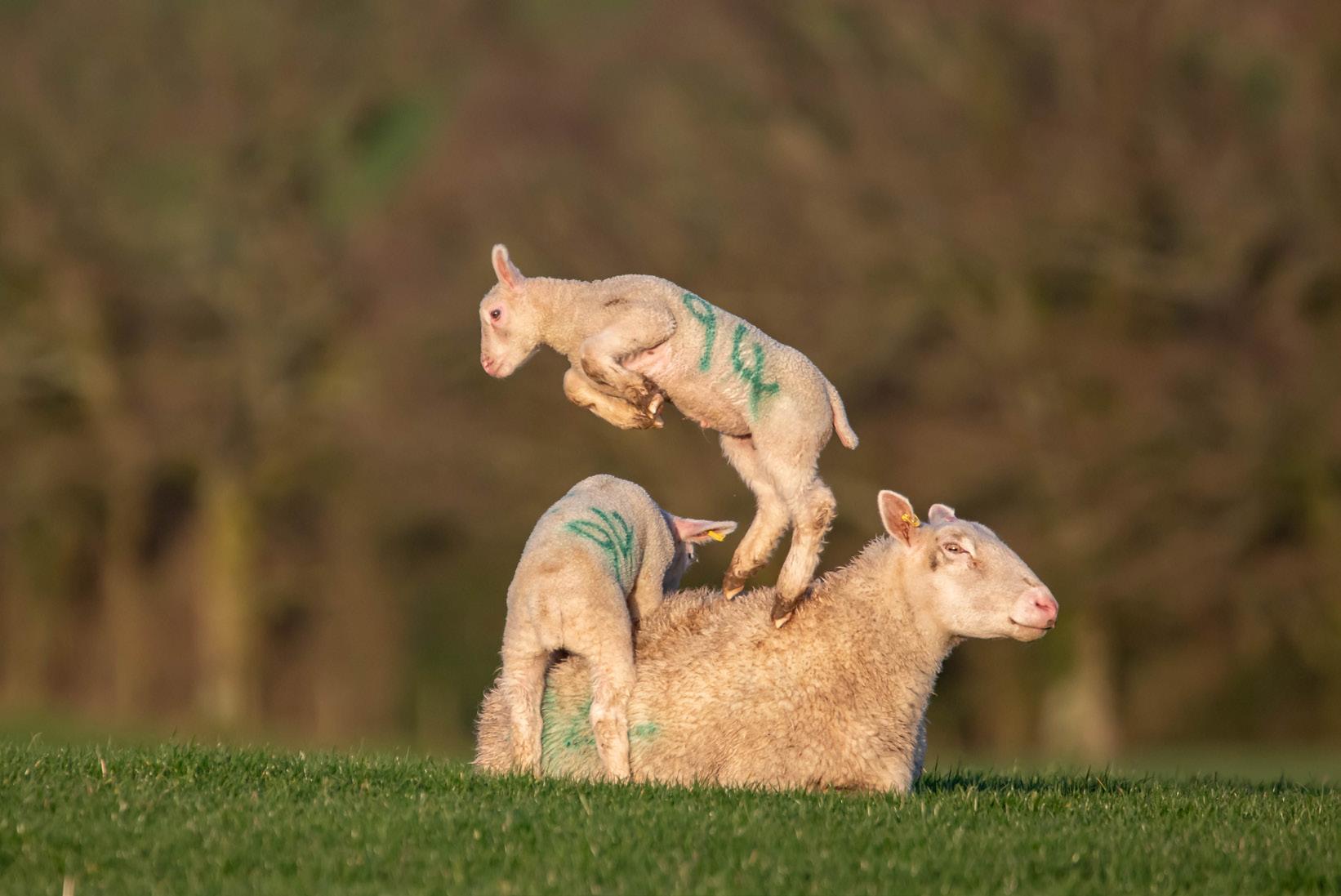
It’s stotting season! Nicky Newman
READER’S PHOTOGRAPHY

121 The BV magazine, March 2024 JOBS

https://bvmag.co.uk/FacilitiesAssistant



122 The BV magazine, March 2024 JOBS




123 The BV magazine, March 2024 JOBS




Join the Sturfit Legacy: Shape the Future of Community Wellness in Sturminster Newton!
For over 15 remarkable years, the Sturminster Newton Leisure Centre, operated by the charity Sturfit, has stood as a testament to community spirit and collaboration
At its core, Sturfit isn't just a leisure centre It's a movement, a commitment, and a promise to champion the wellness and sports needs of Sturminster Newton and its neighbouring parishes
Here's What We Believe in and Strive For:
✅ An all-accessible leisure centre where the entire community finds its fit
✅ Top-notch sports facilities, especially curated to aid our local schools and vibrant community groups
✅ A proactive approach to holistic health, ensuring everyone, irrespective of age or background, experiences the joys of fitness and well-being
Are YOU Our Next Trustee?
As we stand on the brink of our next exciting chapter we ' re on the lookout for two or three dynamic individuals who share our vision
As a trustee, you'll not only partake in, but also actively shape the transformative journey of Sturfit It's more than a position; it's an opportunity to sculpt a legacy, making lasting contributions that resonate with every home in our community
Who's the Perfect Fit?
No need to be a sports enthusiast or carry prior experience! What we treasure most is your unique life story, the diverse skills you bring, and an undying passion for community betterment
Feeling the Call?
Think this could be your calling? Let’s chat Drop a note to Courtenay@sturfit org telling us a bit about yourself Join us and make a difference!
124 The BV magazine, March 2024 JOBS
PROPERTY SPECIAL If you want everyone dancing, a glitter ball on your casket and a camper van hearse, have it. It’s your funeral. Pre-paid funeral plans Our bespoke, pre-paid funeral plan records the way you want to be remembered and protects your loved ones from any unnecessary burden and costs. Visit us at funeralcare.co.uk or call us on 0800 243 380. Authorised and regulated by the Financial Conduct Authority FP0017

126 The BV magazine, March 2024


Available 24 hours Personal service day & night. Pre-payment plans, memorials, private chapel of rest. Water Street Mere BA12 6DZ 01747 860361 www.lchillandsonfuneraldirectors.co.uk
M a r c h i s a t o m b o y w i t h t o u s l e d h a i r , a m i s c h i e v o u s
s m i l e , m u d o n h e r s h o e s , a n d a l a u g h i n h e r v o i c e .
Hal Borland
–
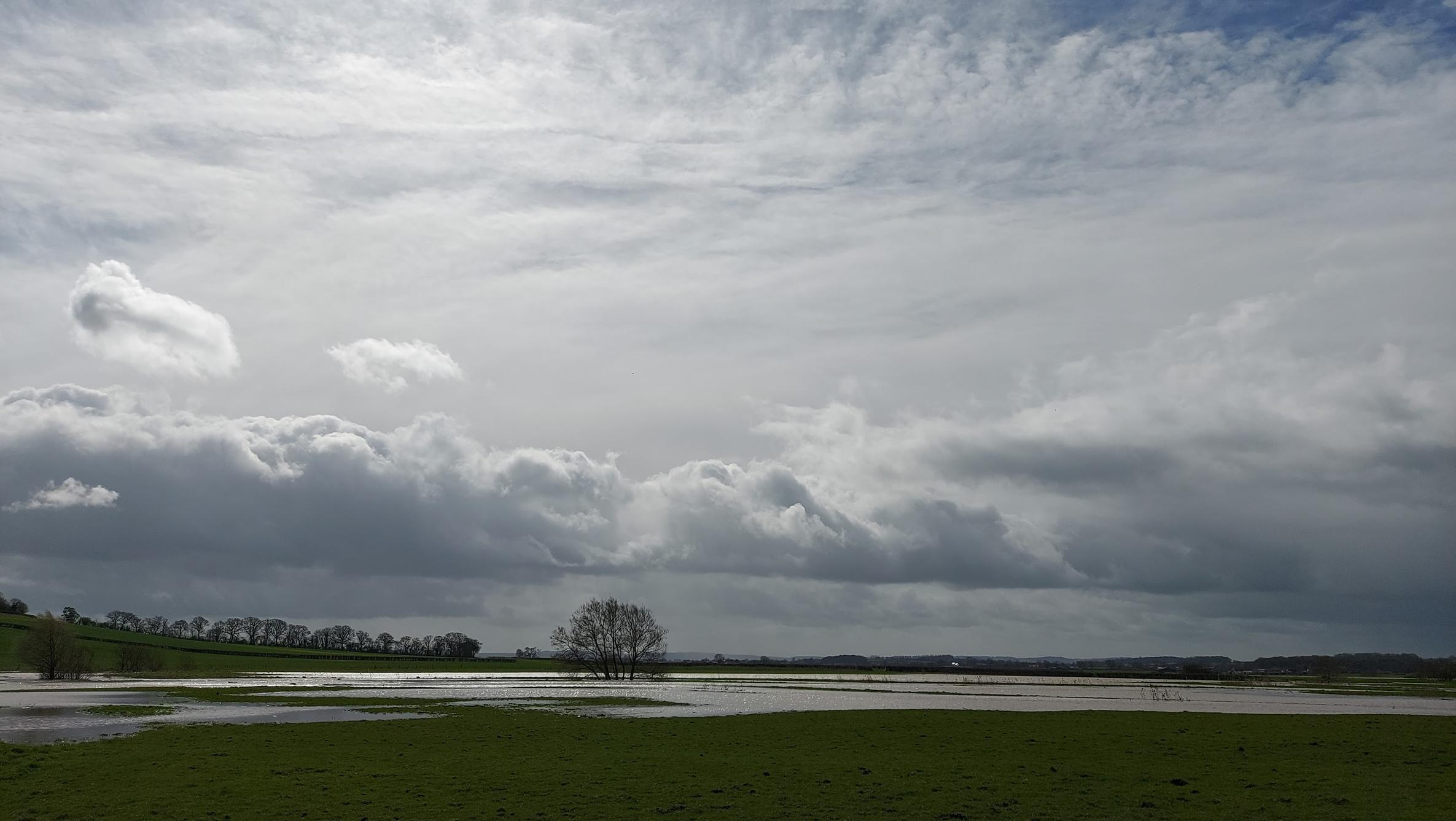
G O T S O M E N E W S ?
O R D O Y O U T H I N K A L O C A L ( O R
Y O U R O W N ) B U S I N E S S W O U L D
M A K E A G O O D F E A T U R E ?
K N O W S O M E O N E D O I N G G O O D
T H I N G S T H A T W E S H O U L D
T A L K A B O U T ?
S e n d a q u i c k e m a i l t o e d i t o r @ B V m a g a z i n e . c o . u k
W A N T T O A D V E R T I S E ?
G e t i n t o u c h w i t h C o u r t e n a y t o c h a t a b o u t w h a t y o u ' r e l o o k i n g f o r :
a d v e r t i s i n g @ B V m a g a z i n e . c o . u k
P R O D U C T I O N
S C H E D U L E :
0 1 2 5 8 4 7 2 5 7 2 5 t h A p r i l ( d e a d l i n e 2 9 t h M a r c h )
N e x t P u b l i c a t i o n D a t e :
T h e n . . . 3 r d M a y
7 t h J u n e
T h e B V p u b l i s h e s o n t h e f i r s t F r i d a y o f t h e m o n t h , a n d t h e a d v e r t i s i n g b o o k i n g d e a d l i n e i s a l w a y s t h e F r i d a y p r i o r t o p u b l i s h i n g














 Deadvlei, Namib Desert
Deadvlei, Namib Desert





















































































































































































































 Barbara Cossins, founder of Love Local Trust Local
Barbara Cossins, founder of Love Local Trust Local












 The gates of Valhalla Adie Ray
The gates of Valhalla Adie Ray




 Skeleton reflections
Skeleton reflections

 Spotted!
Spotted!




















